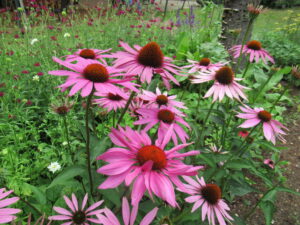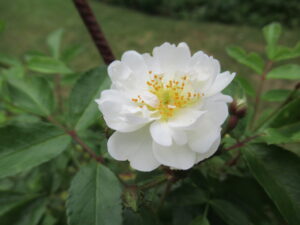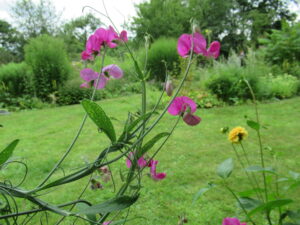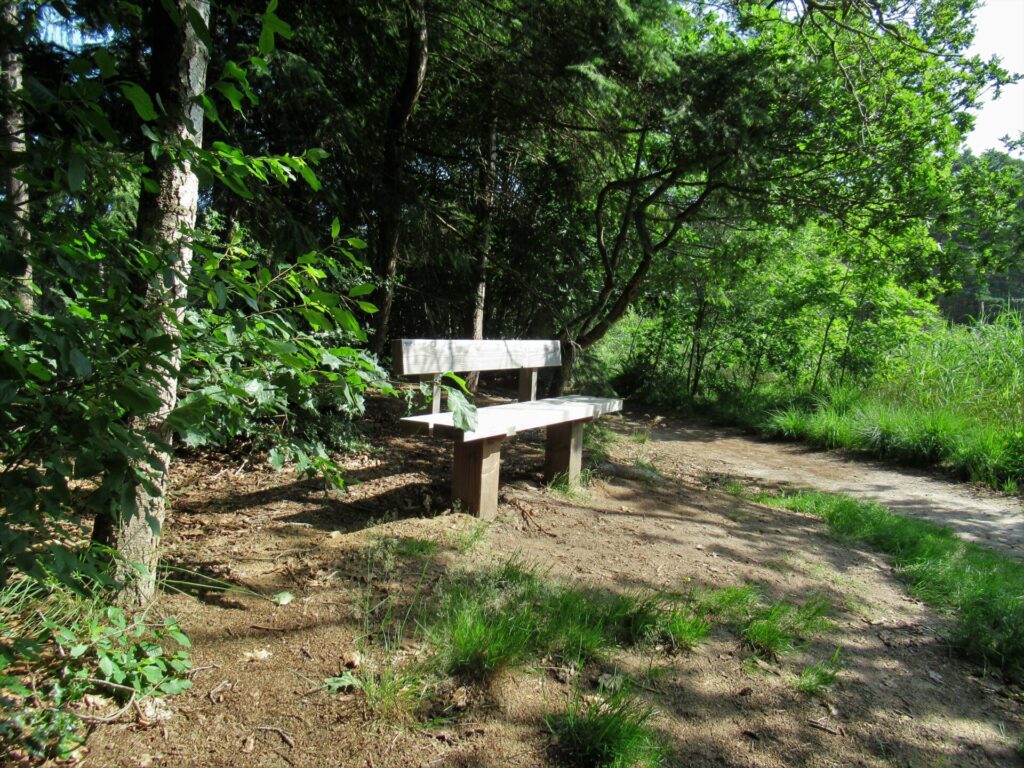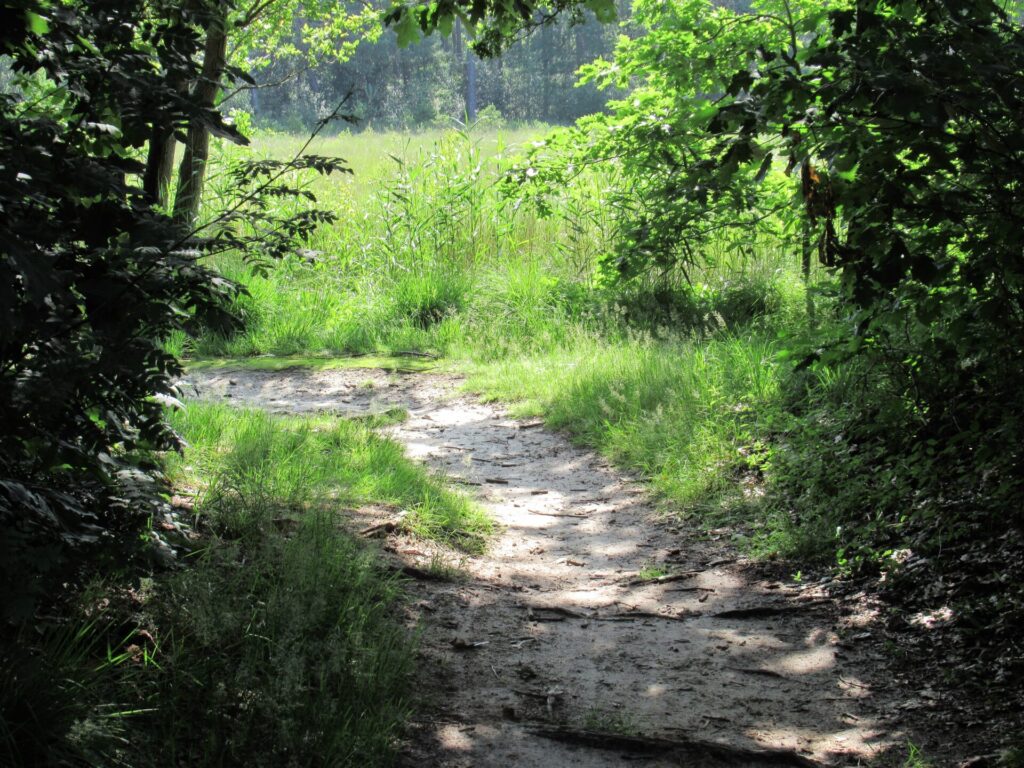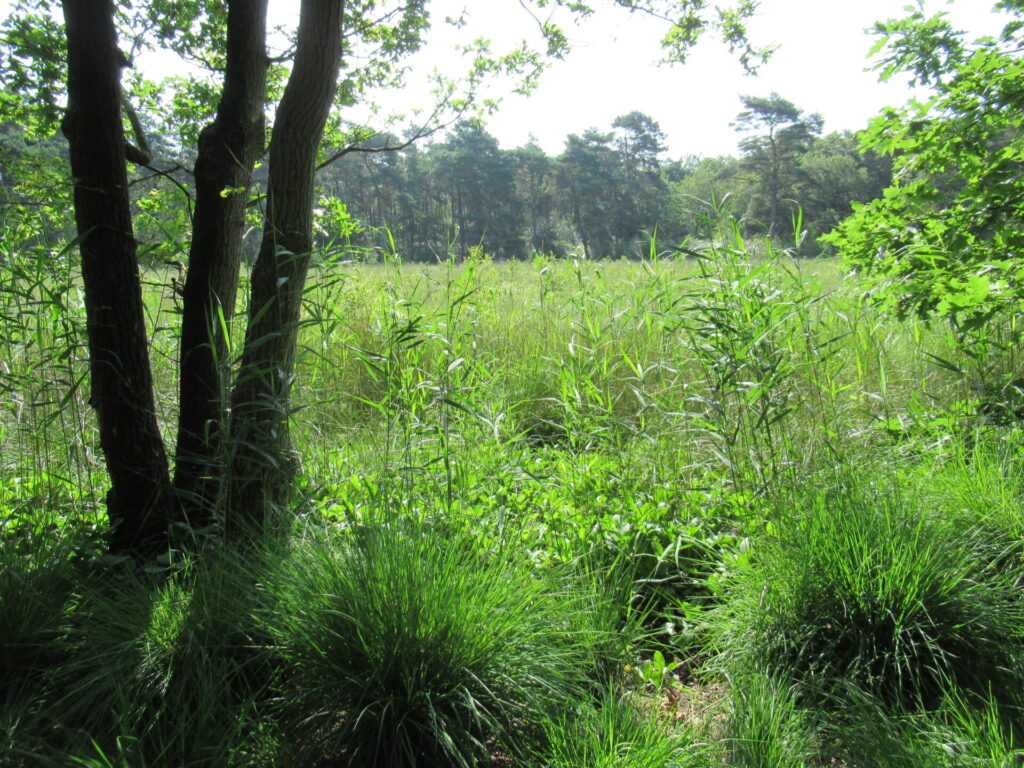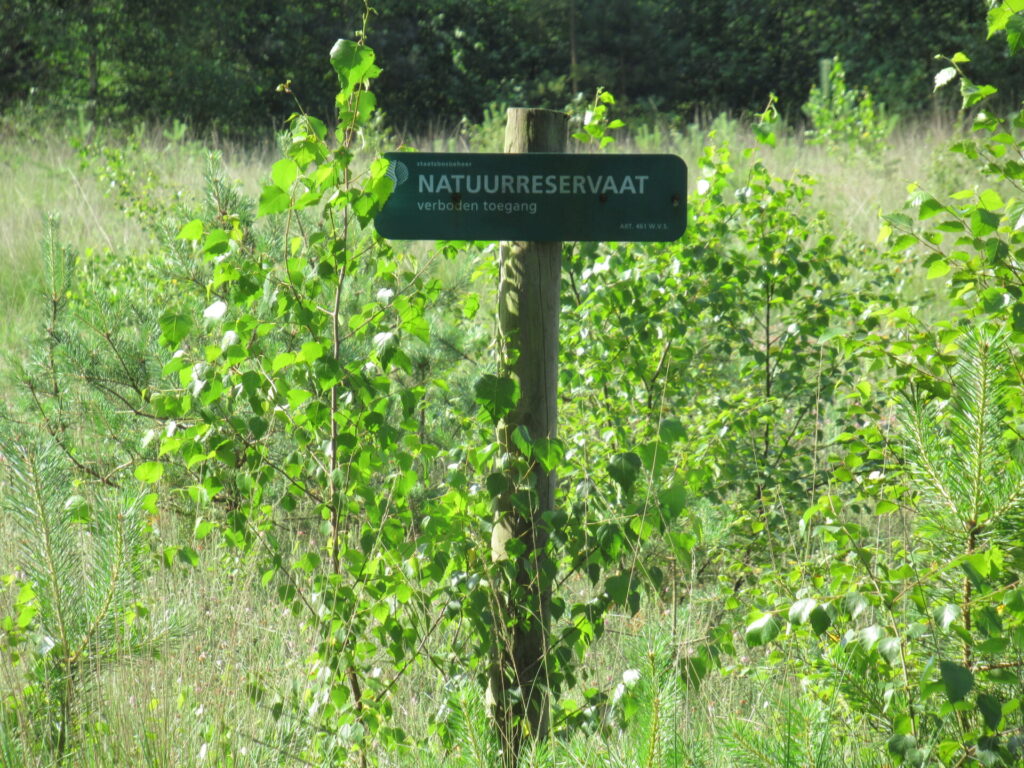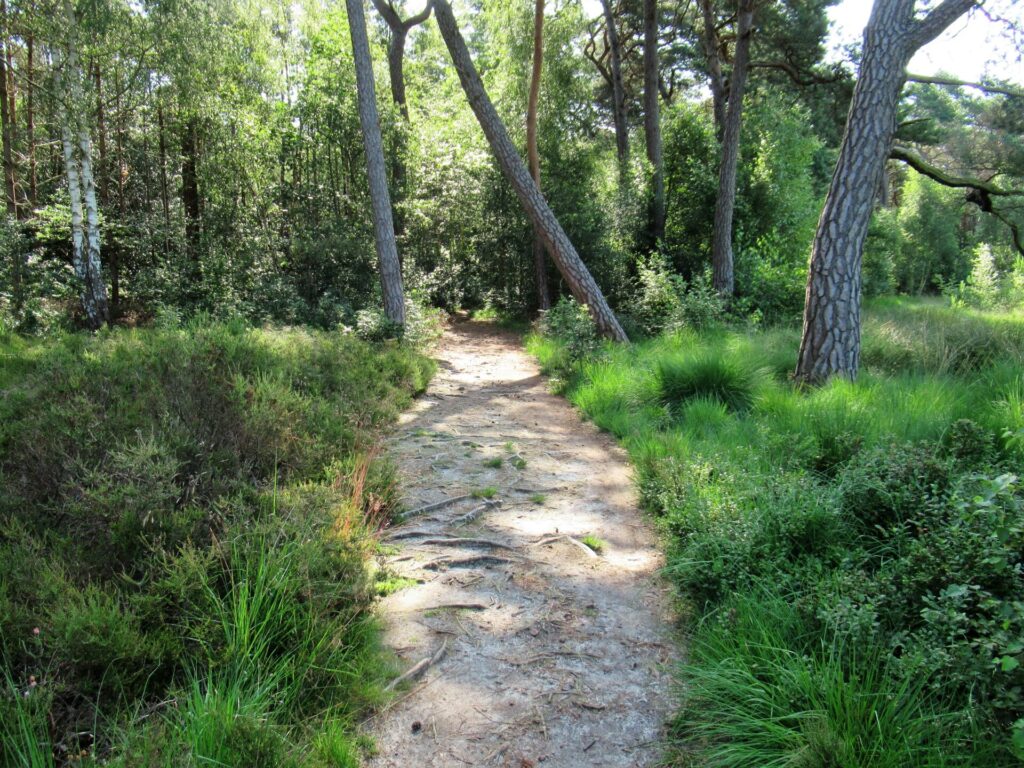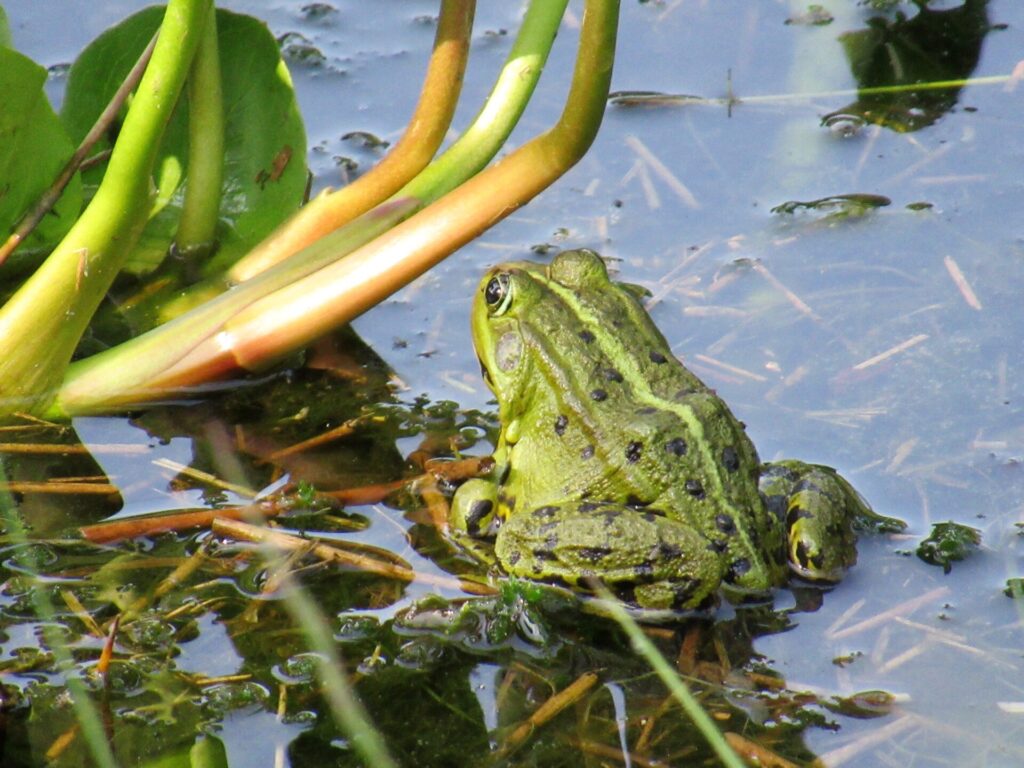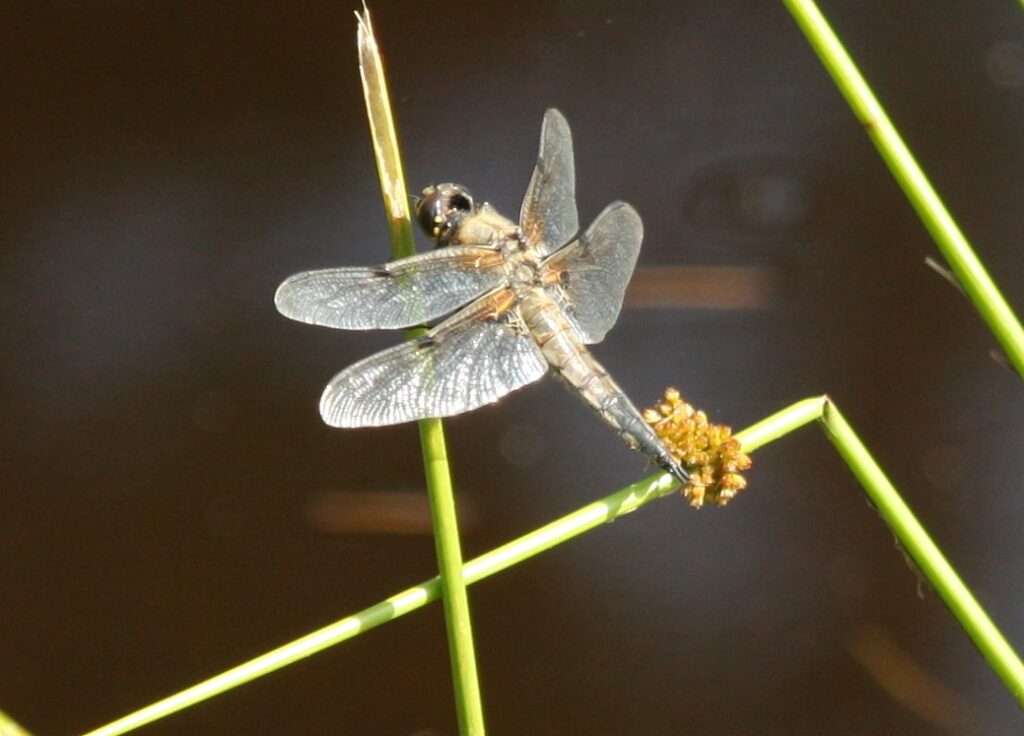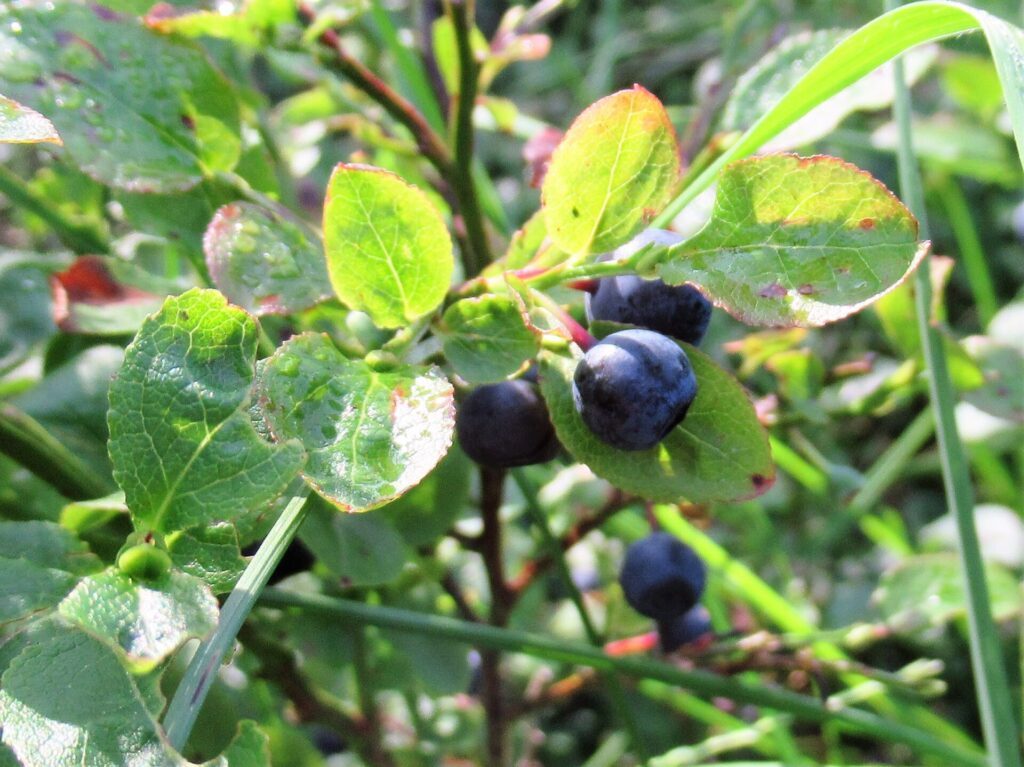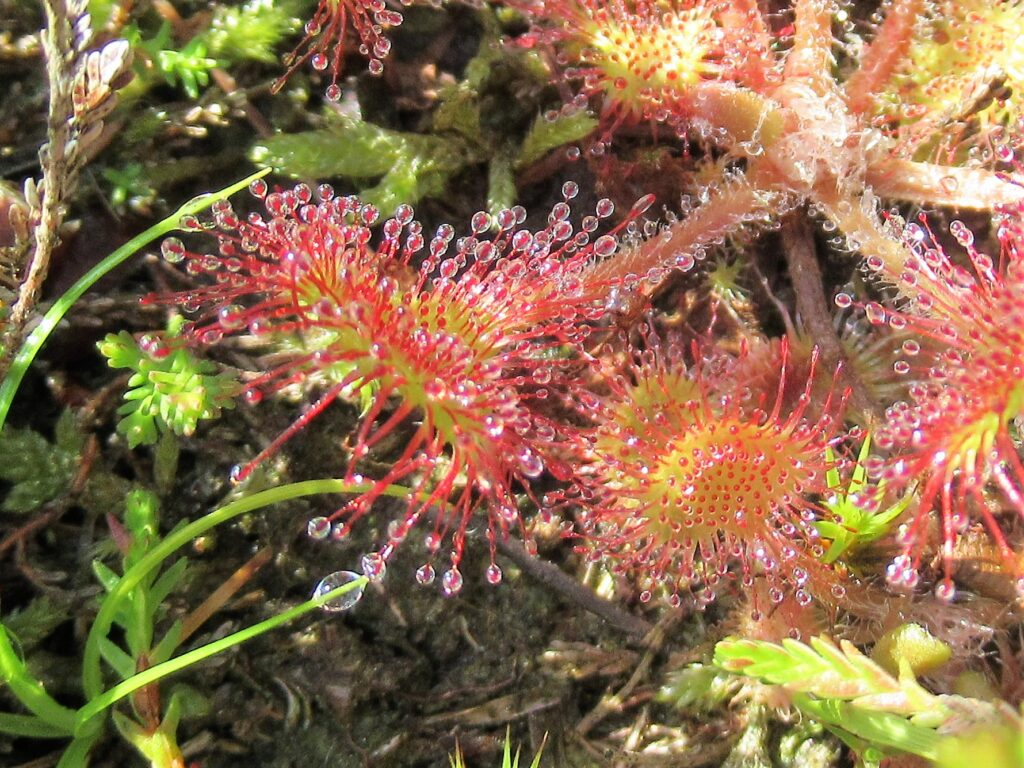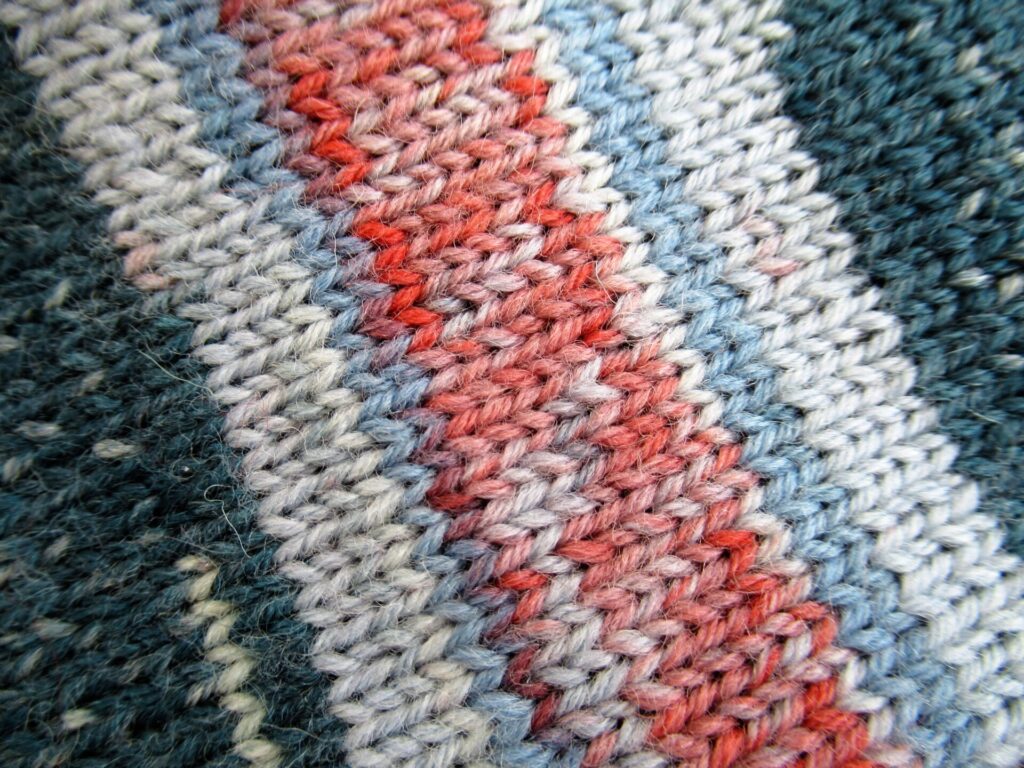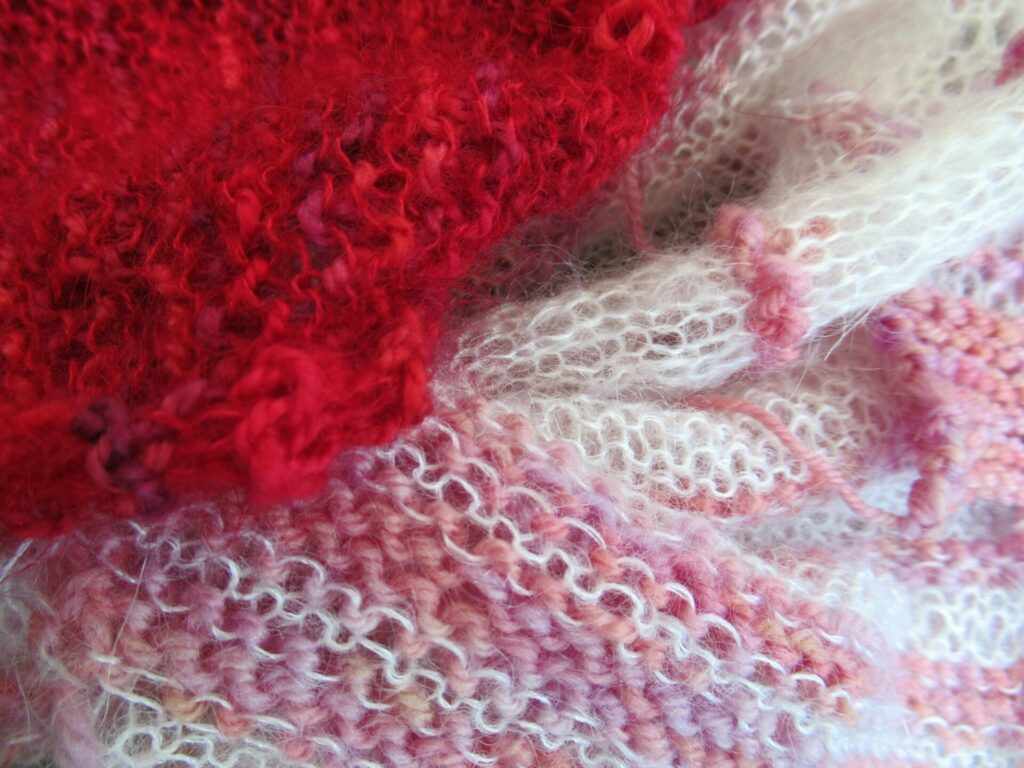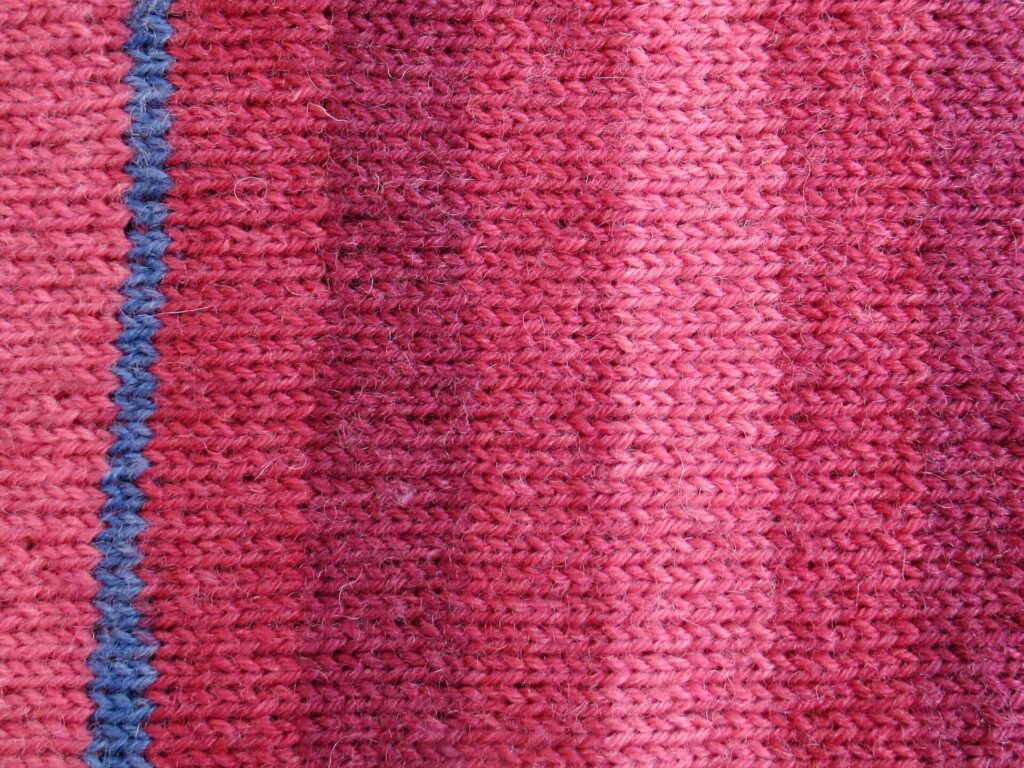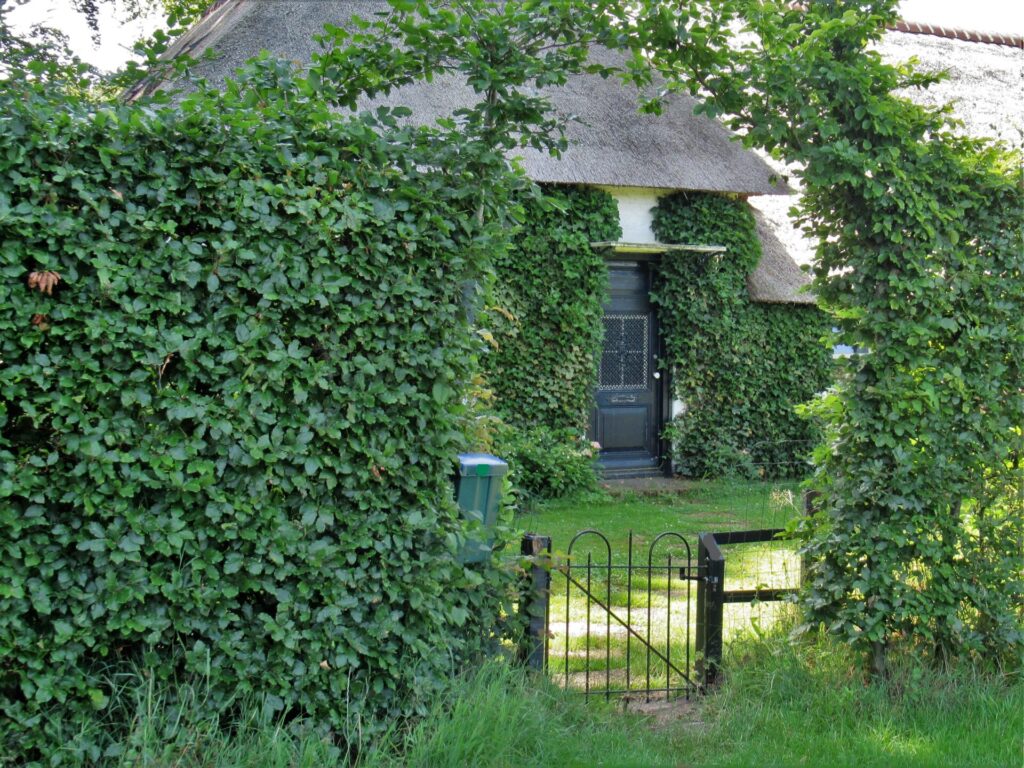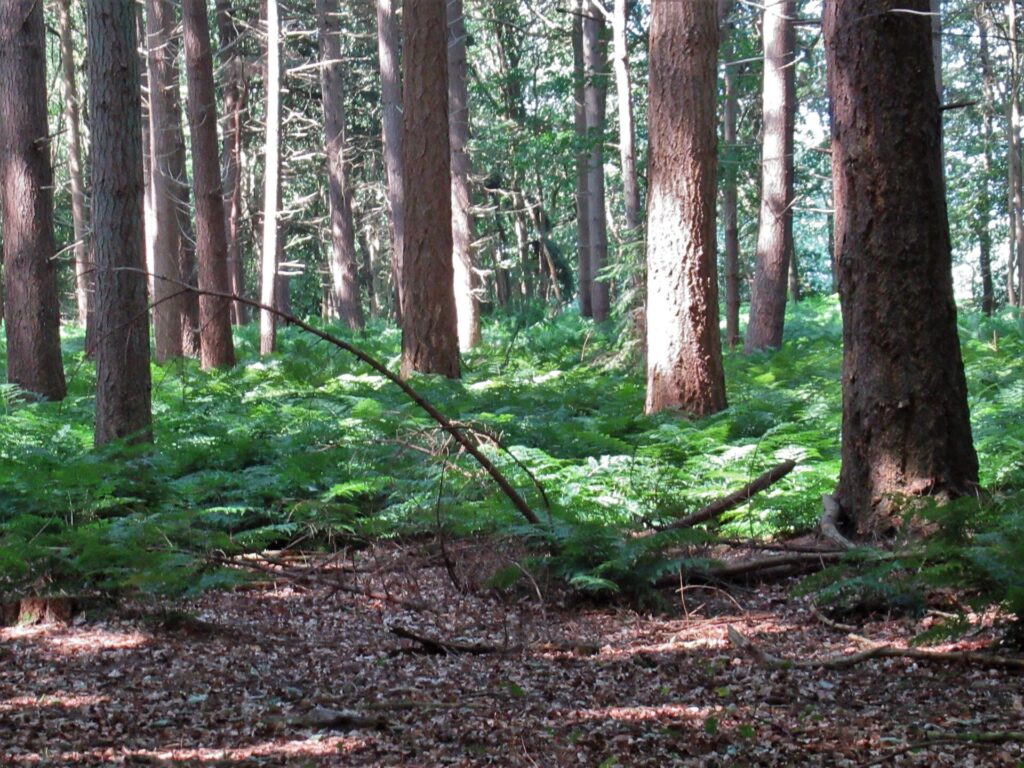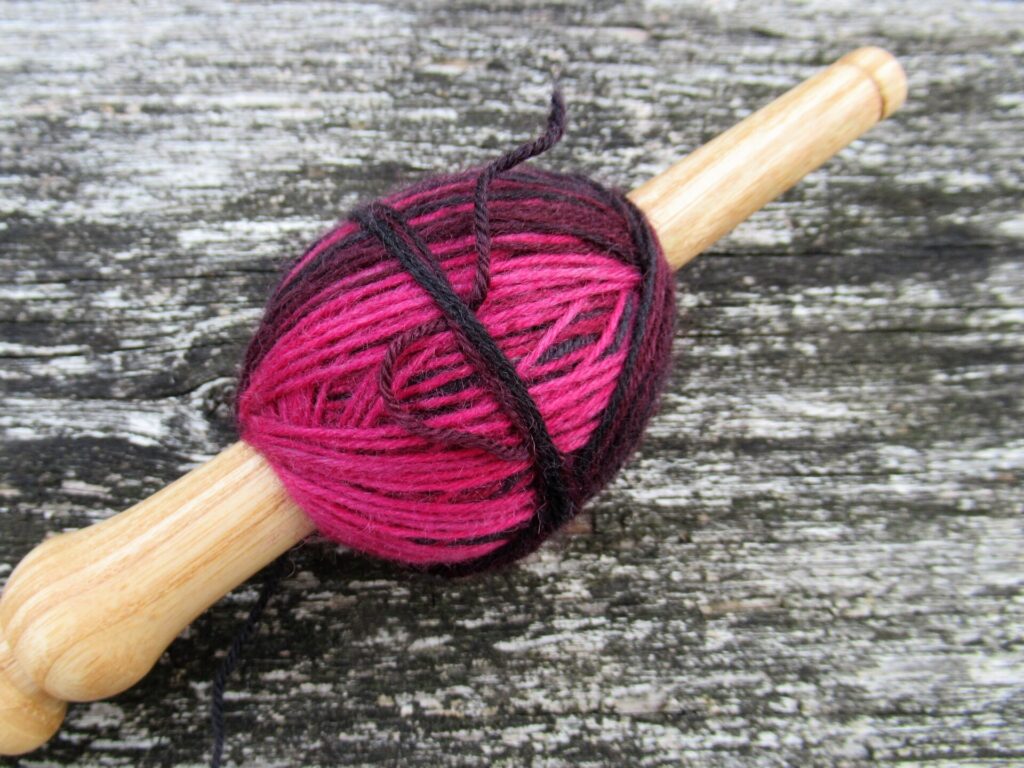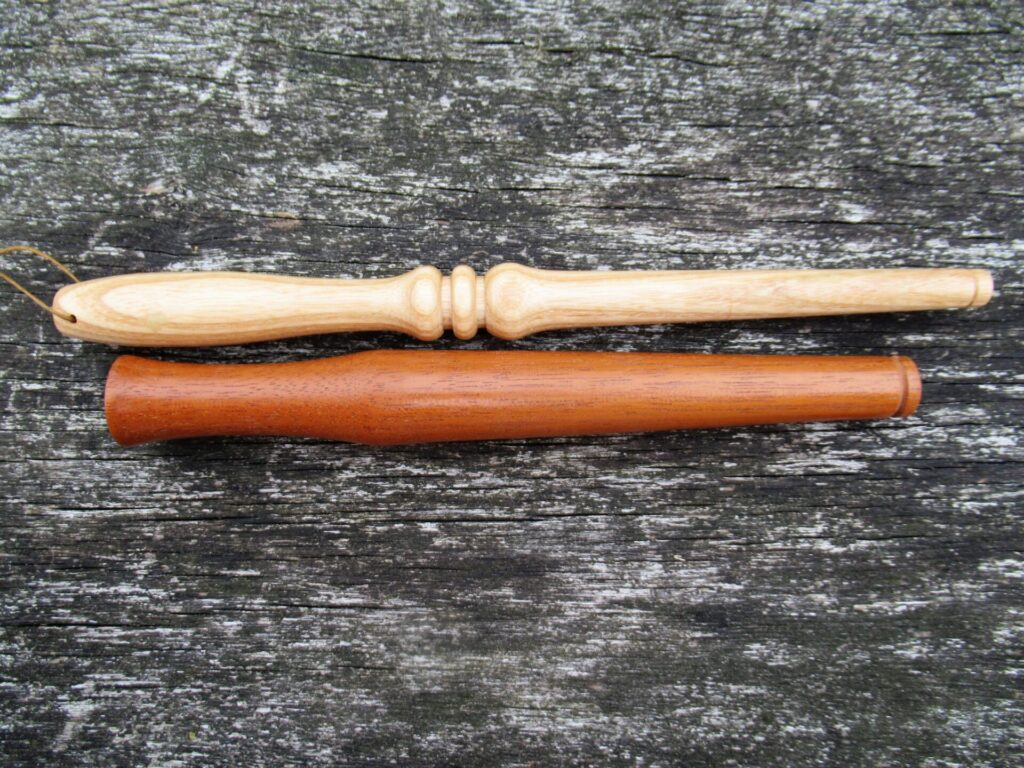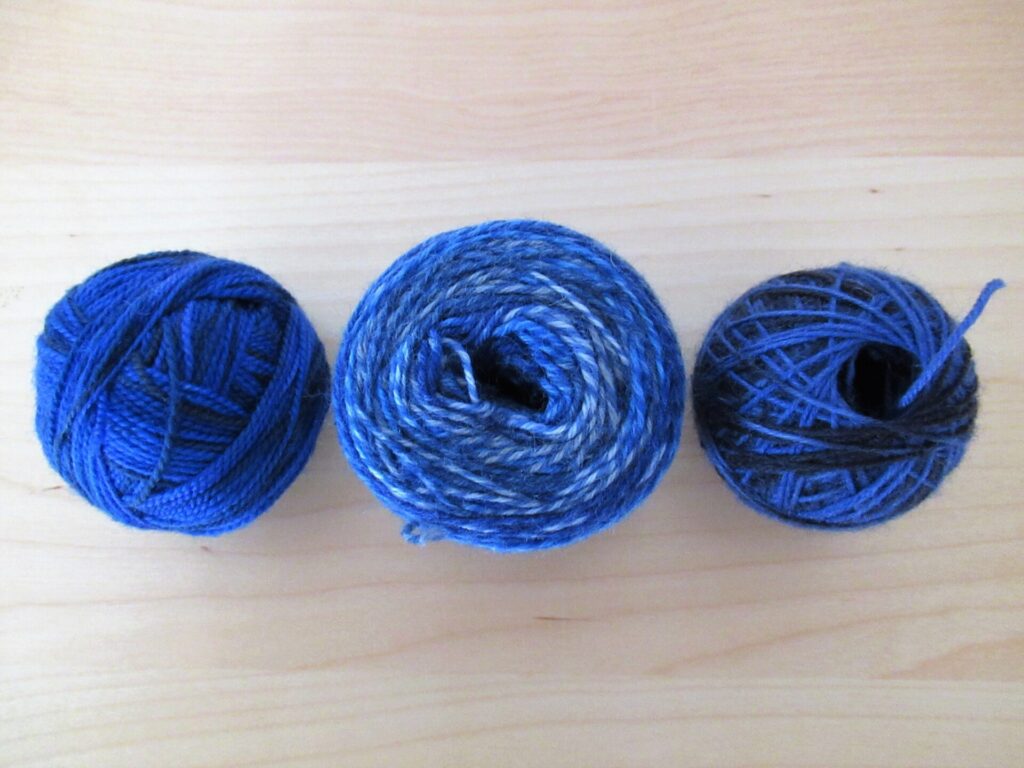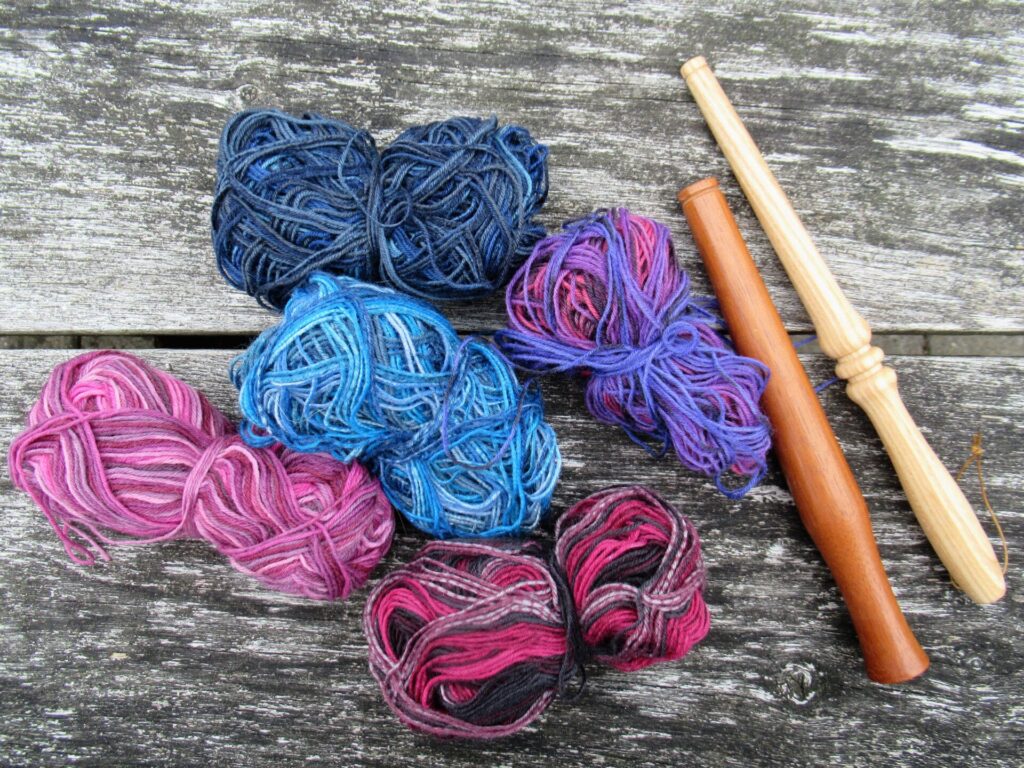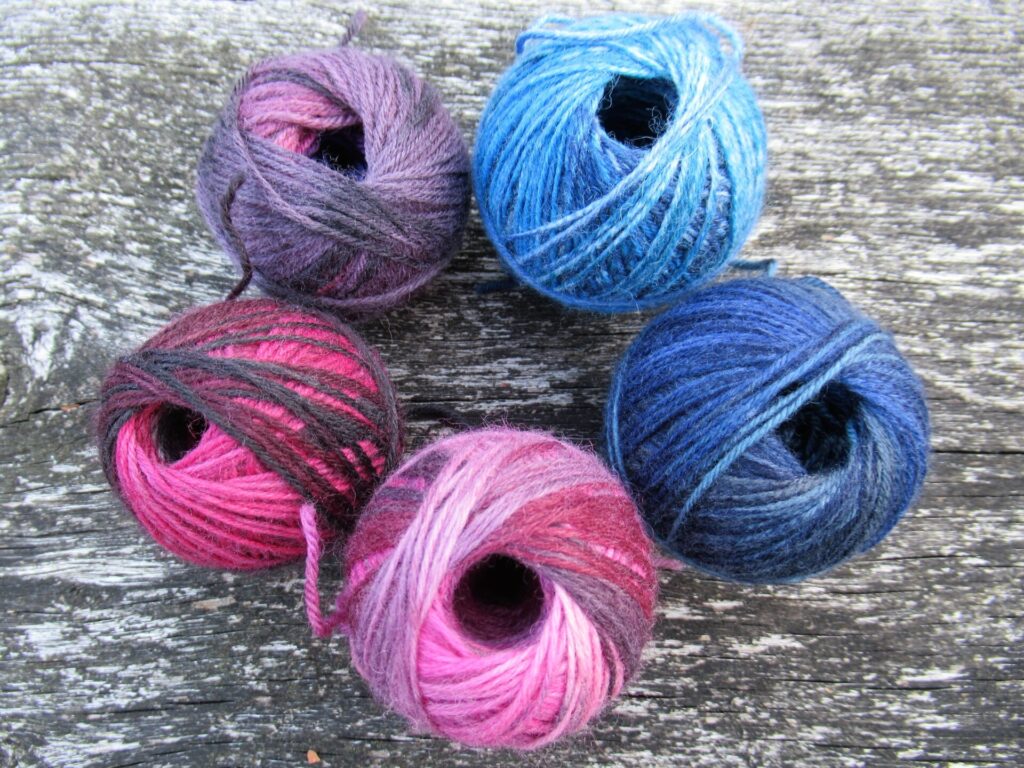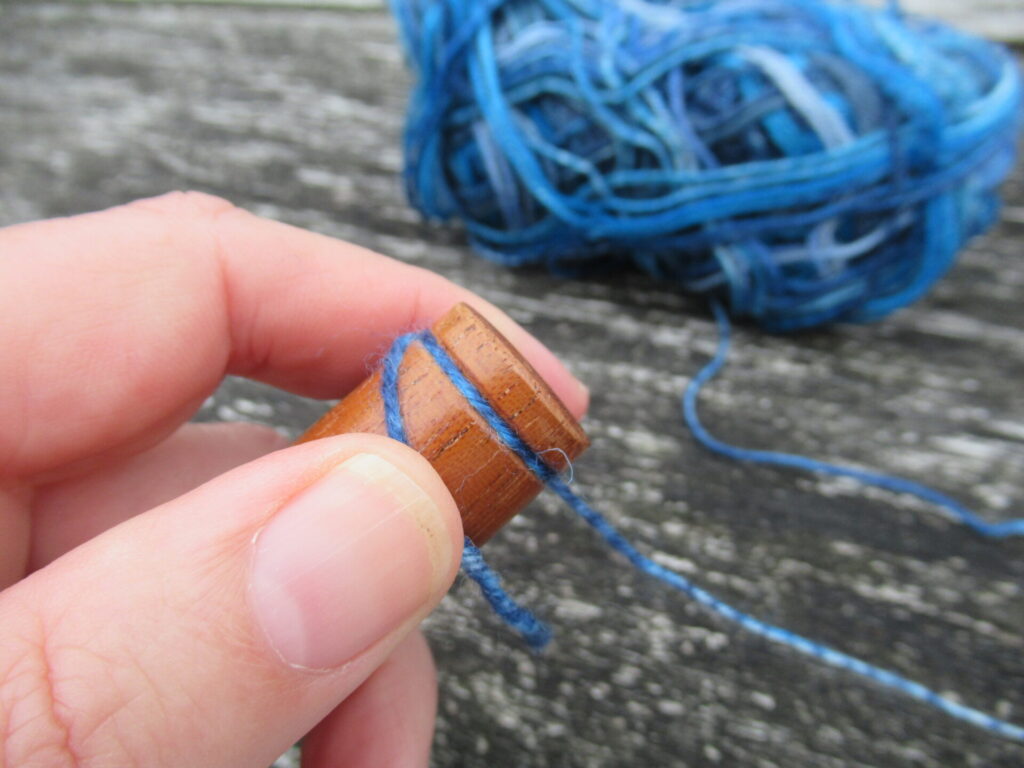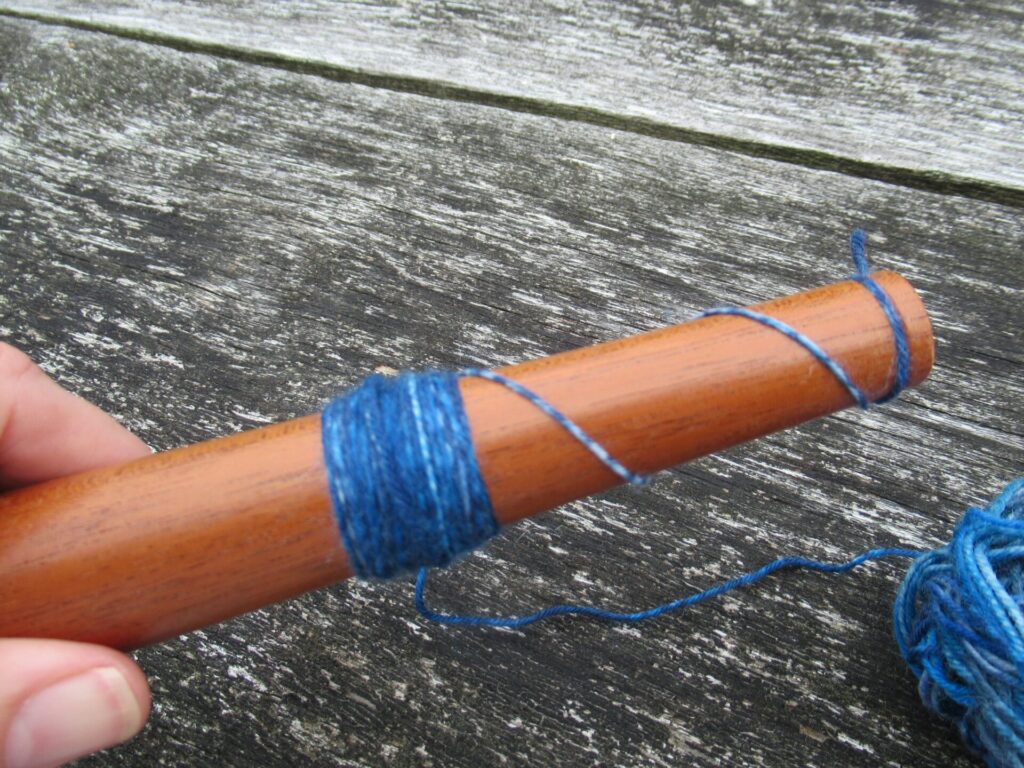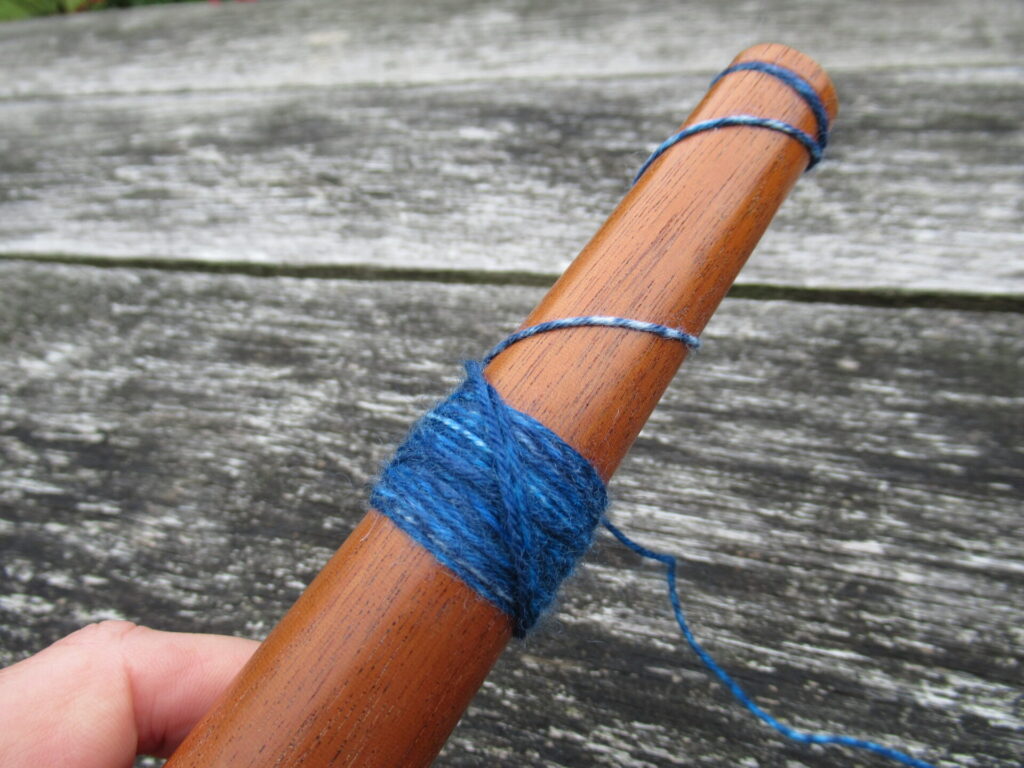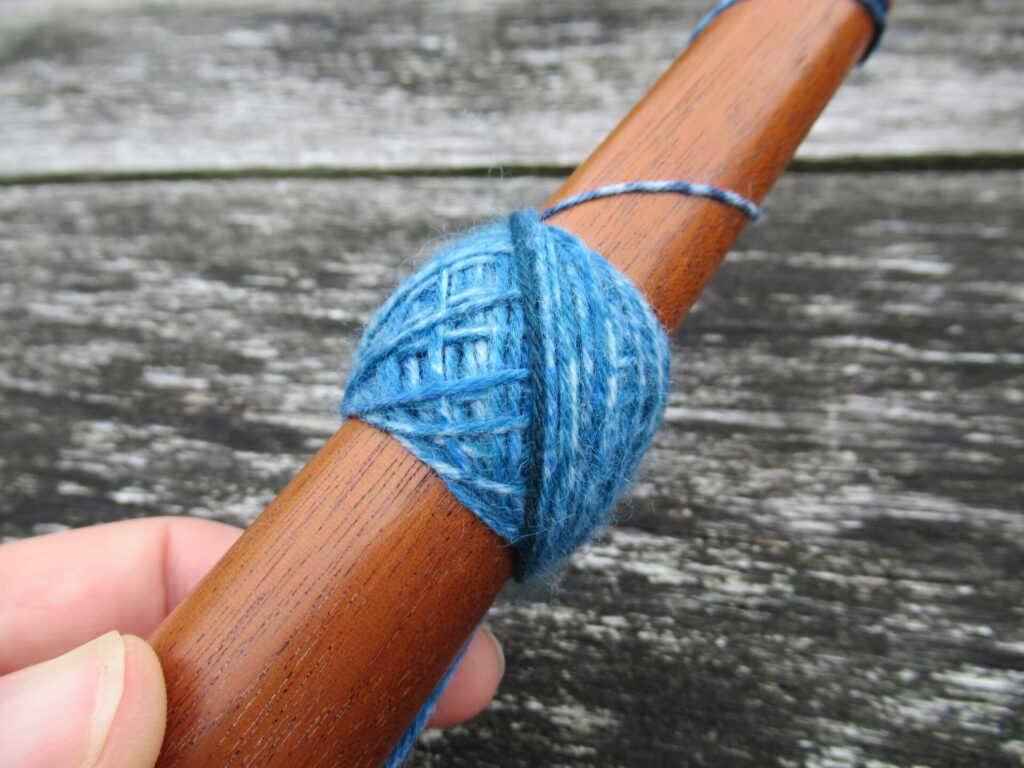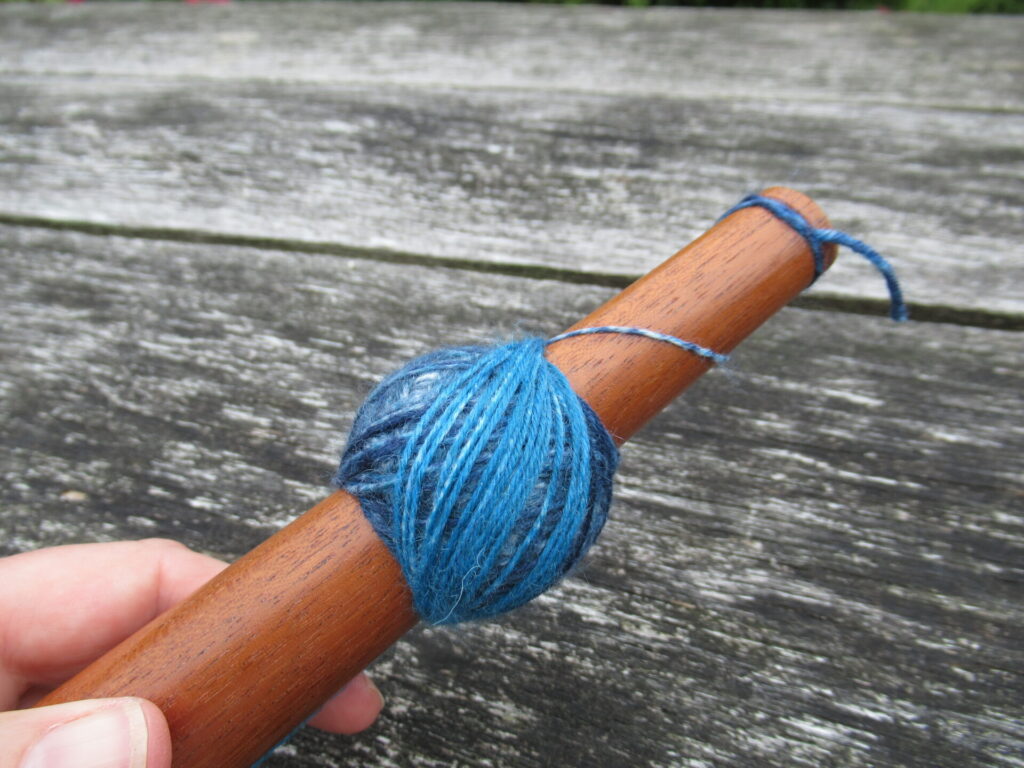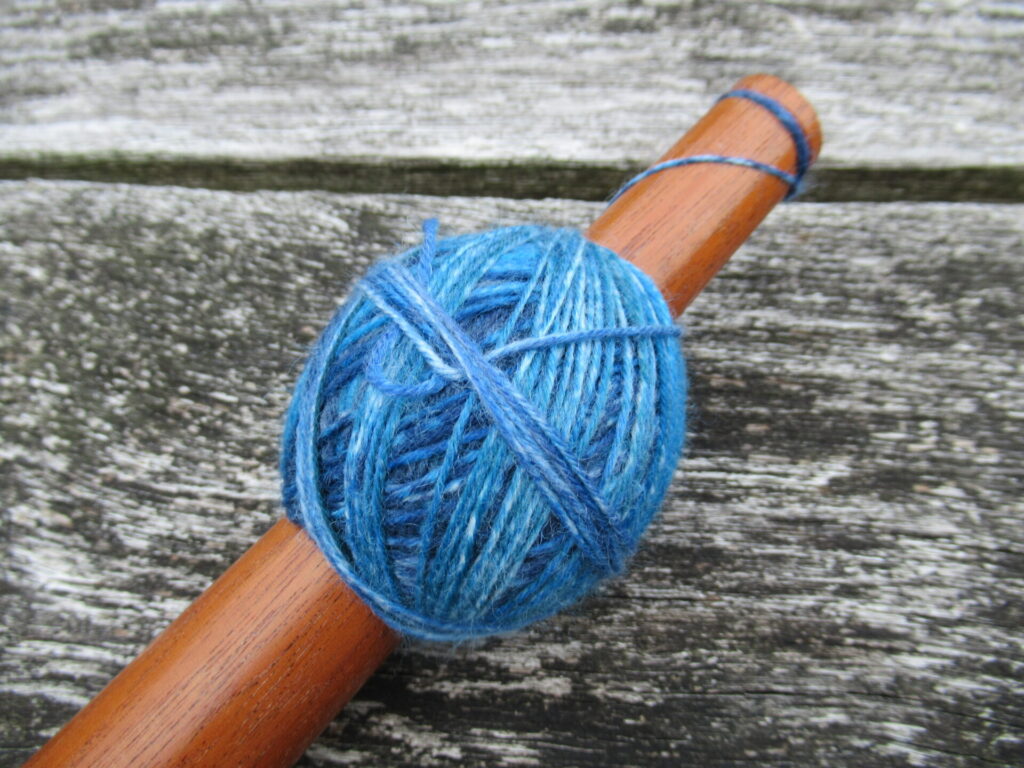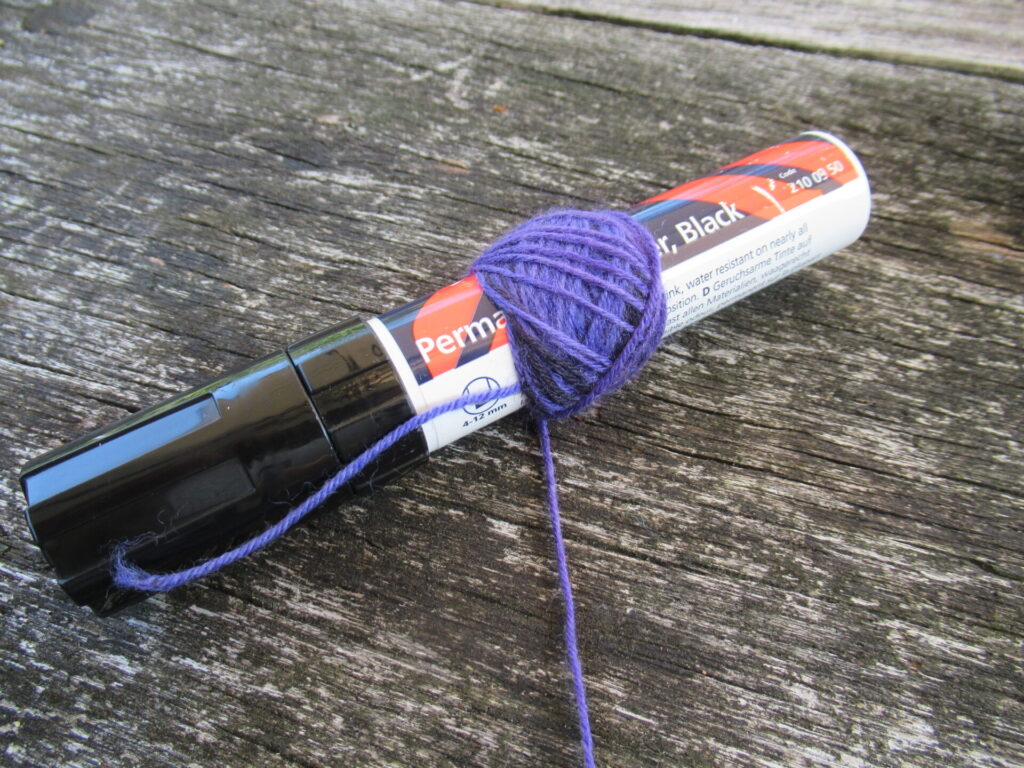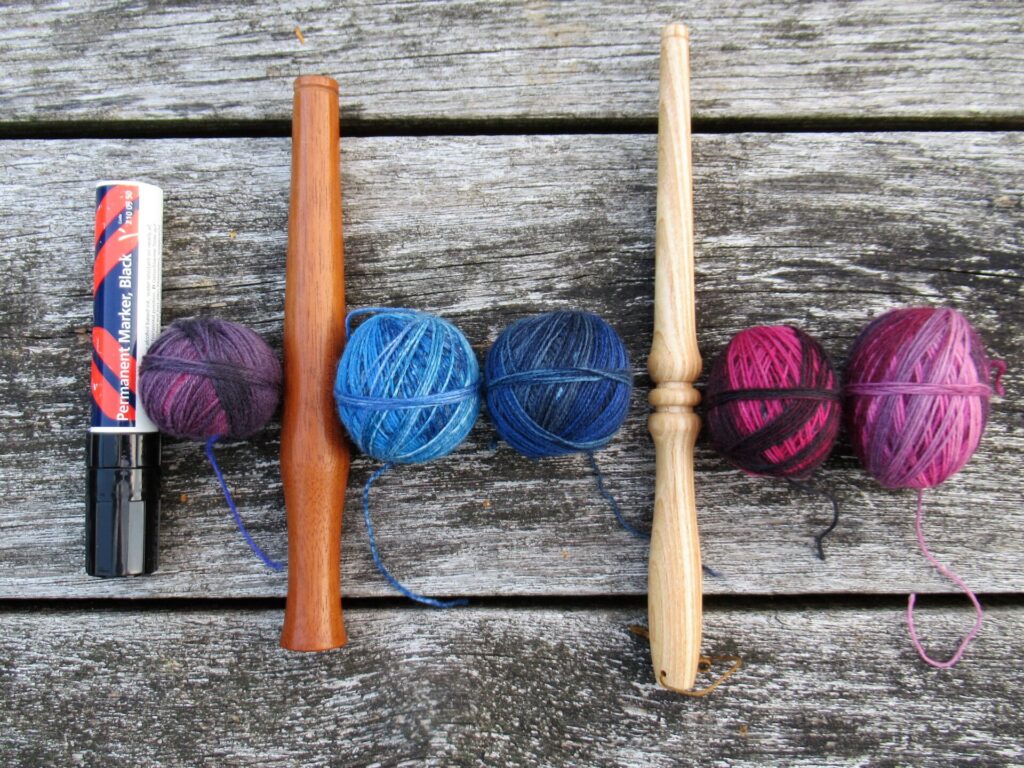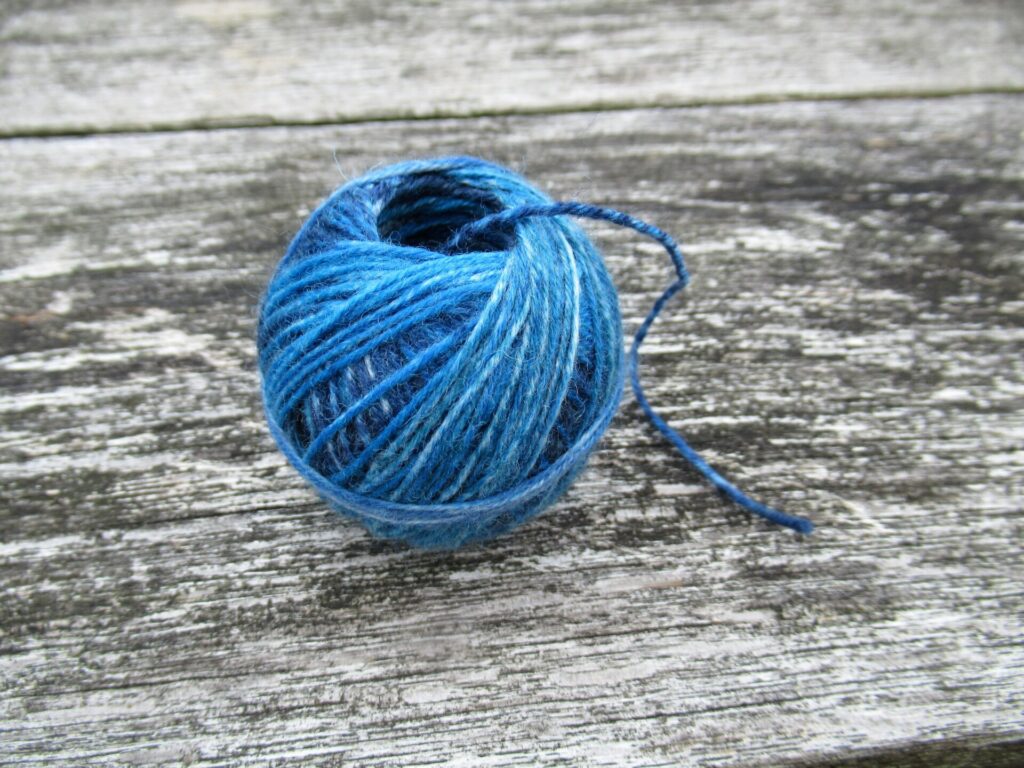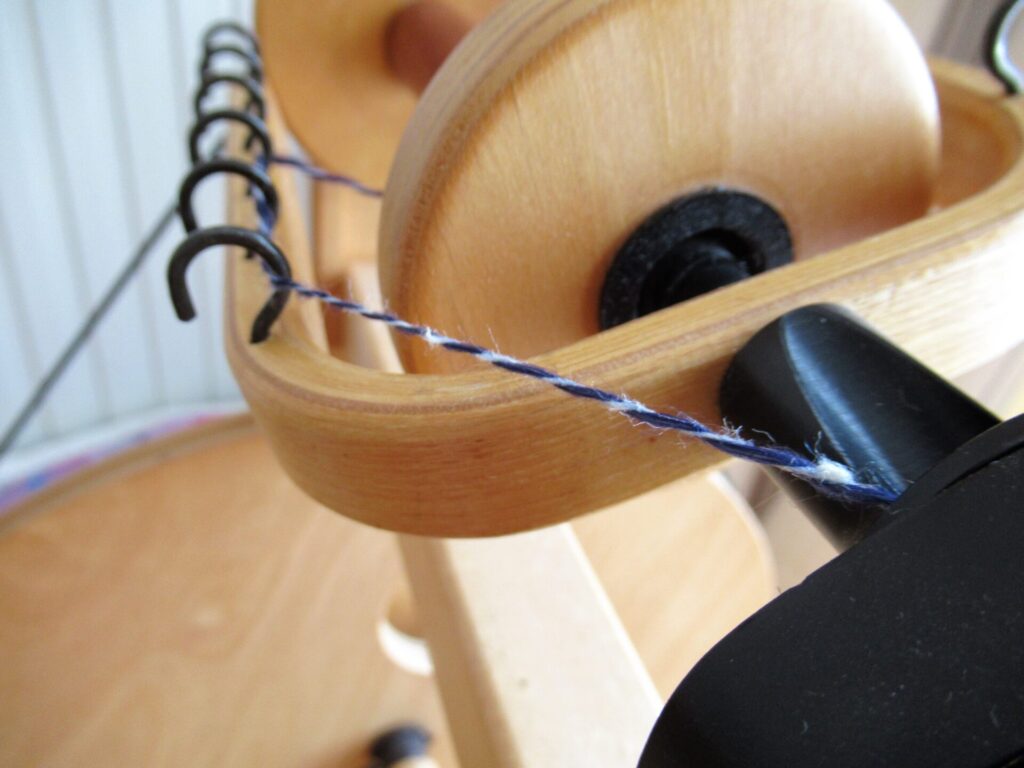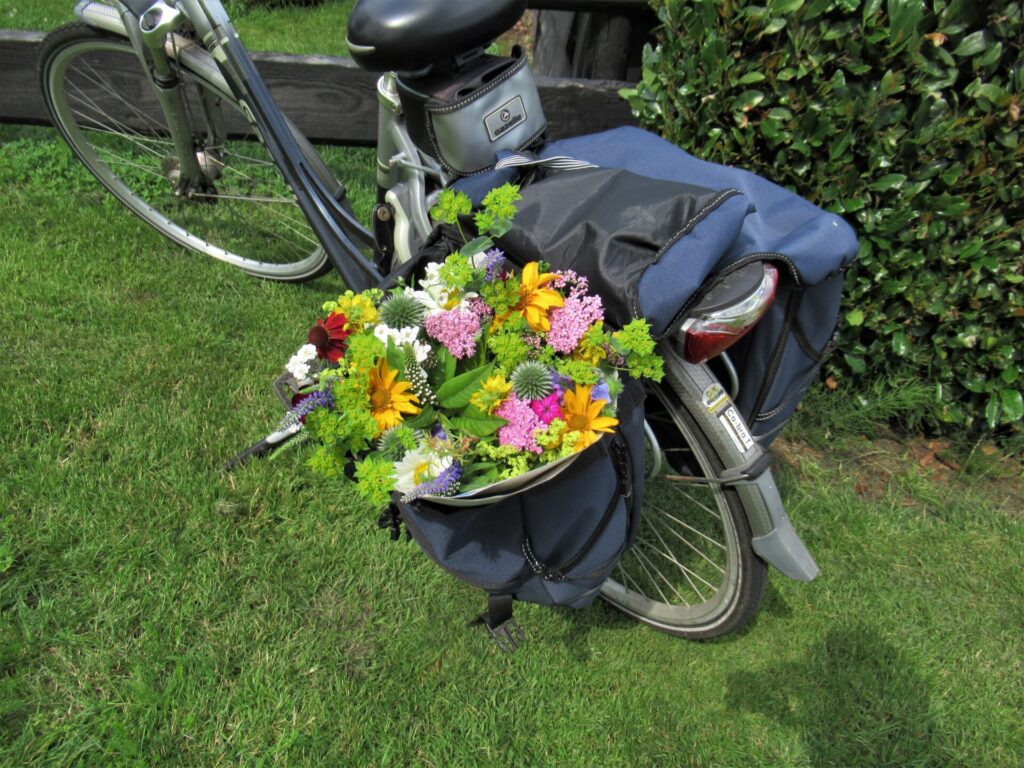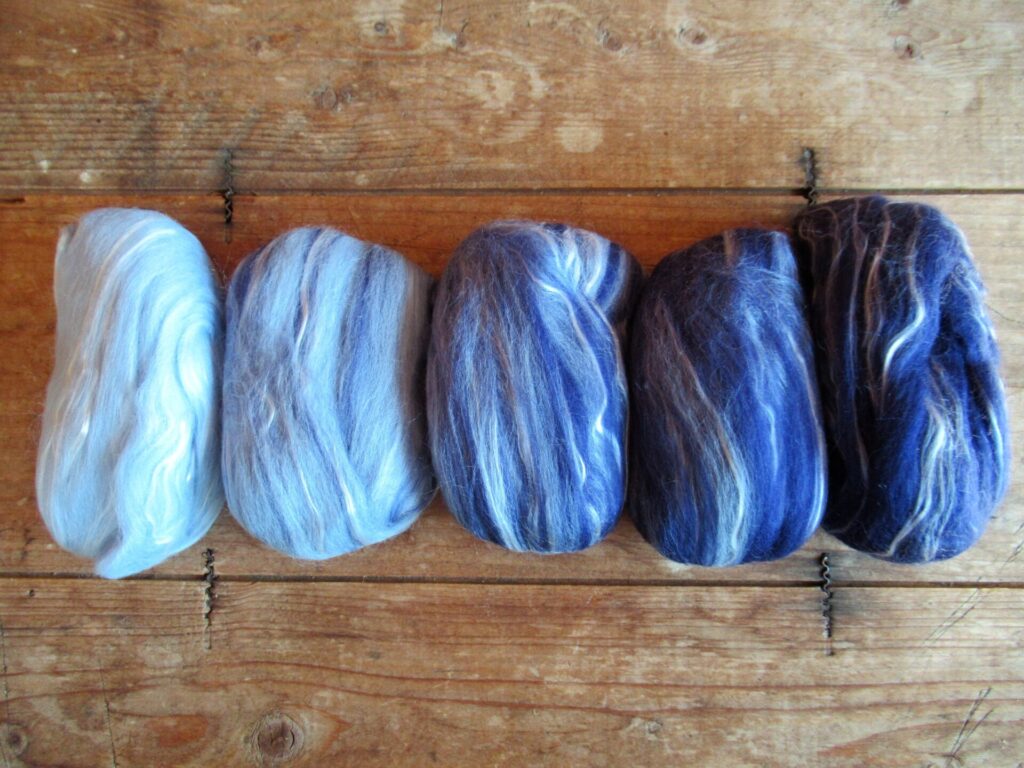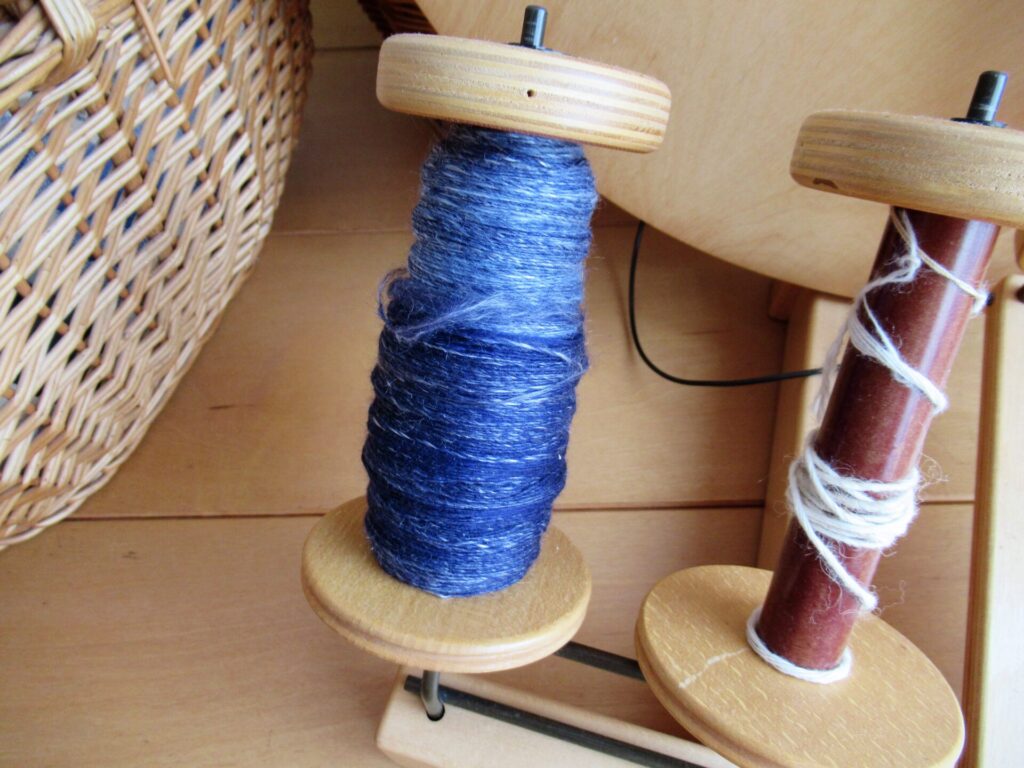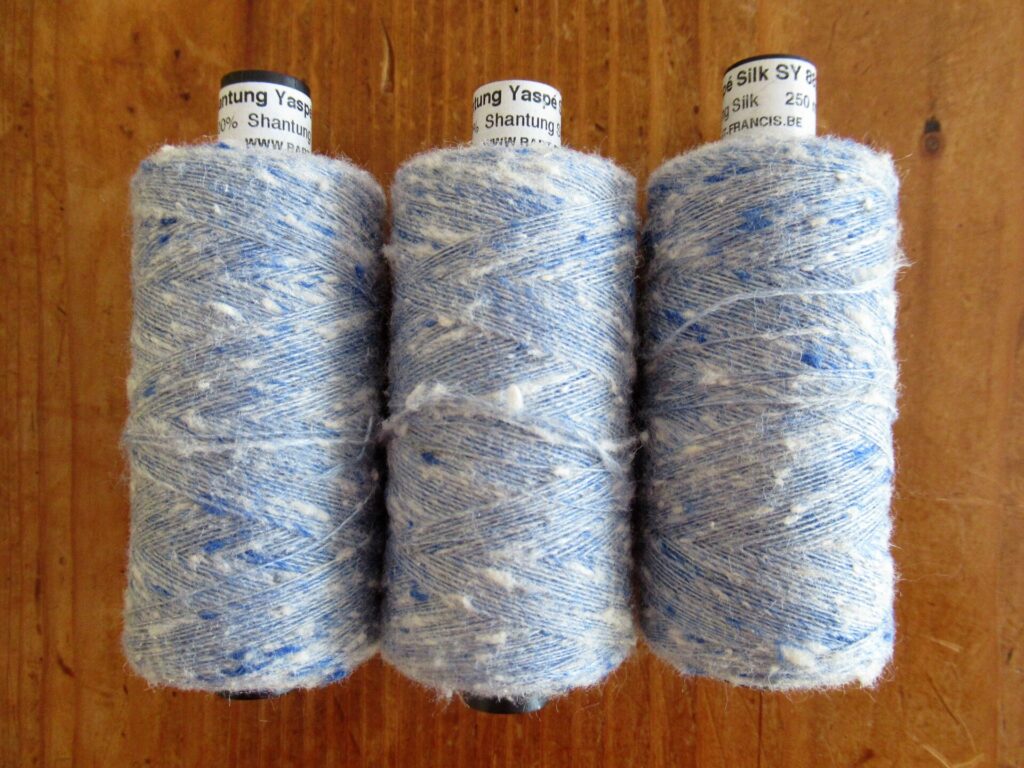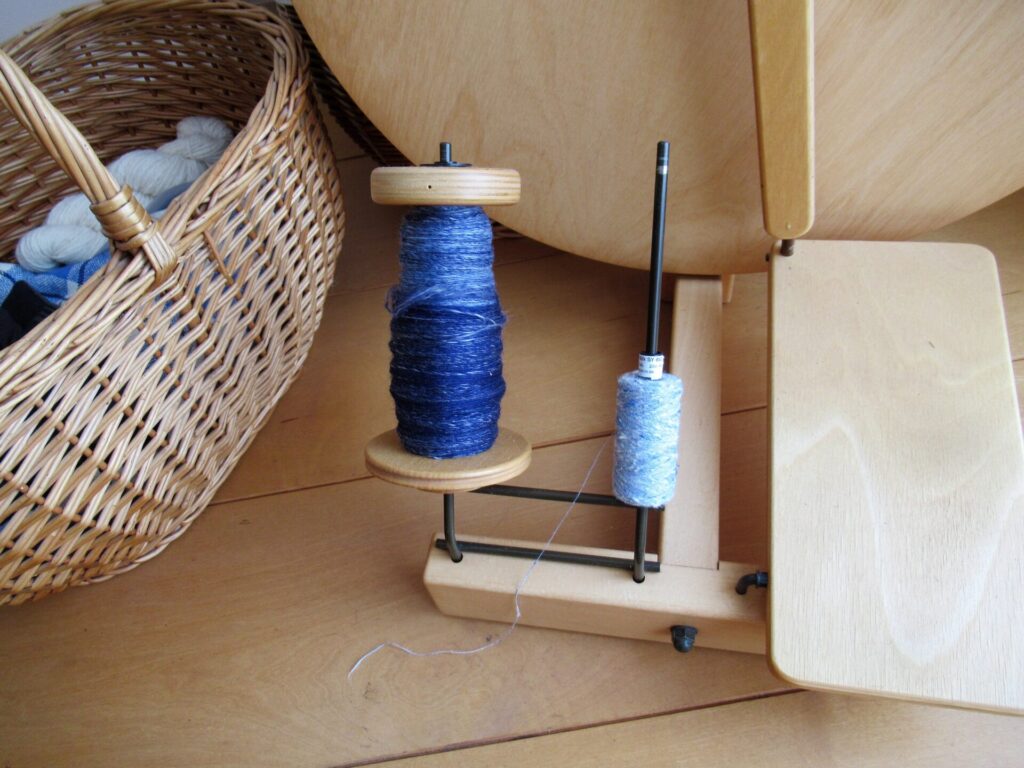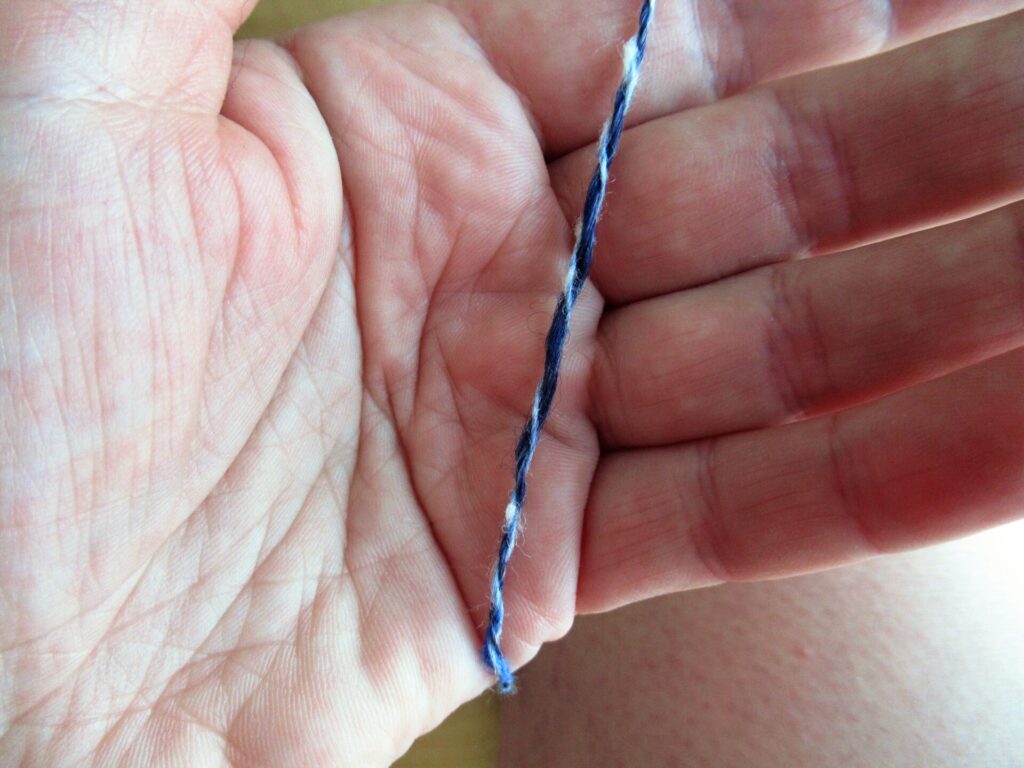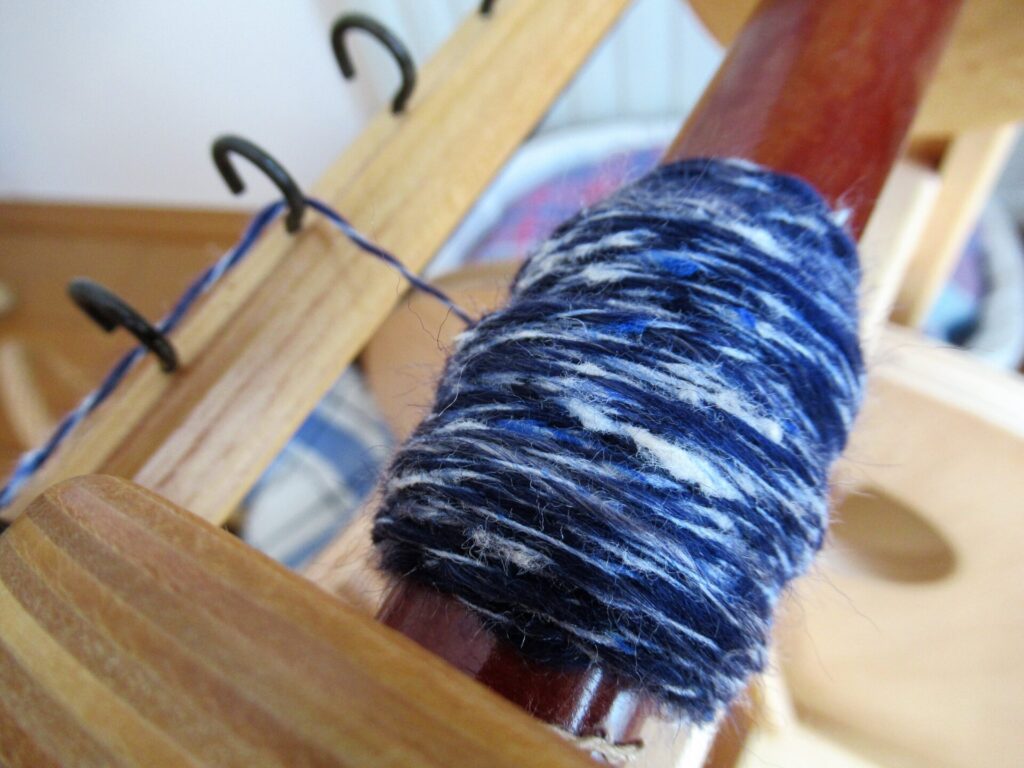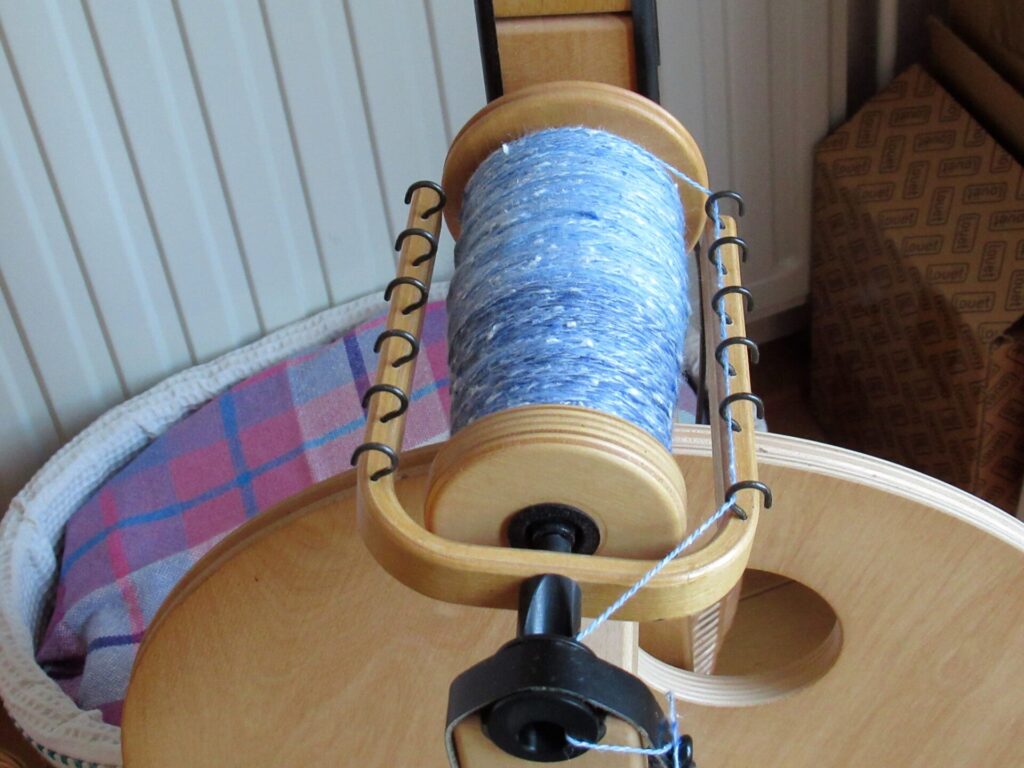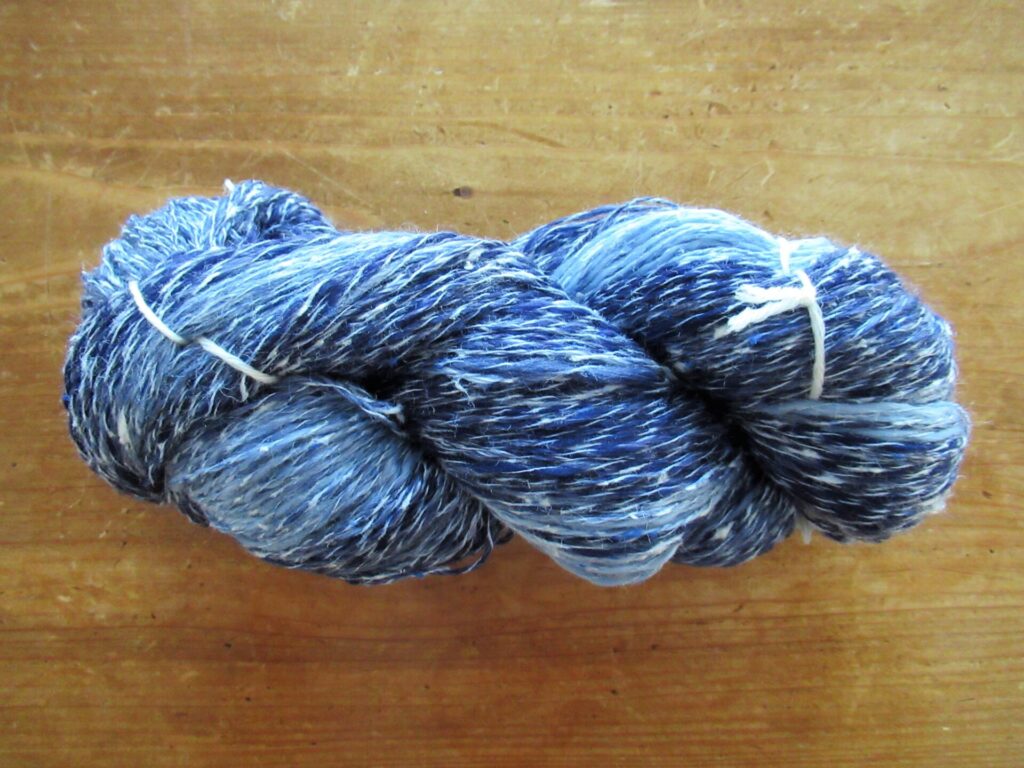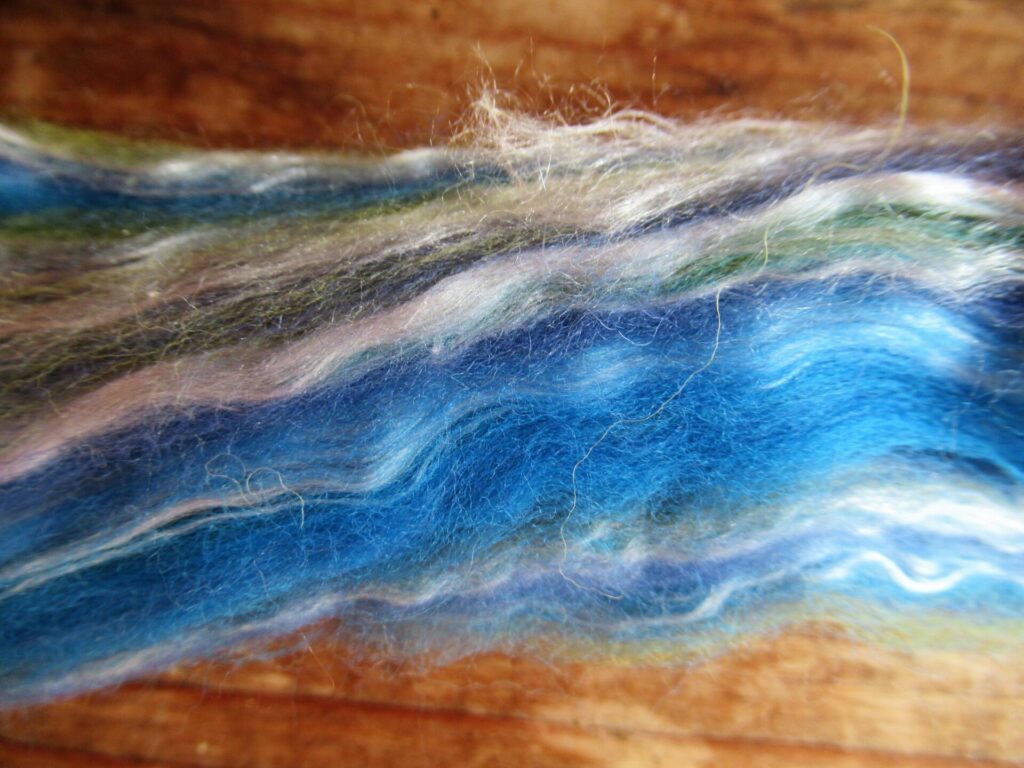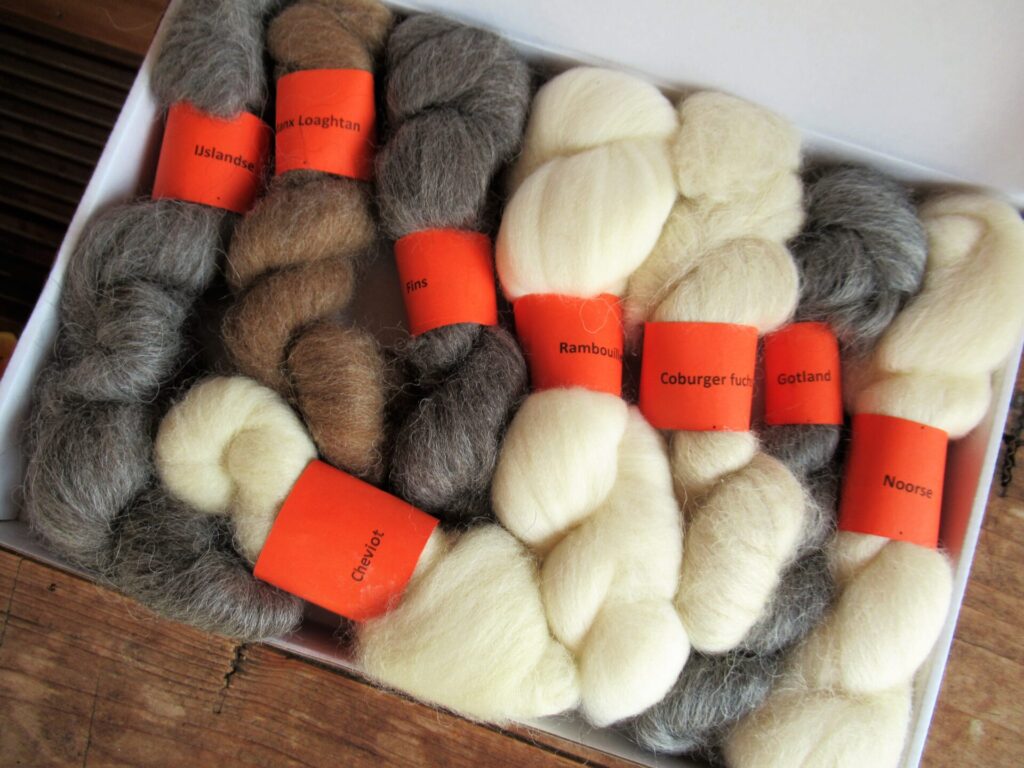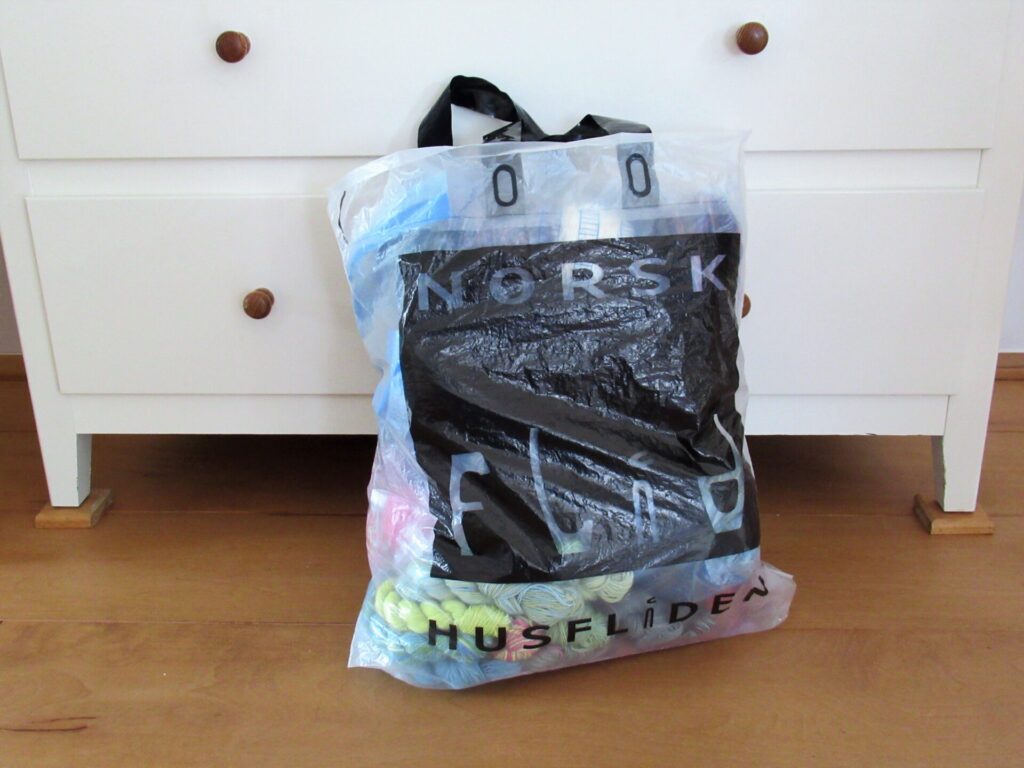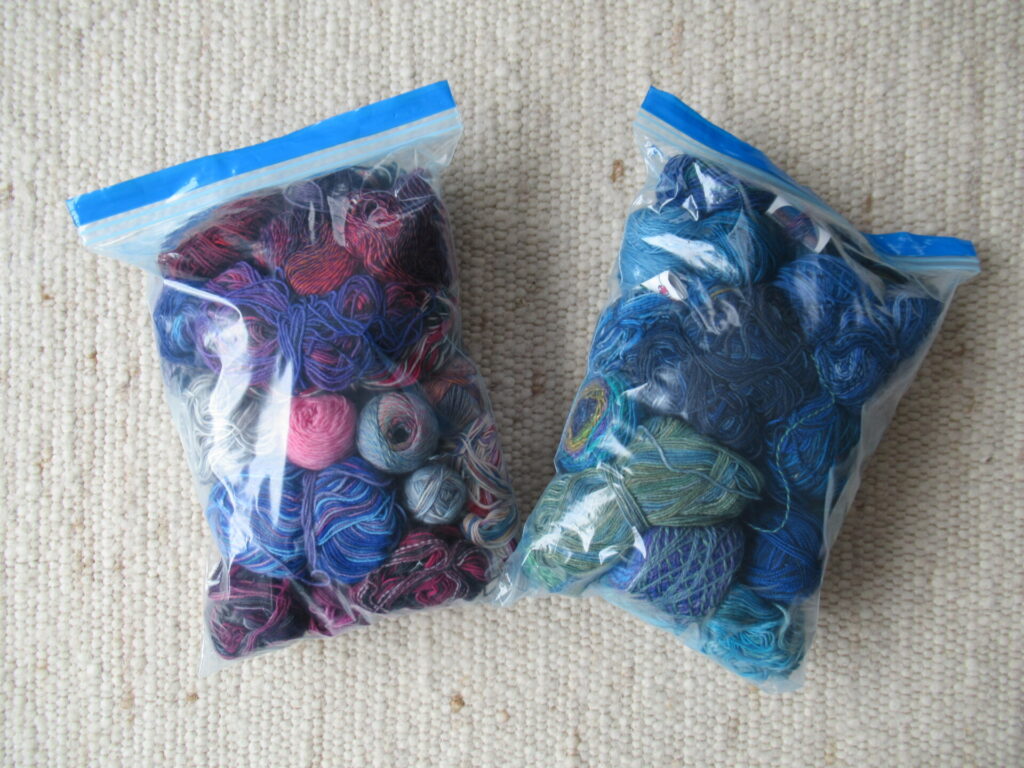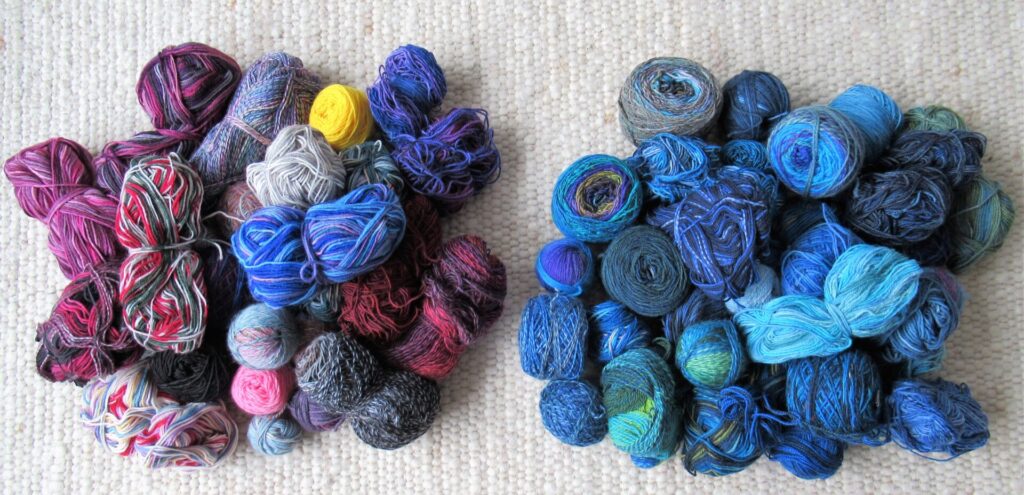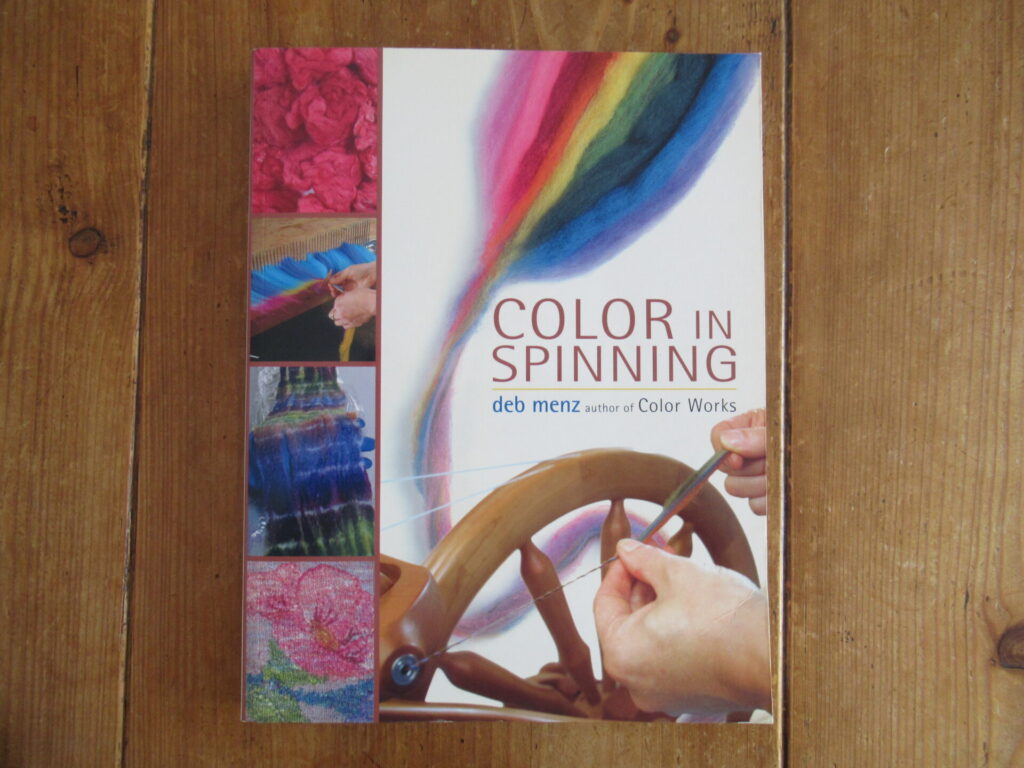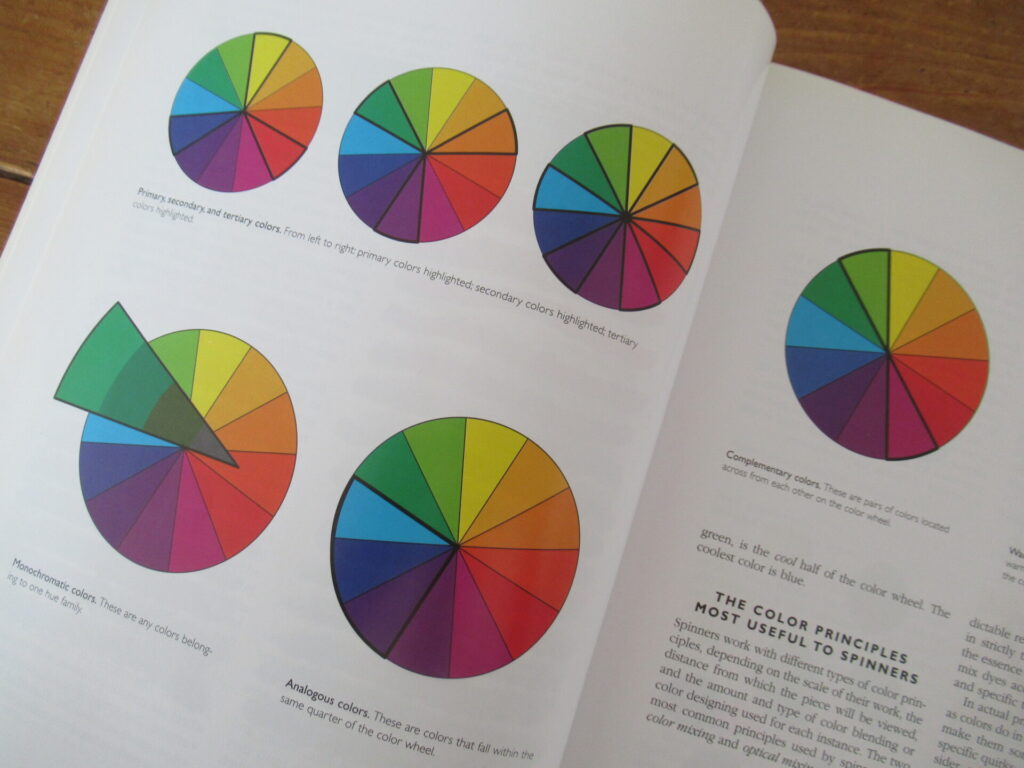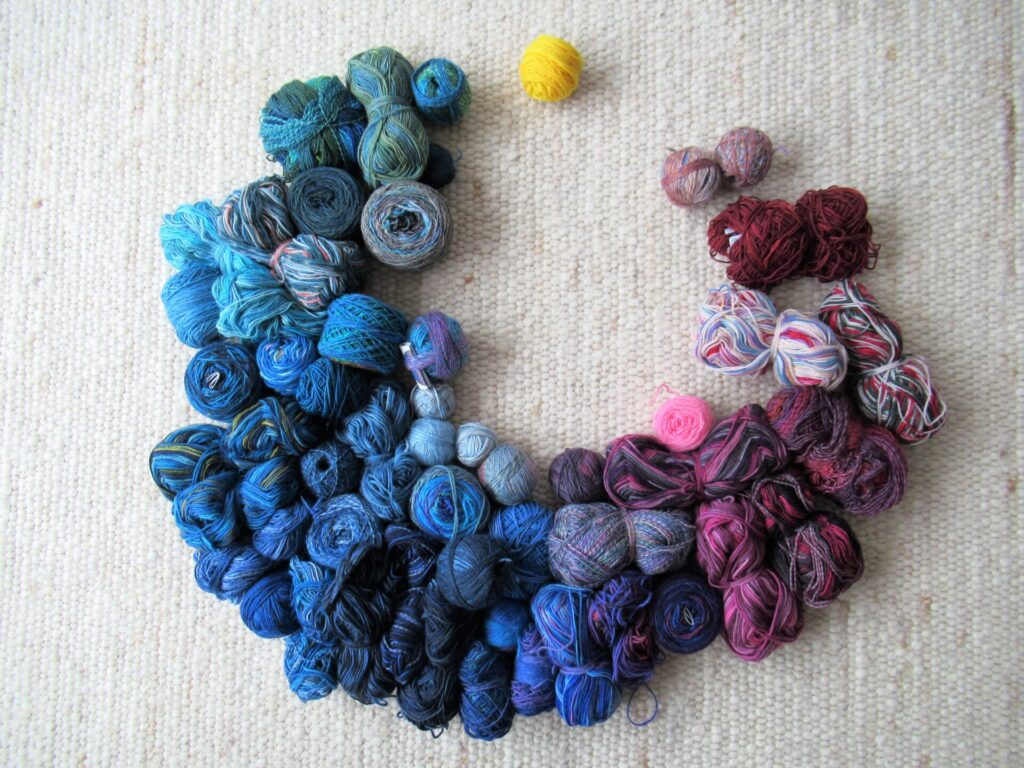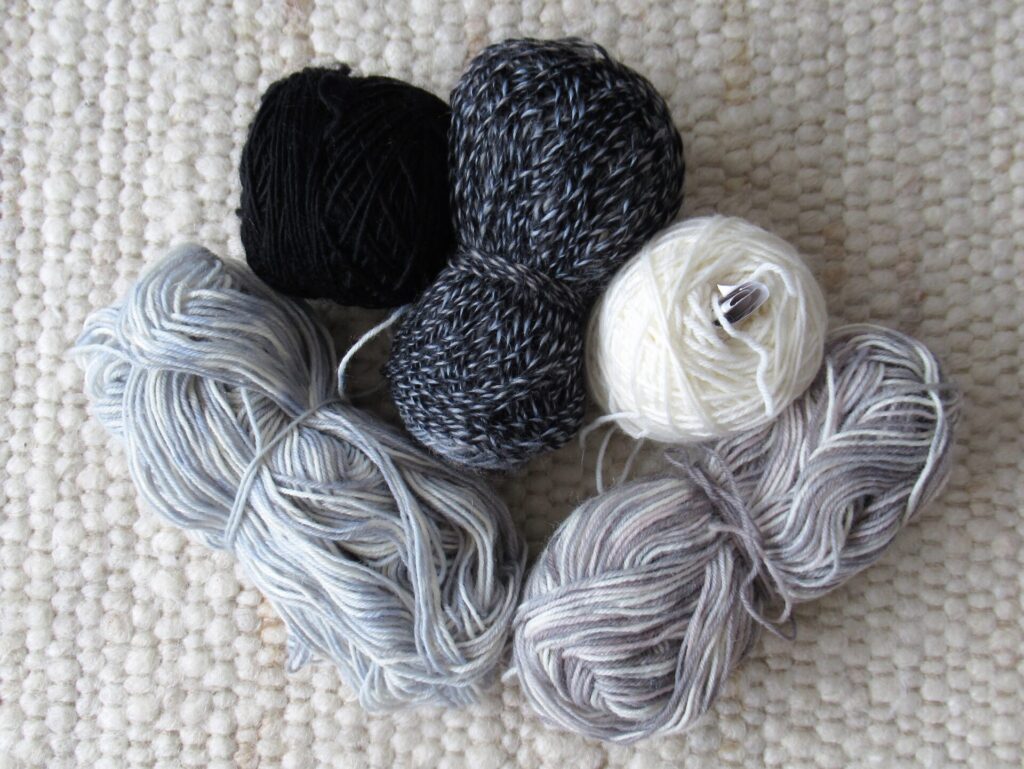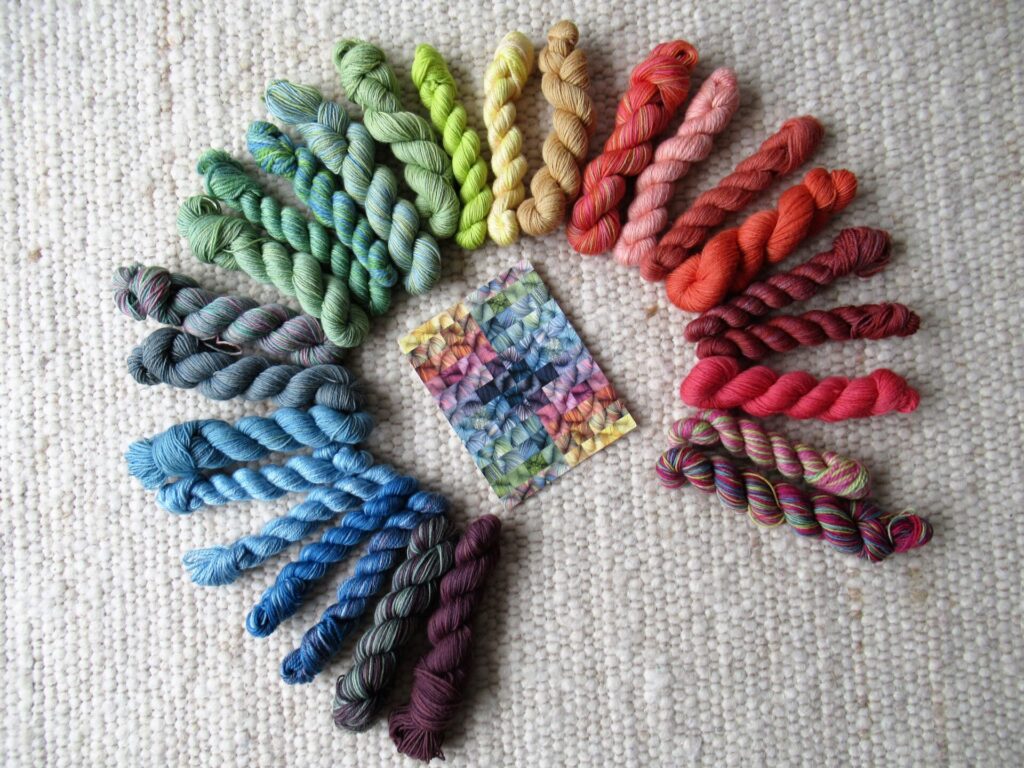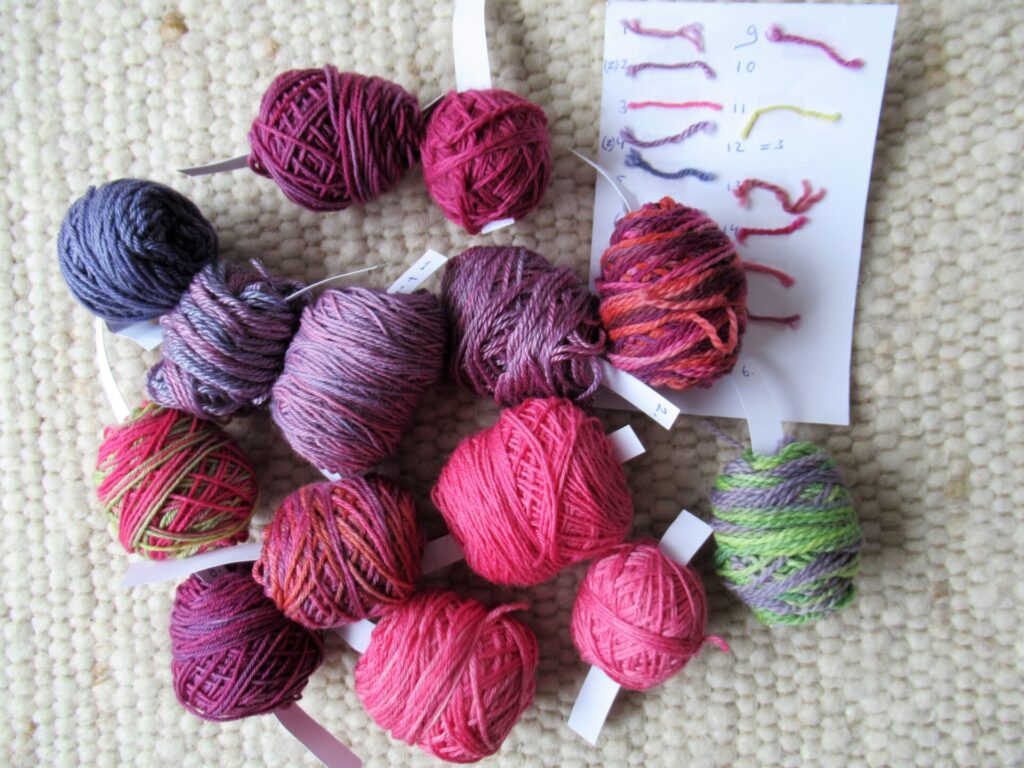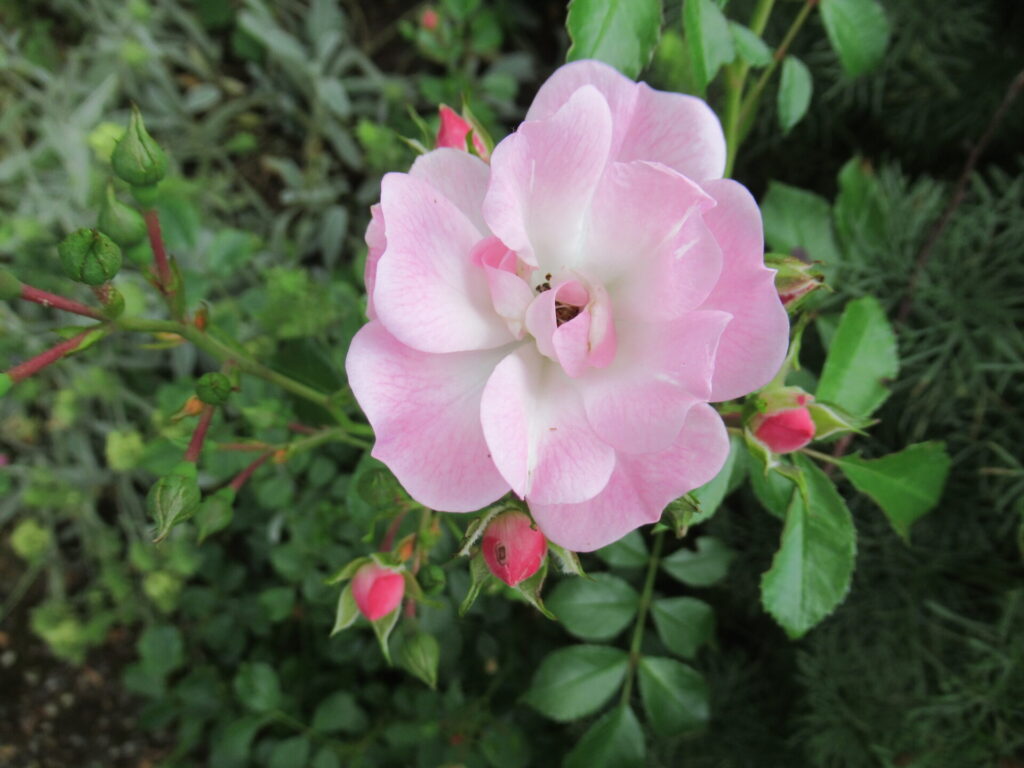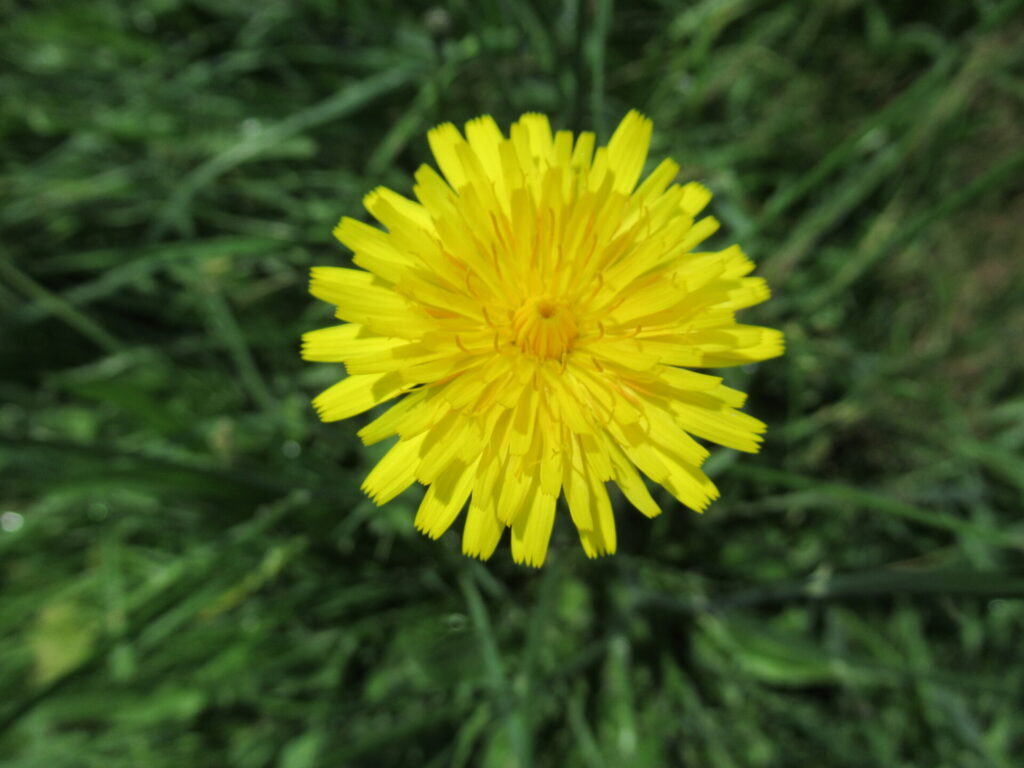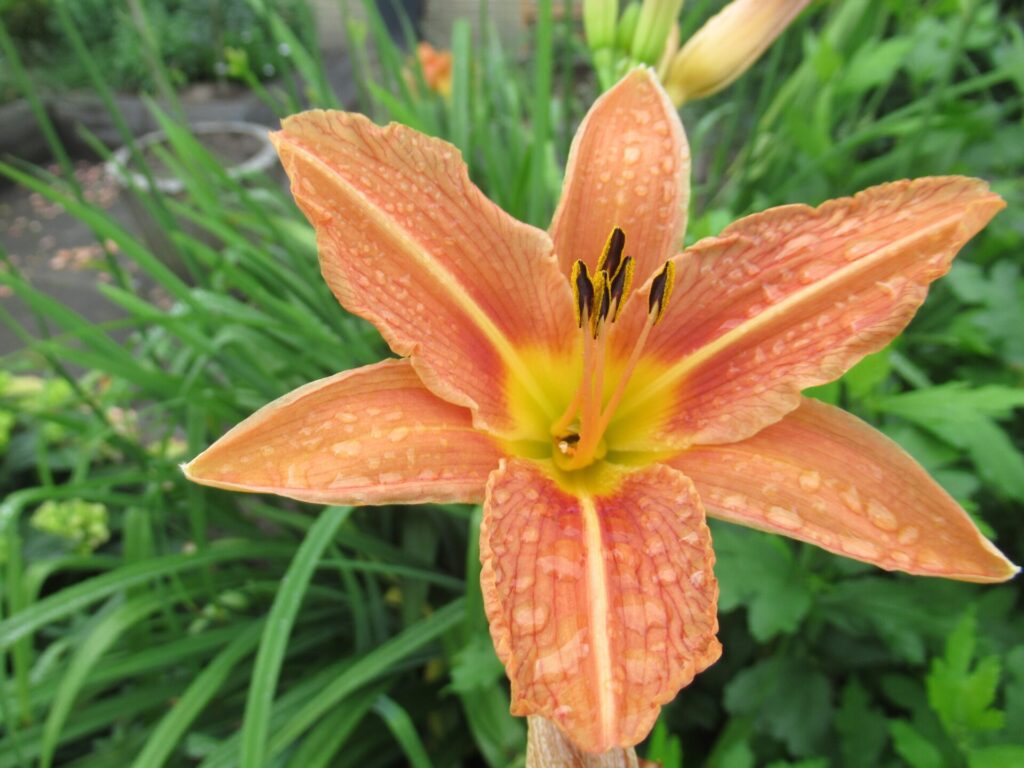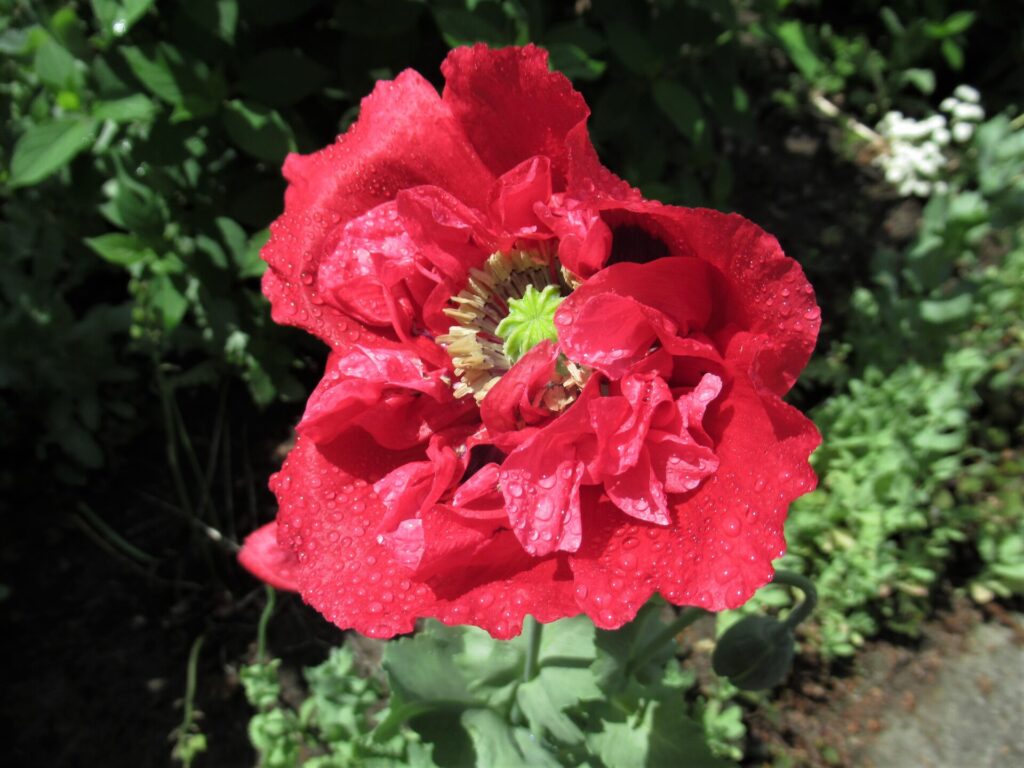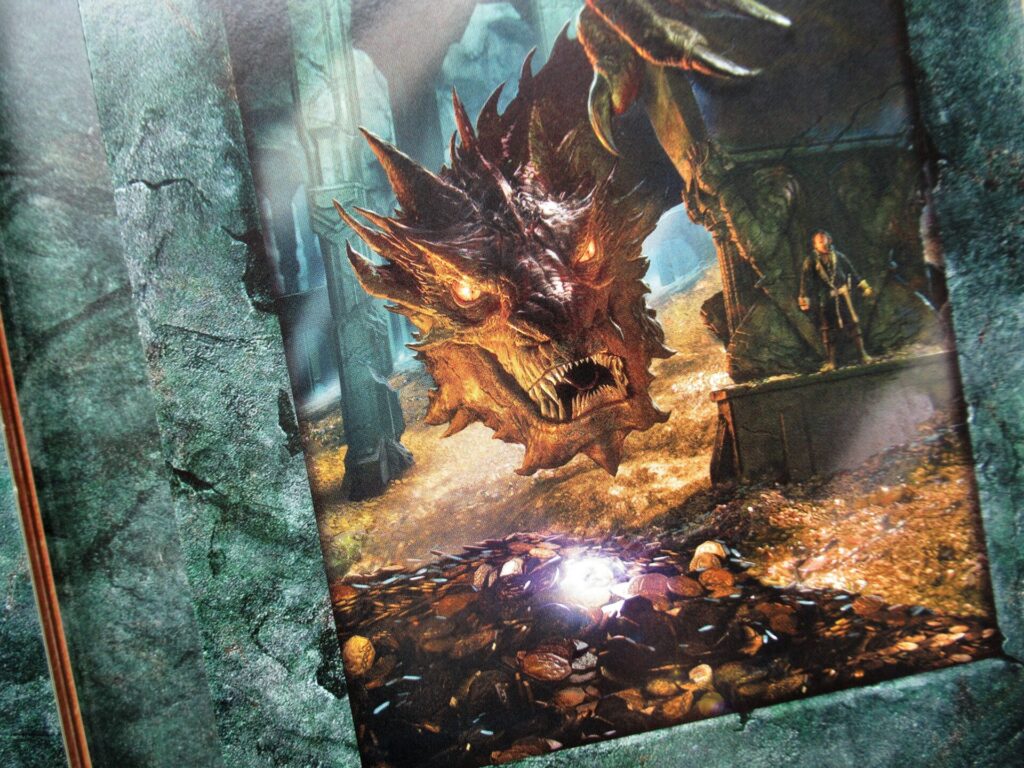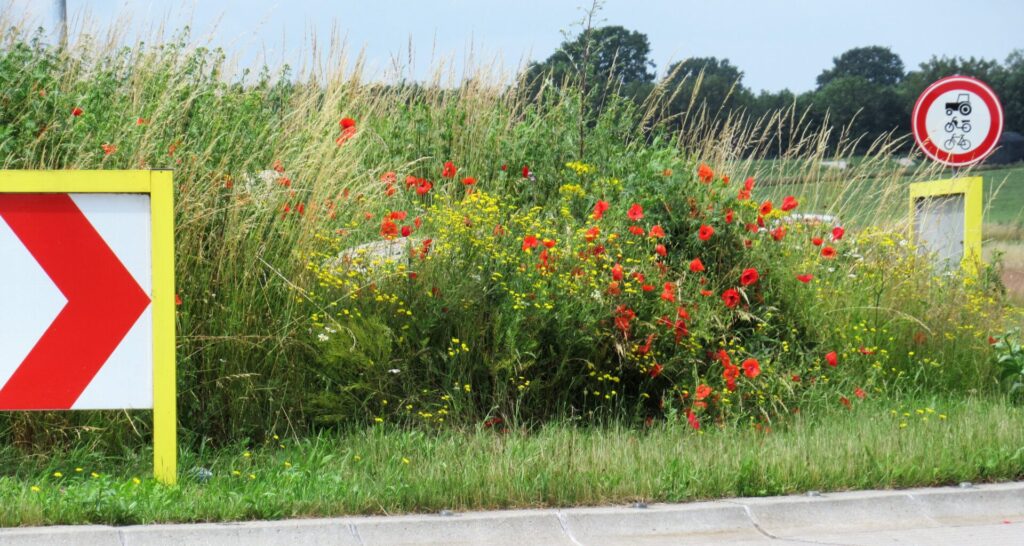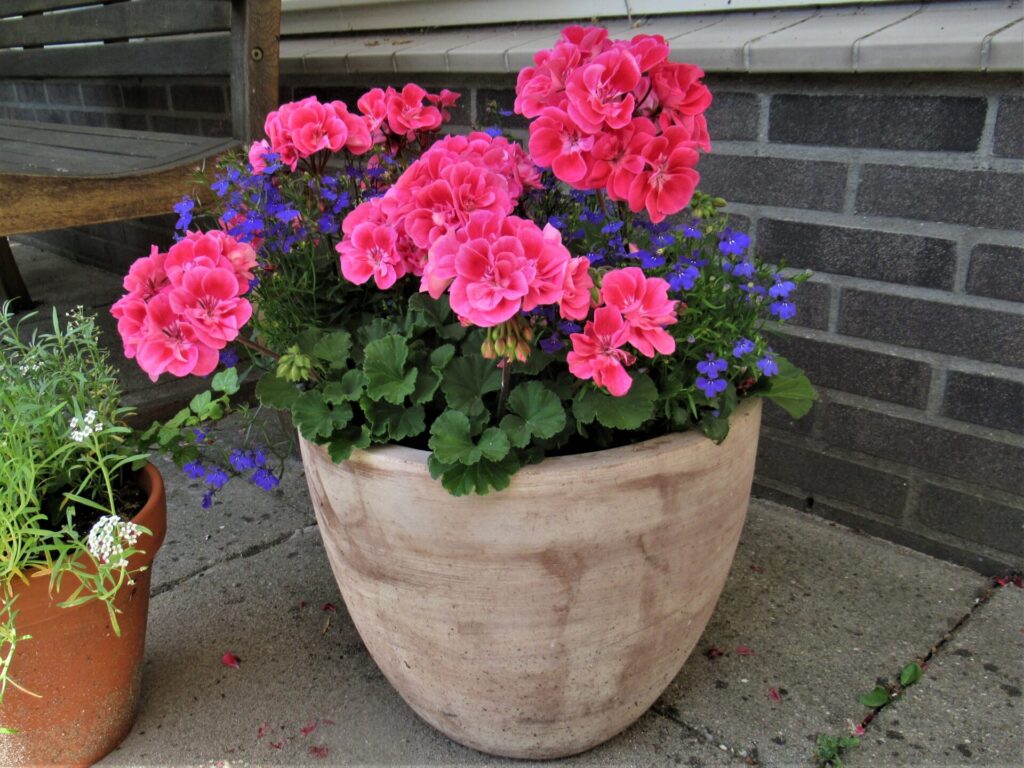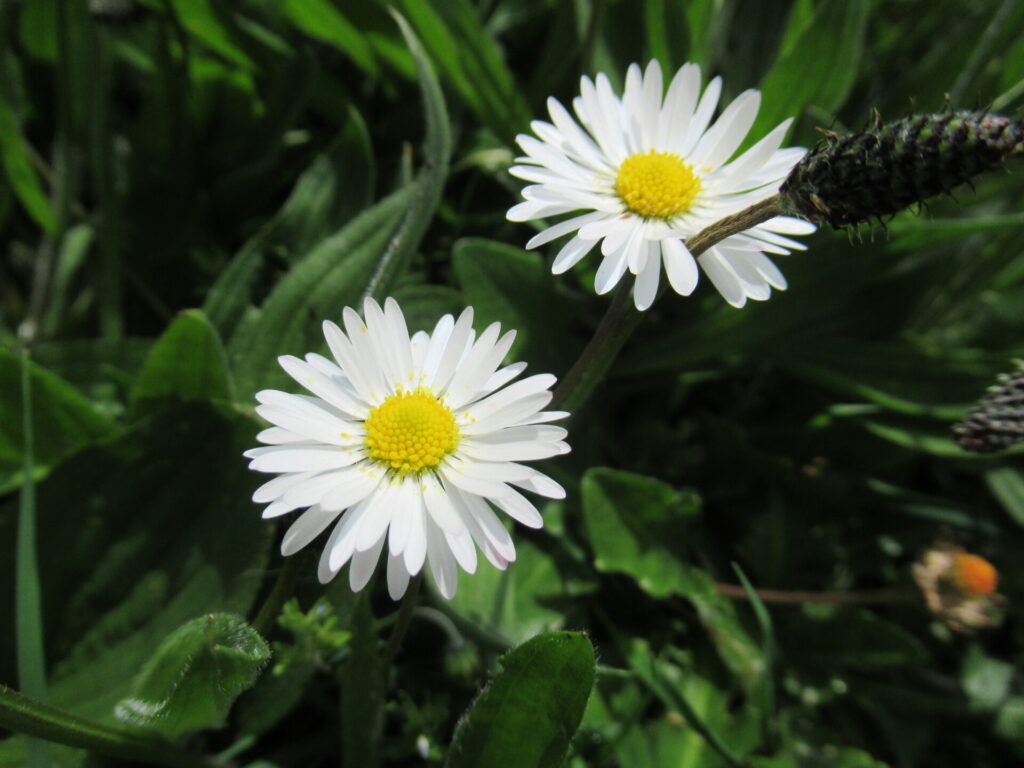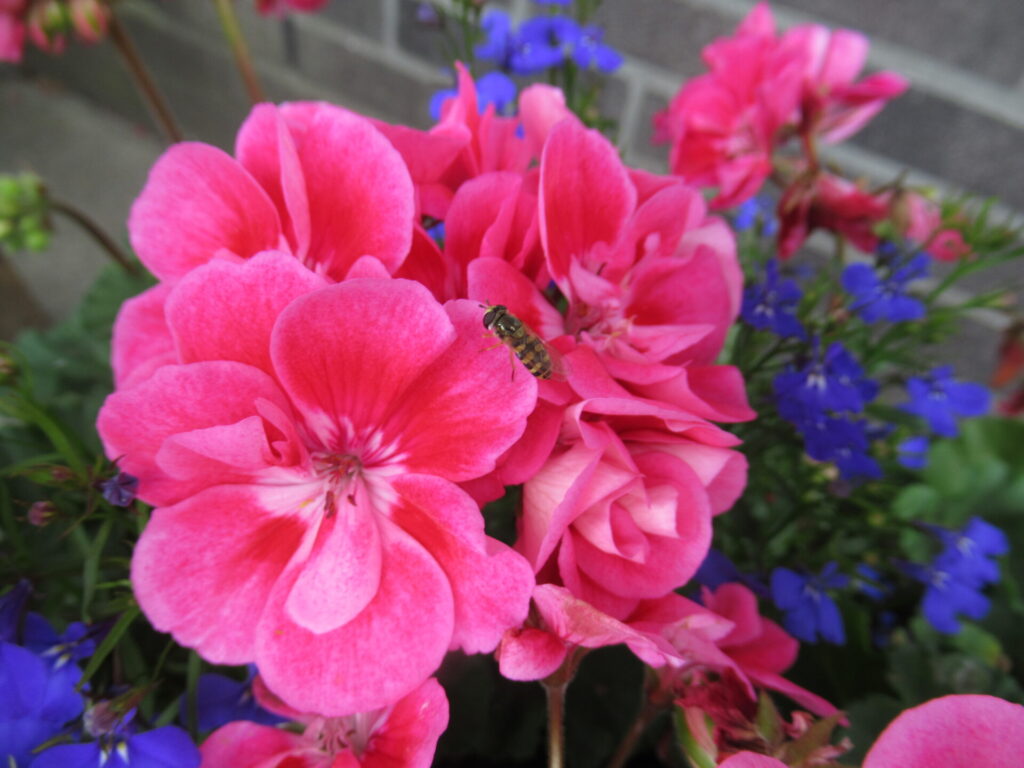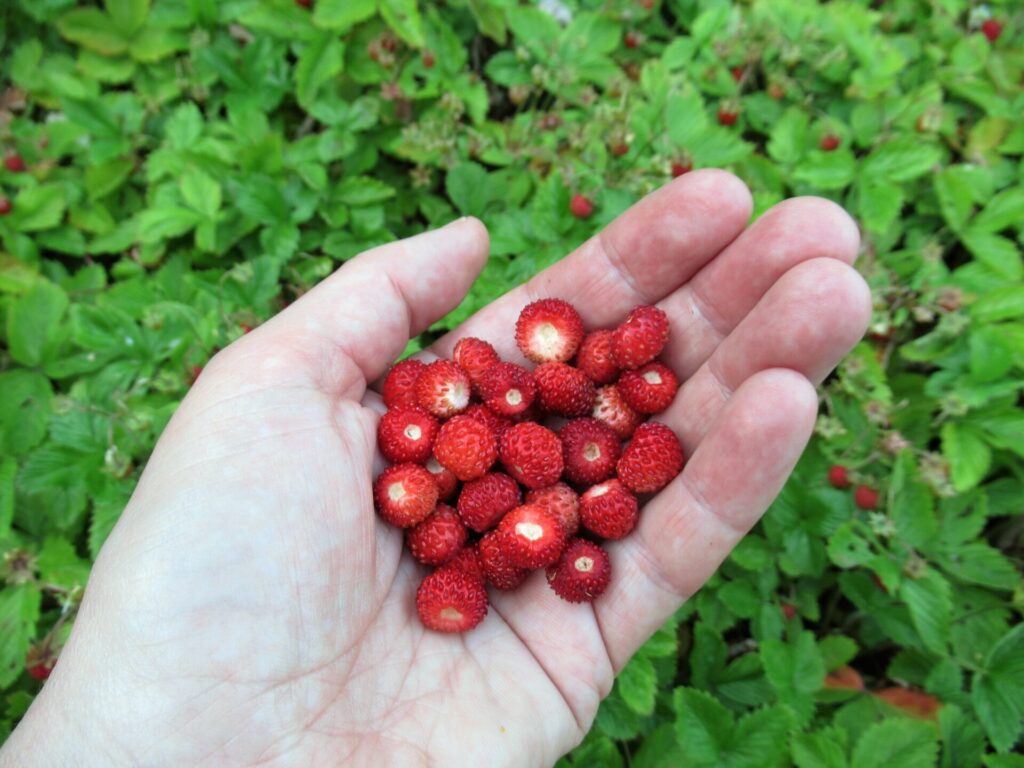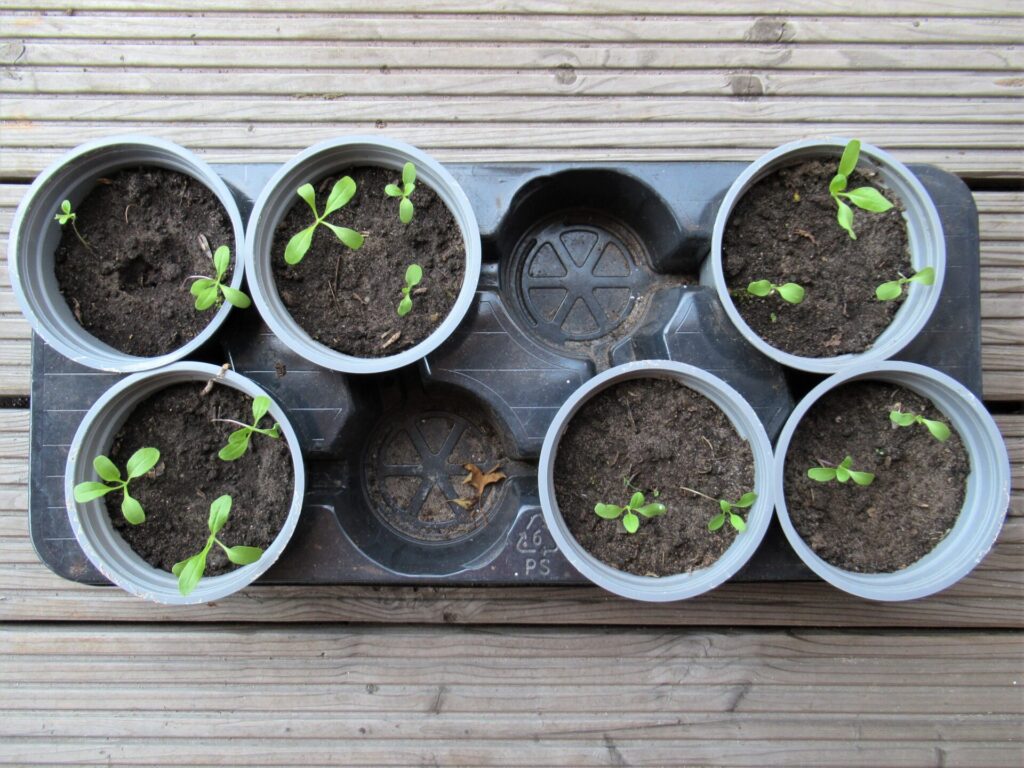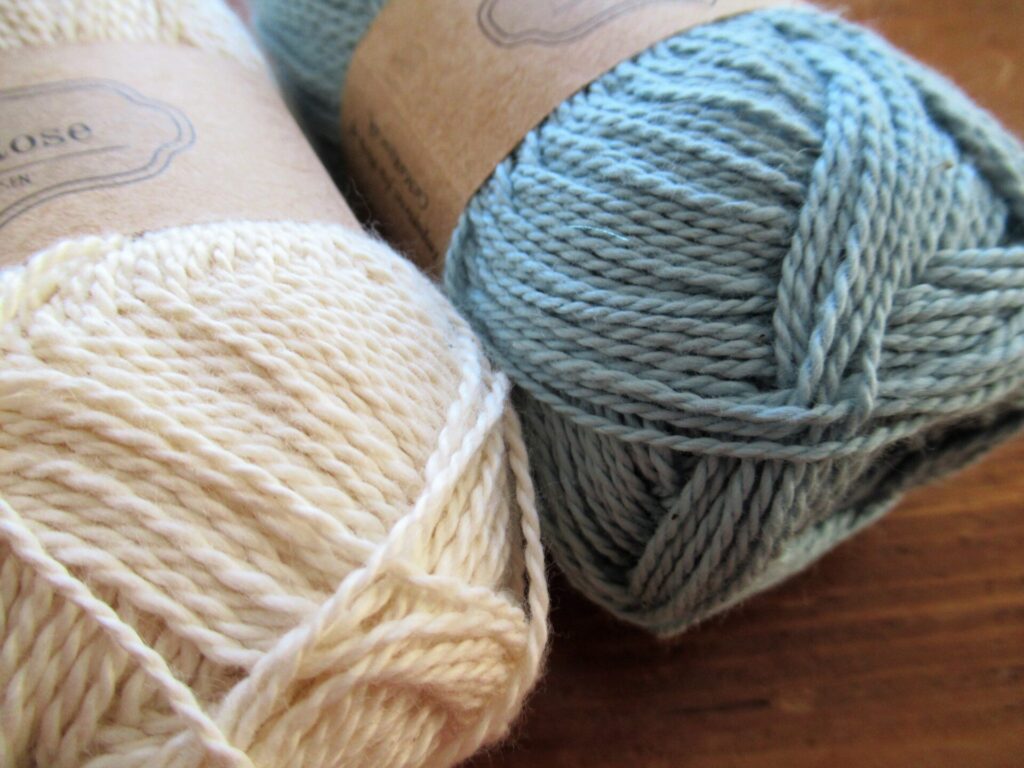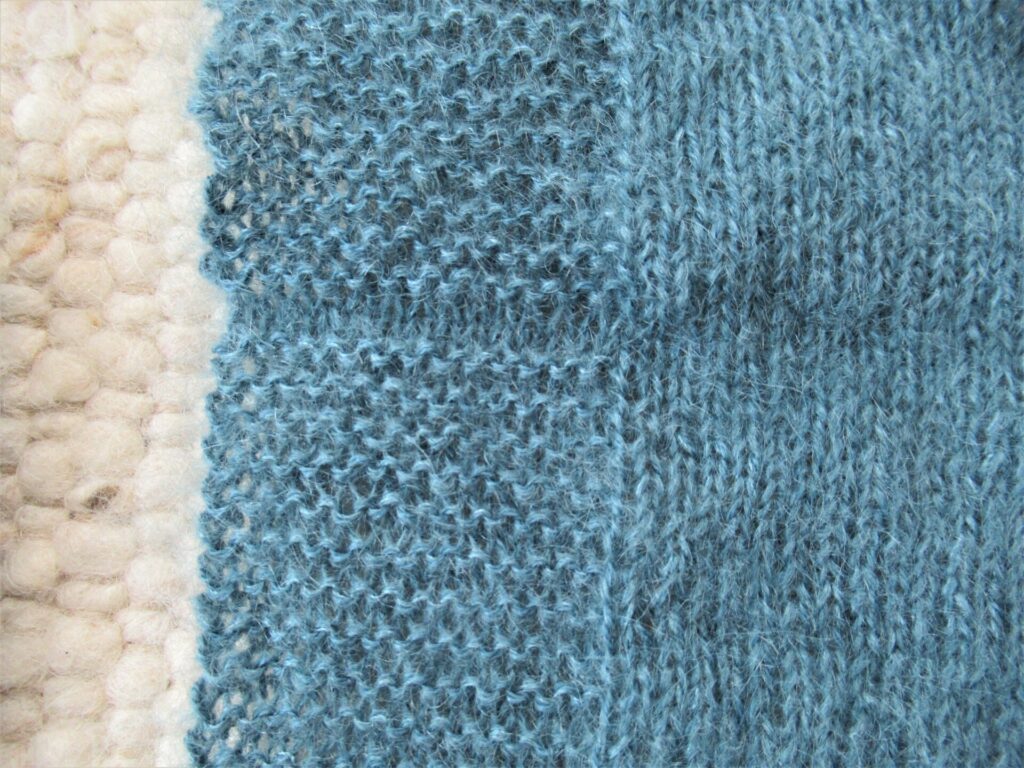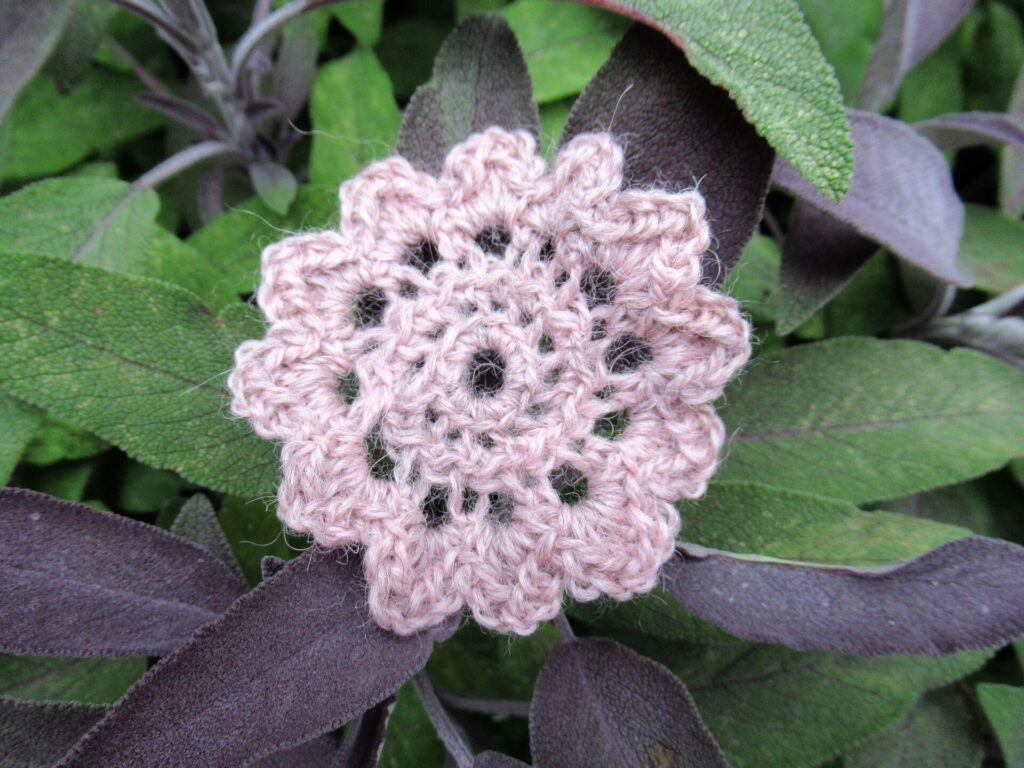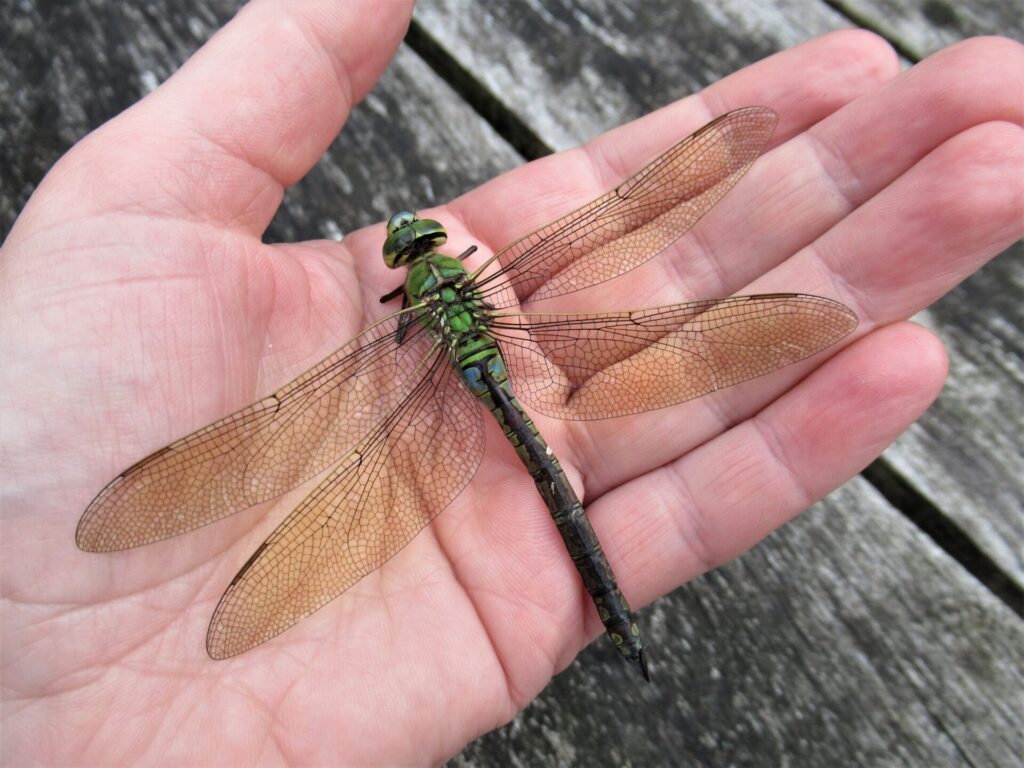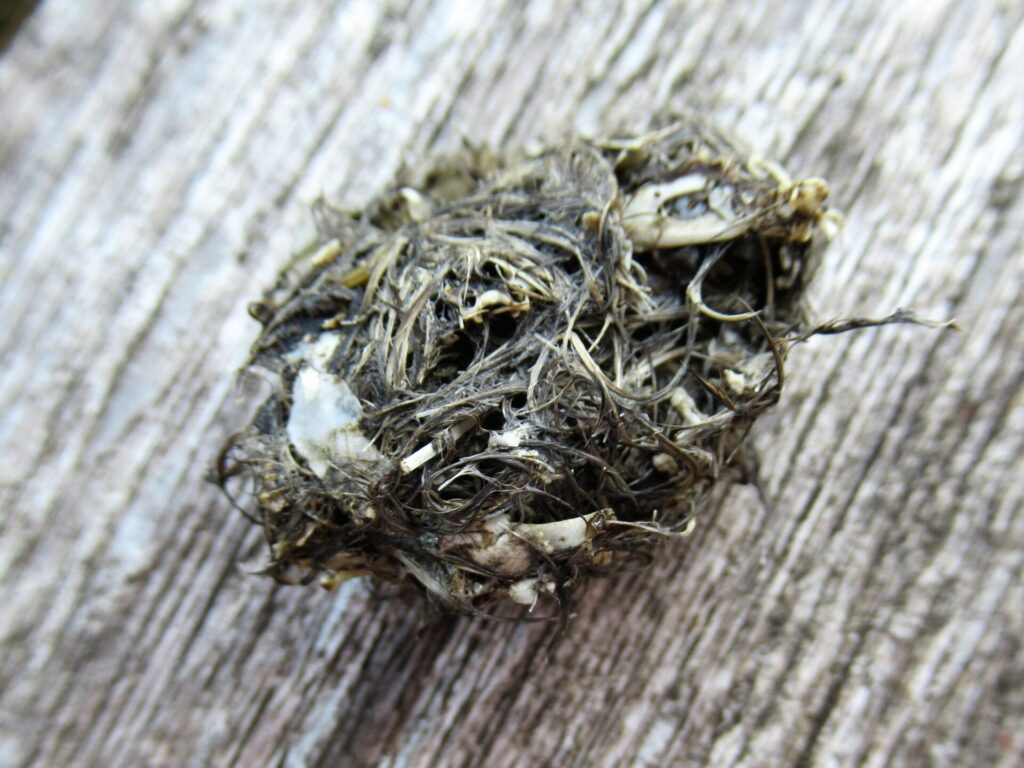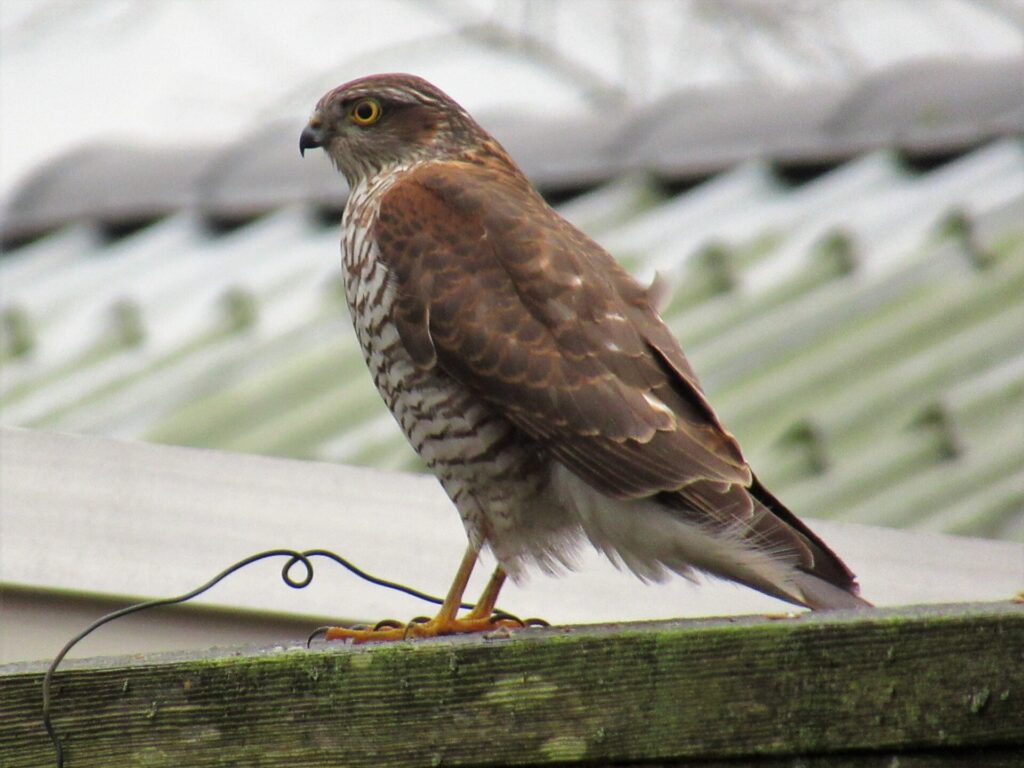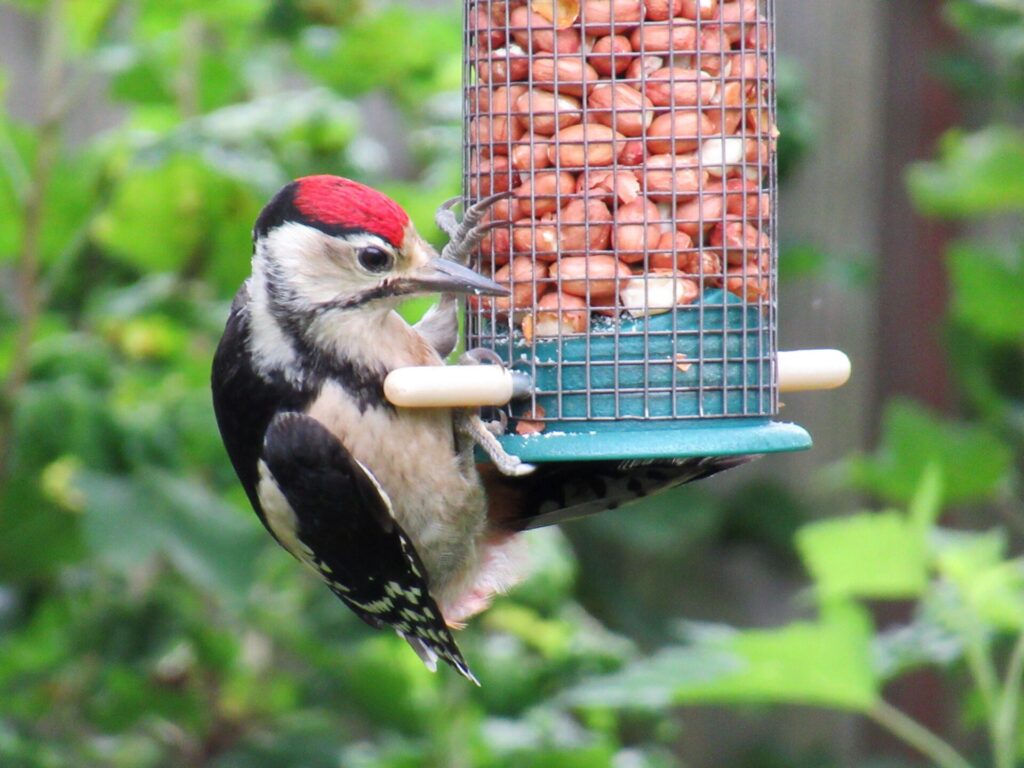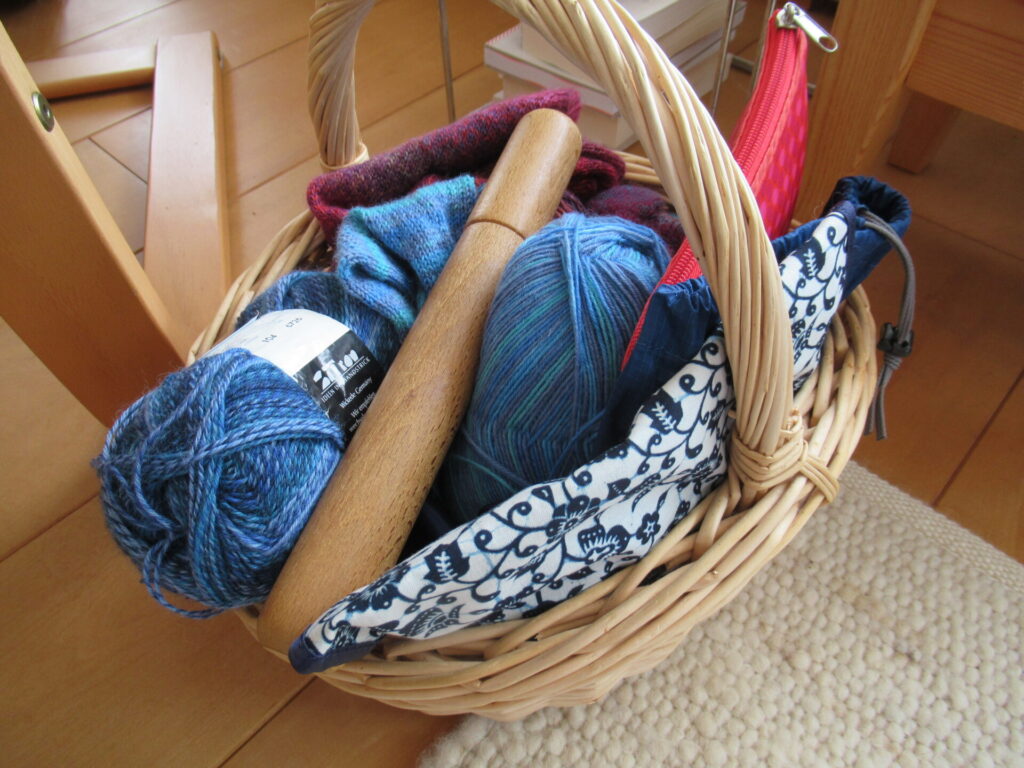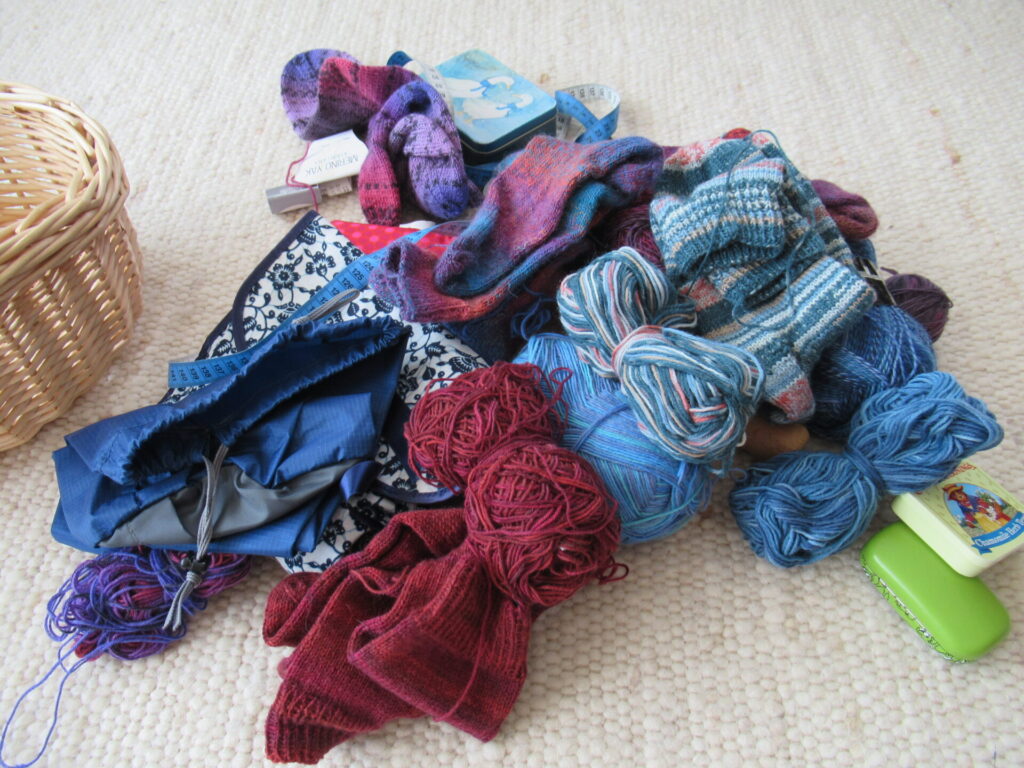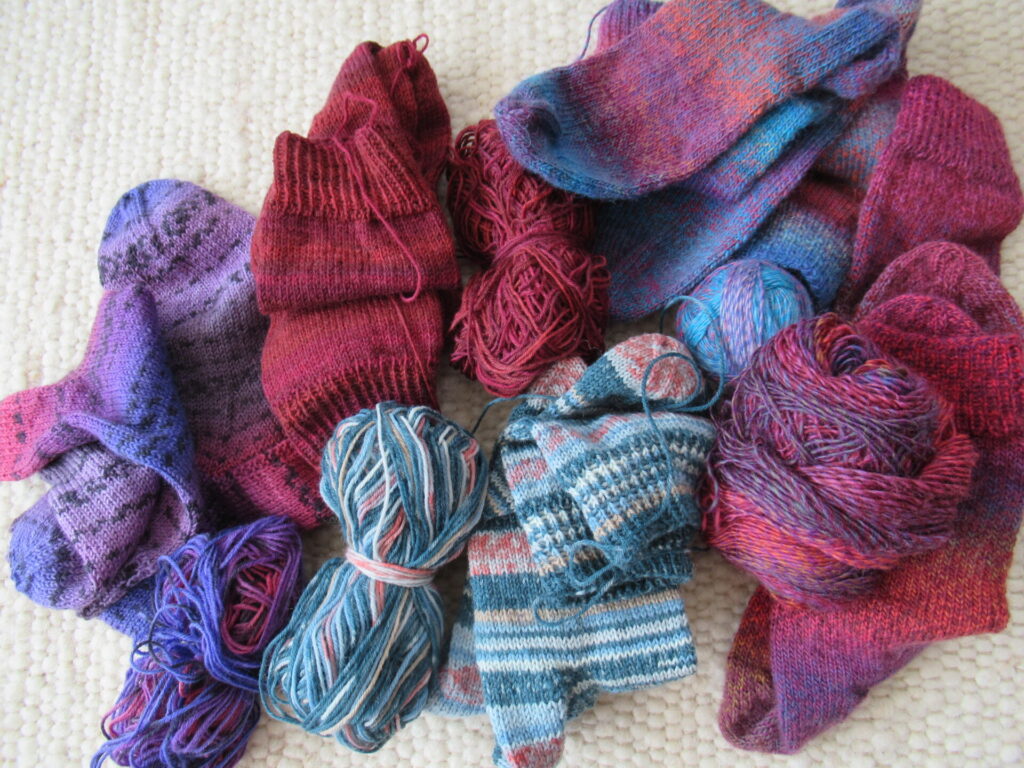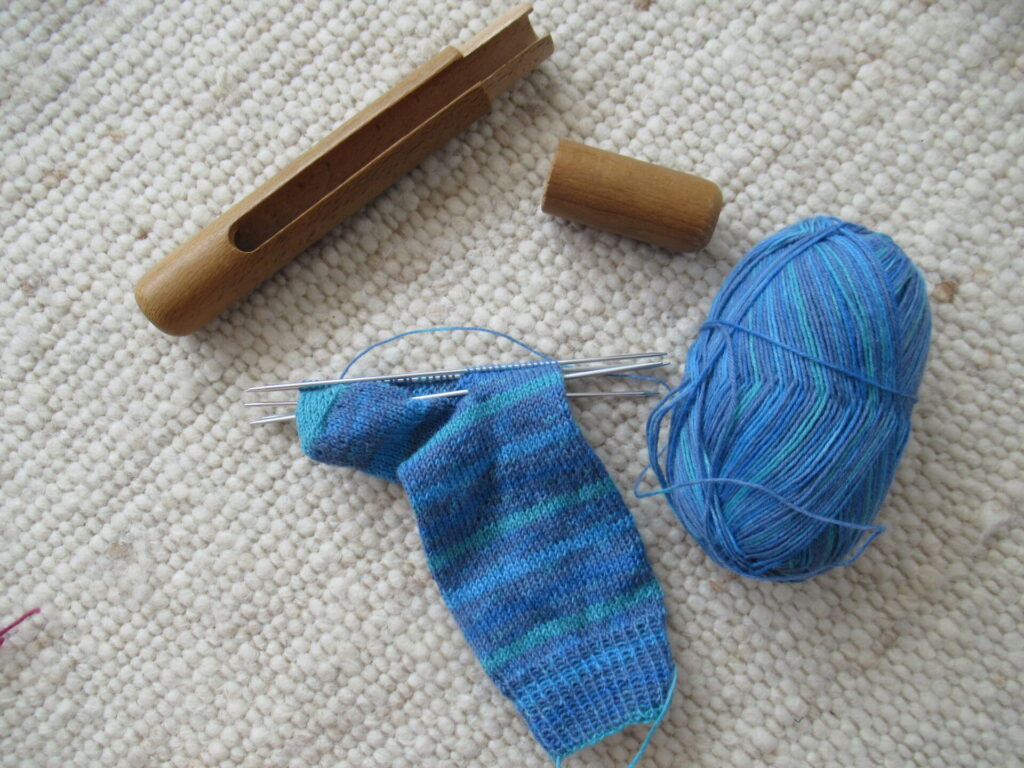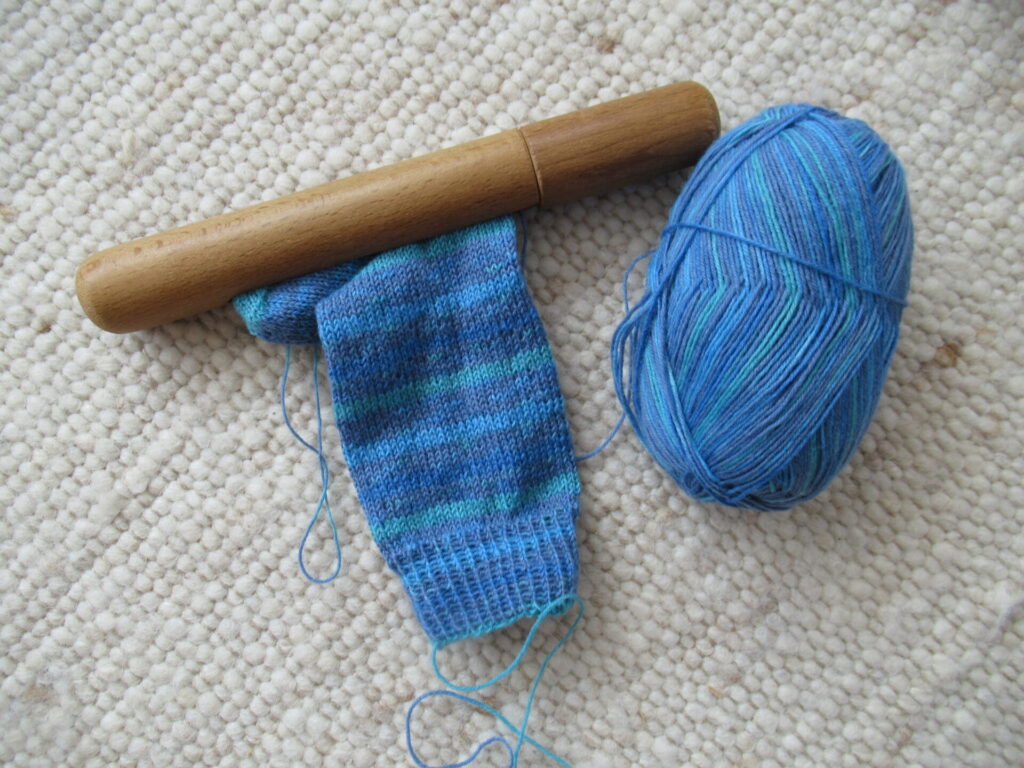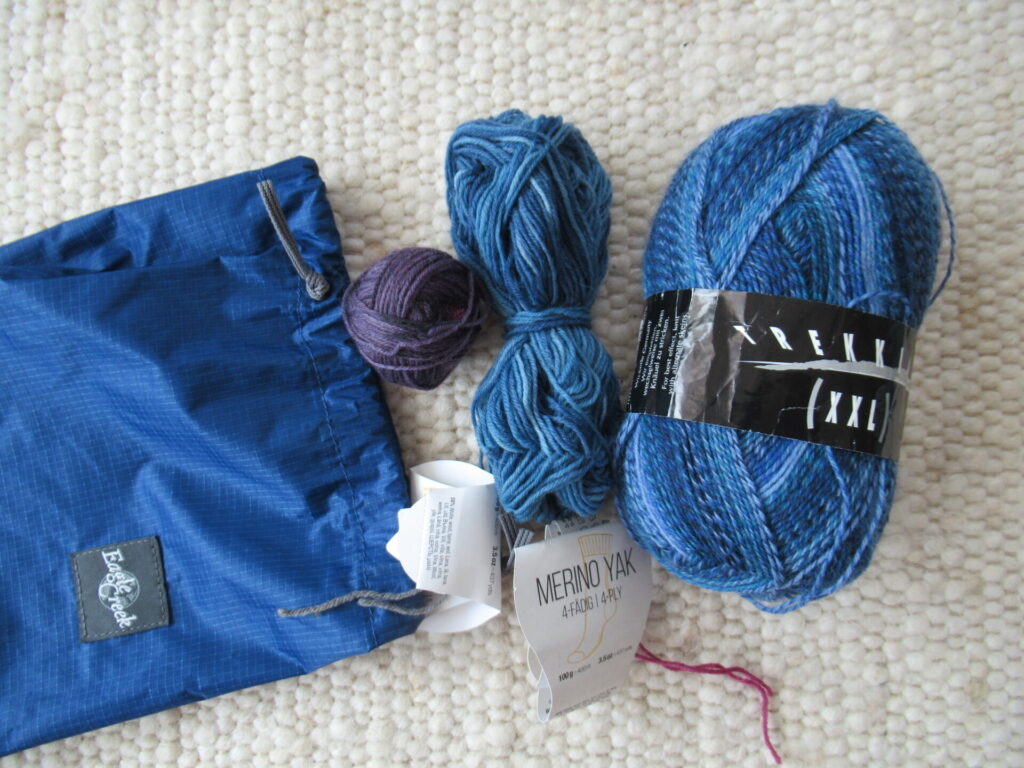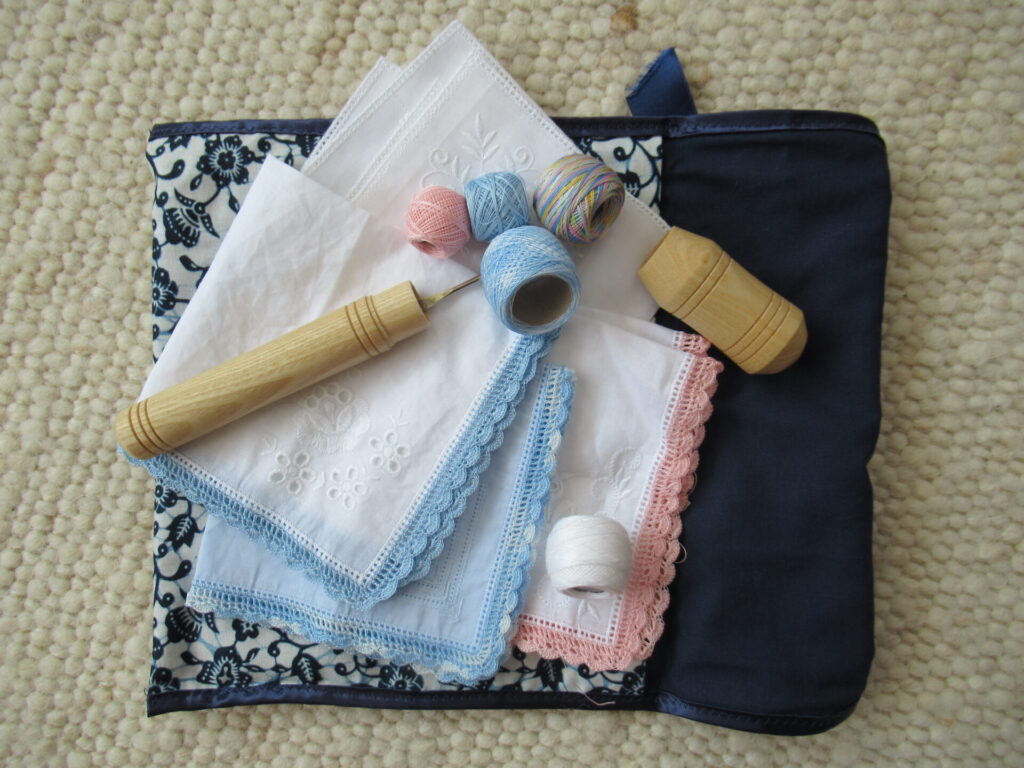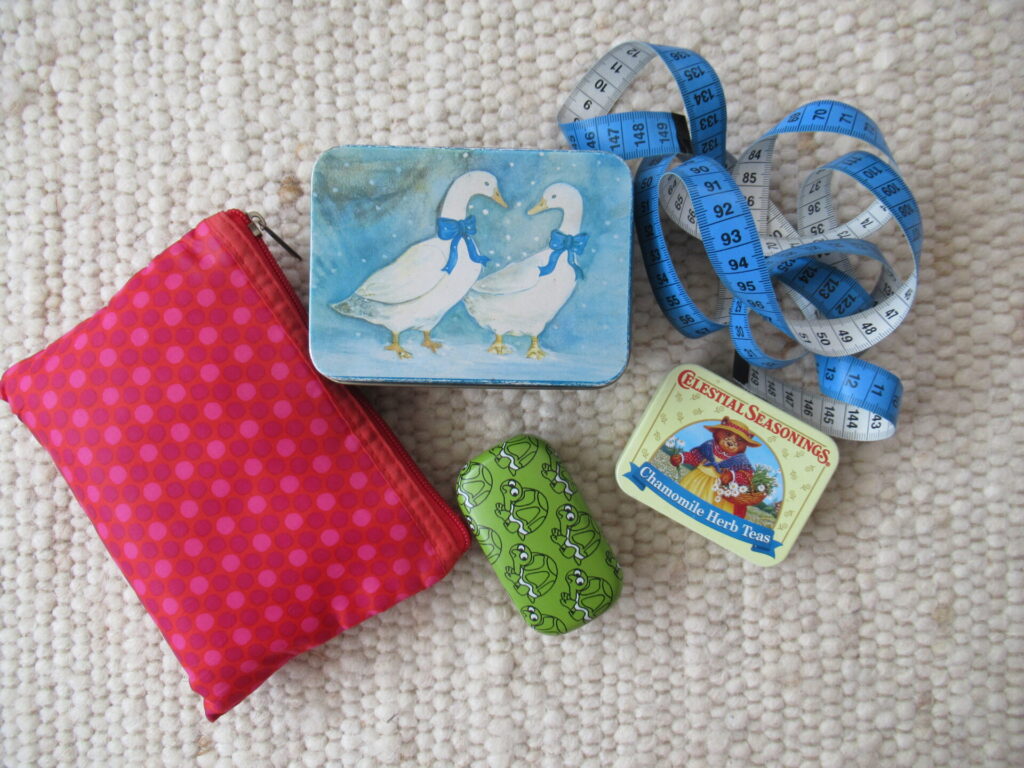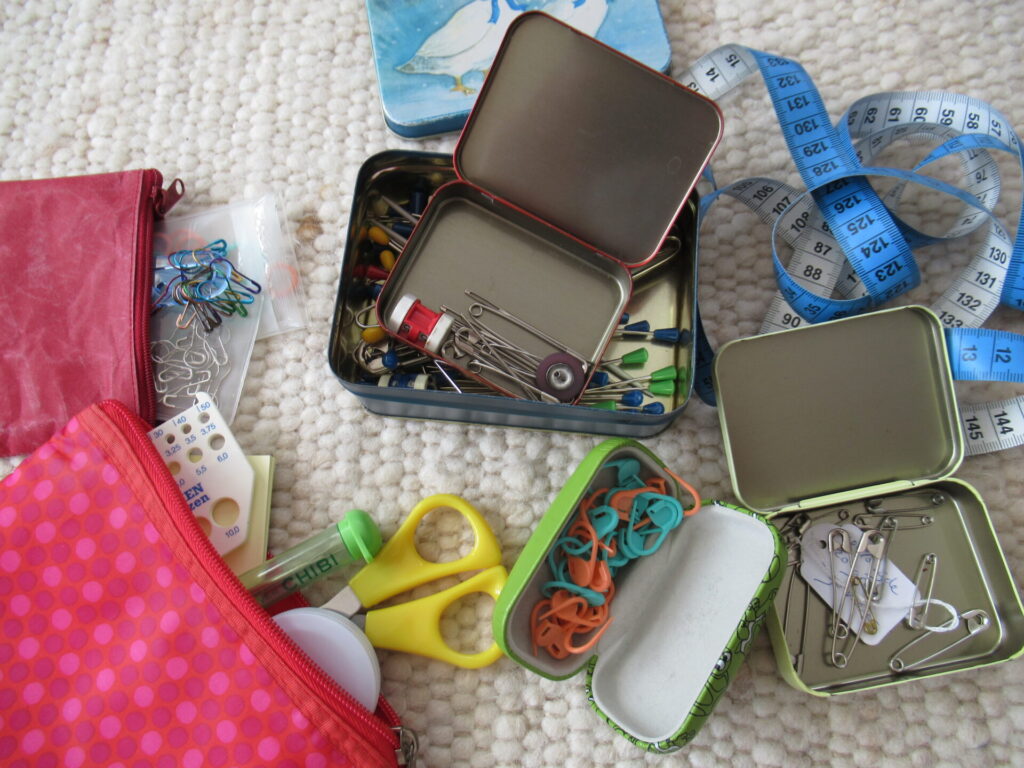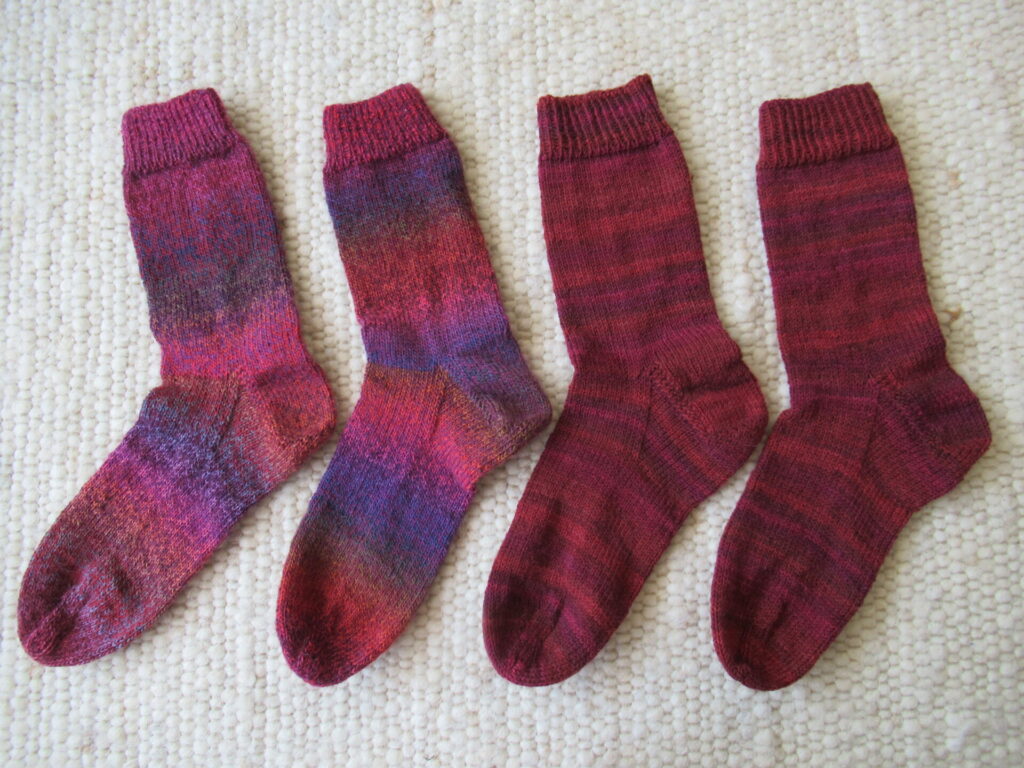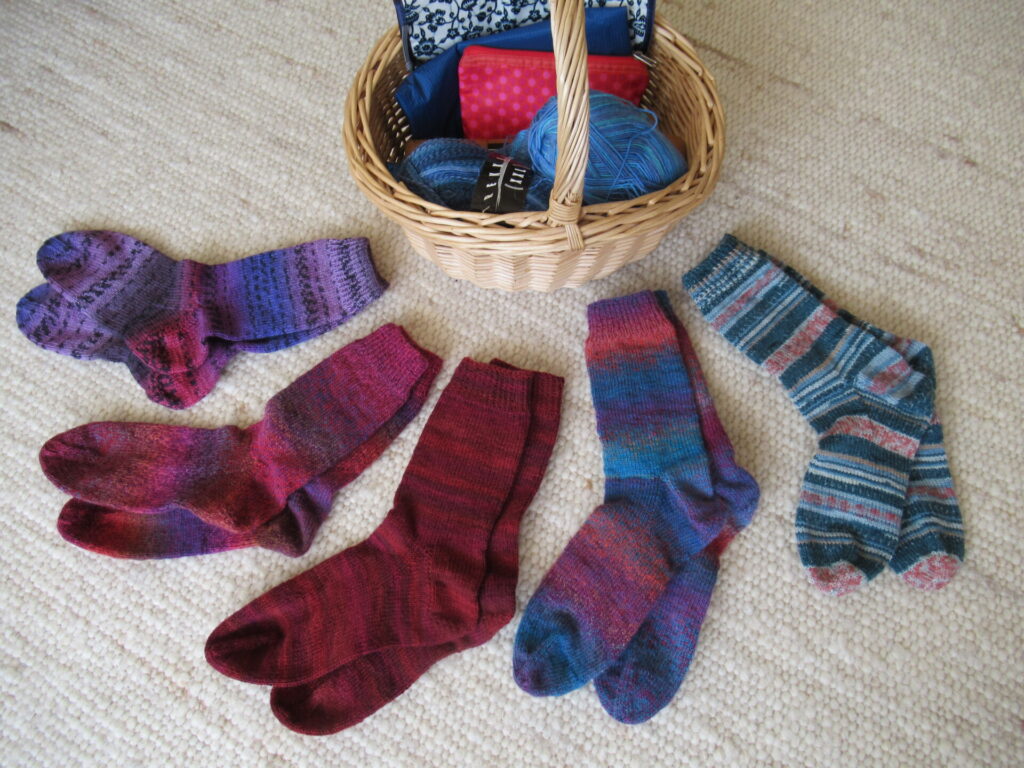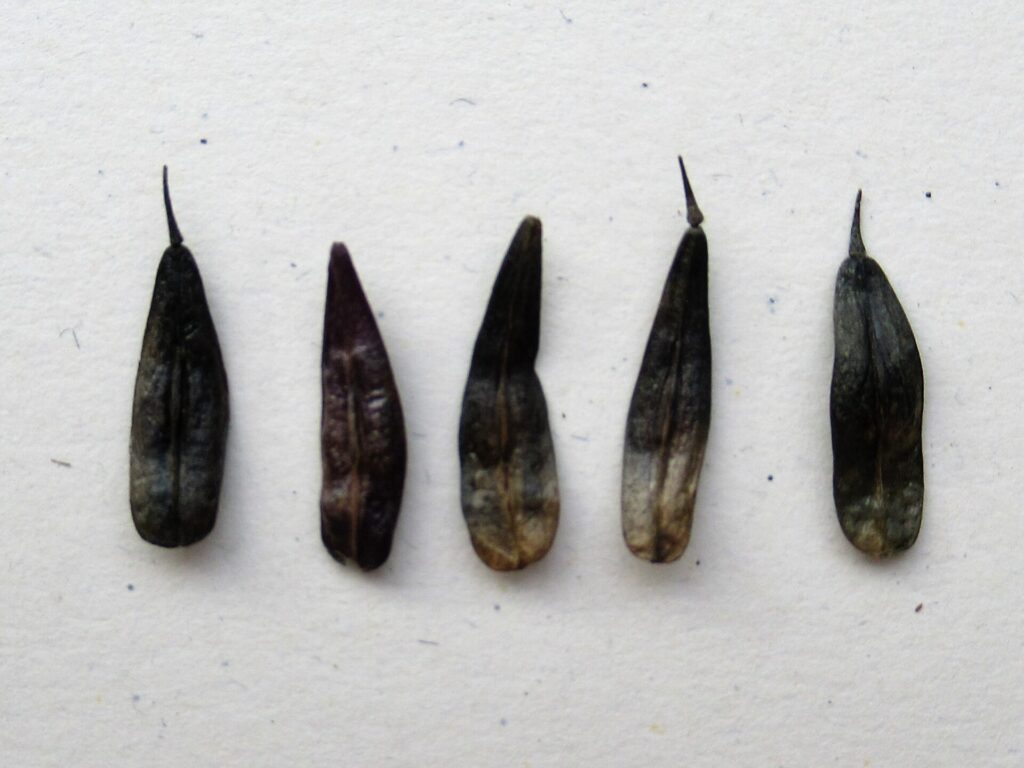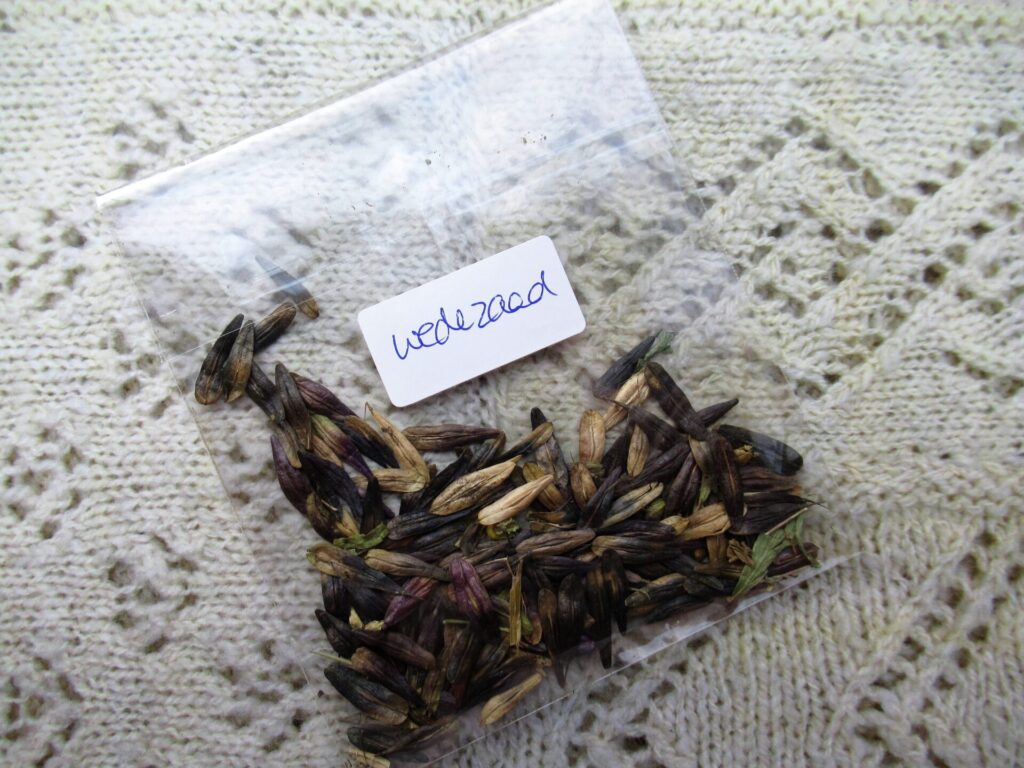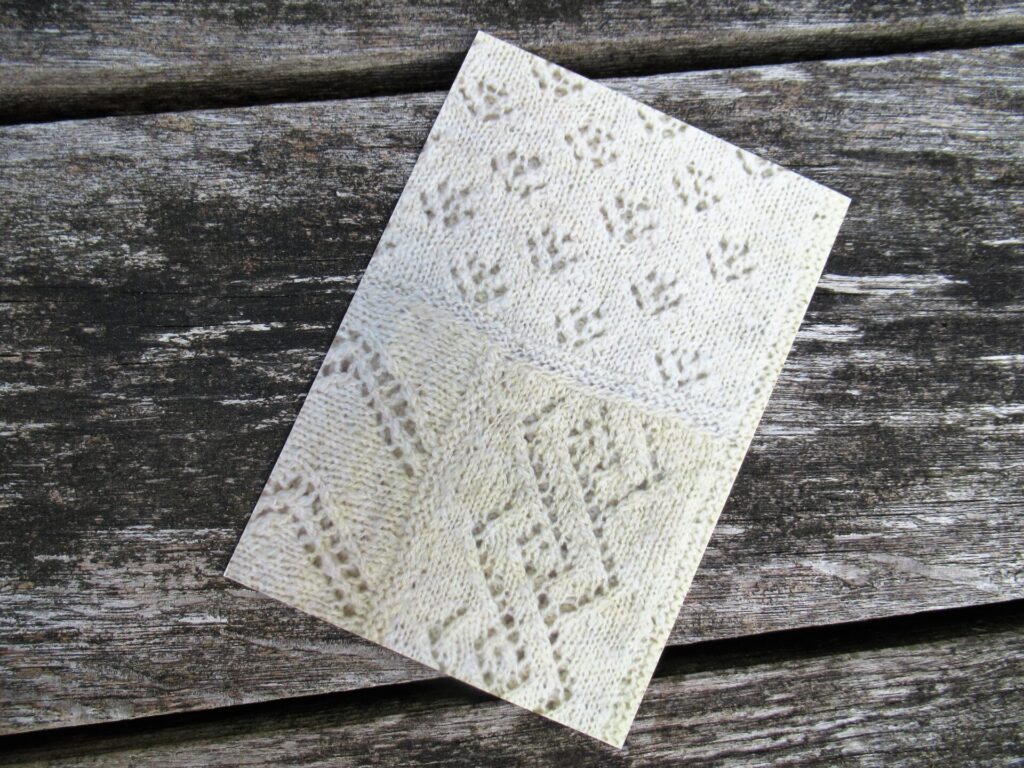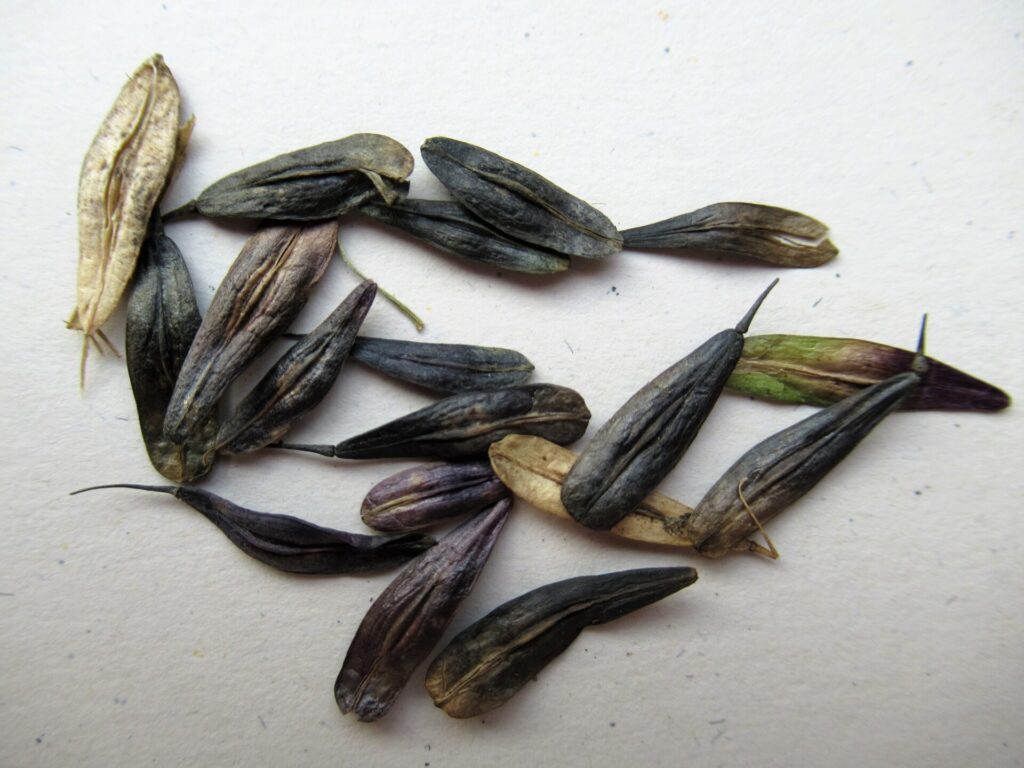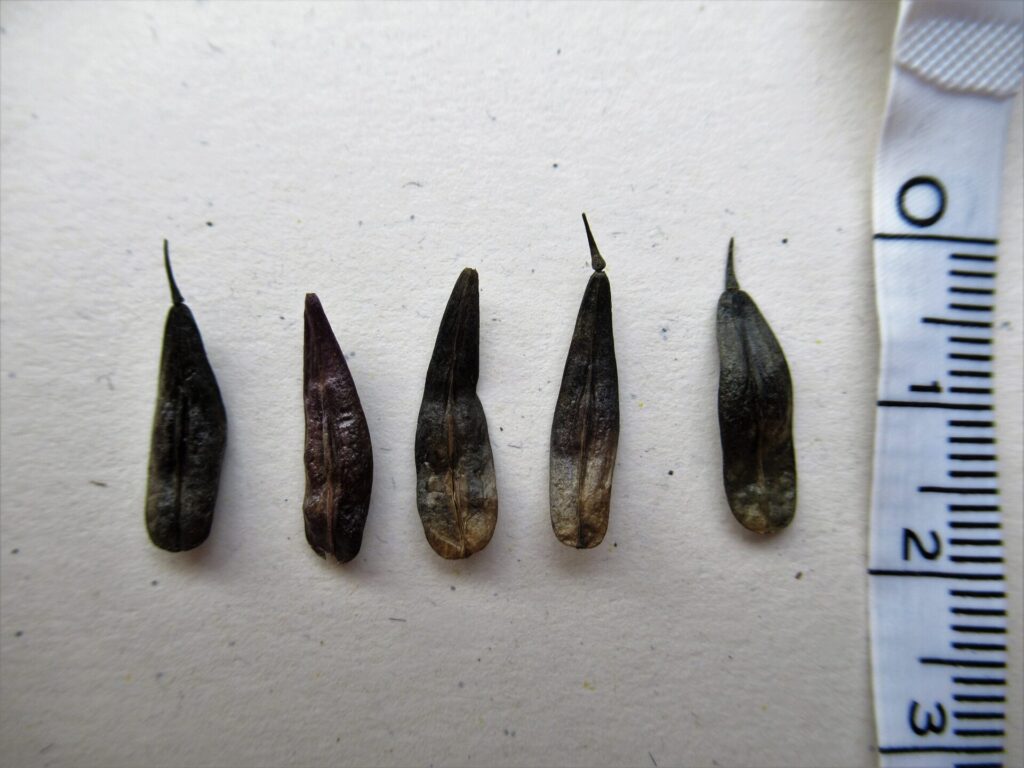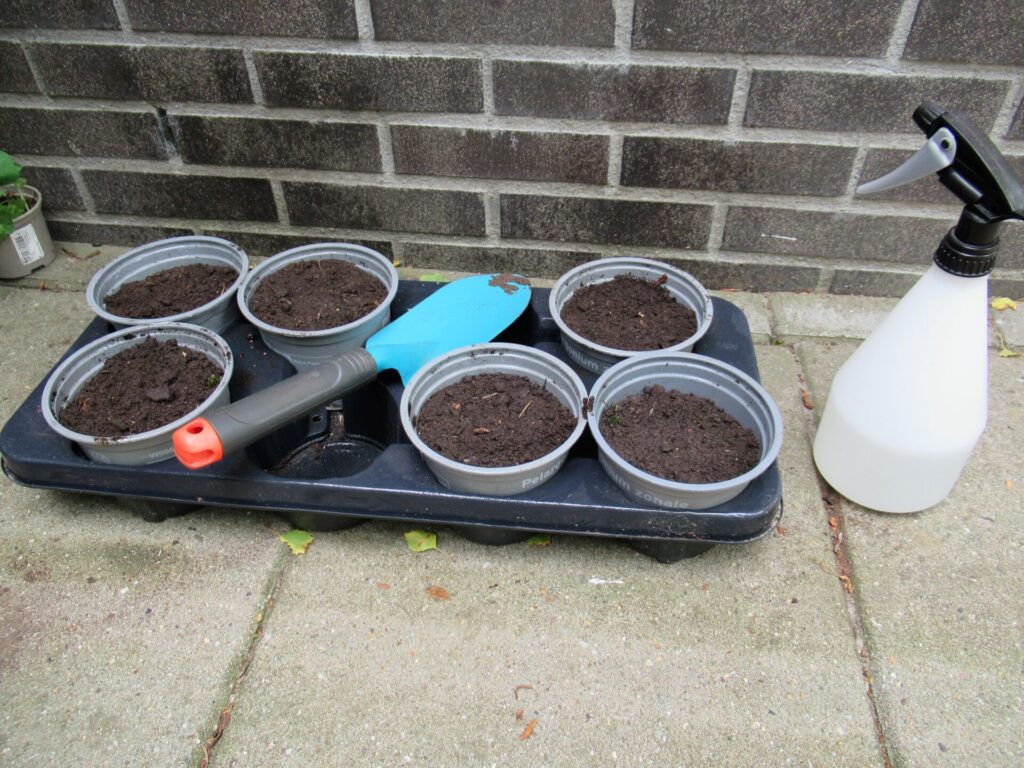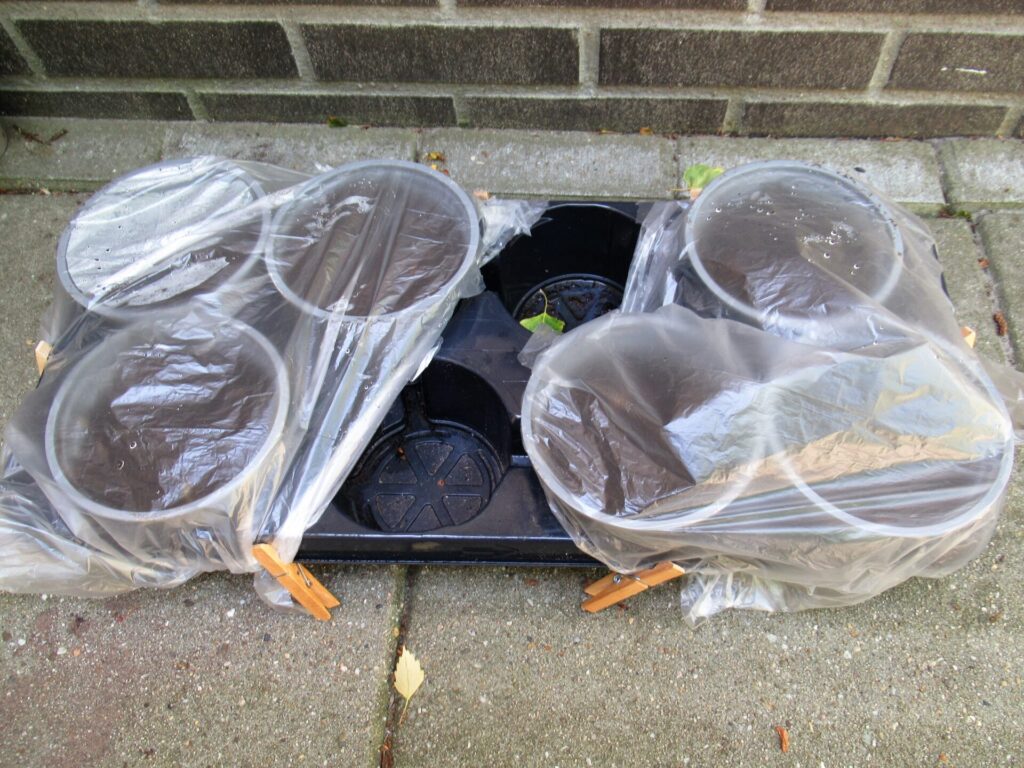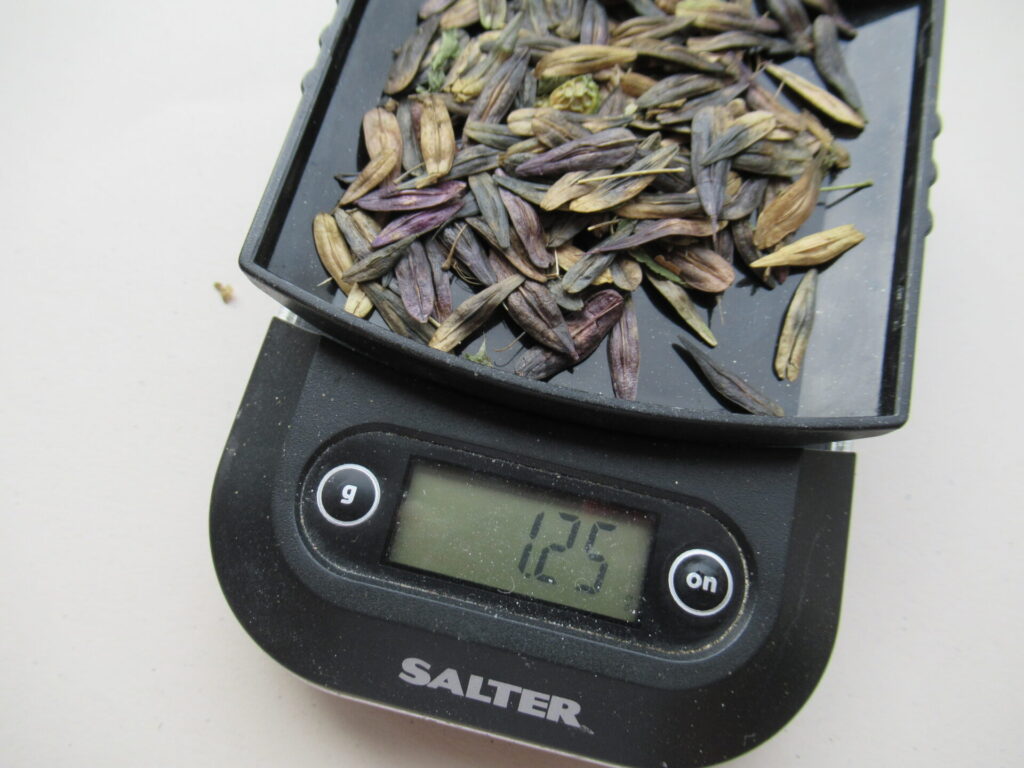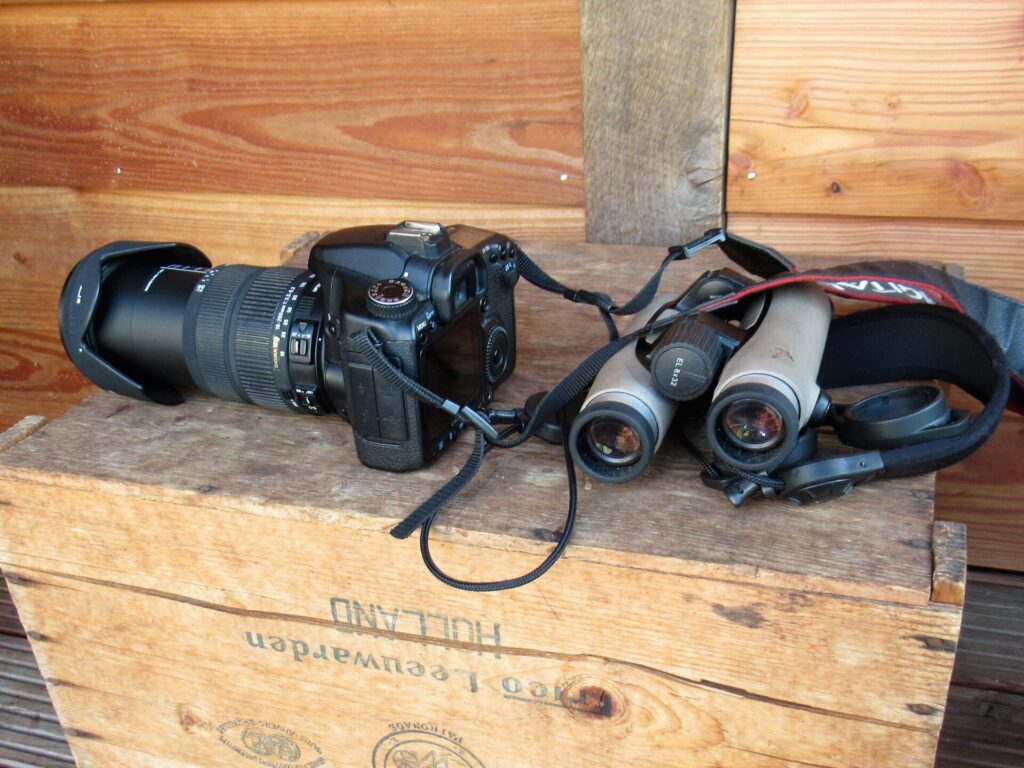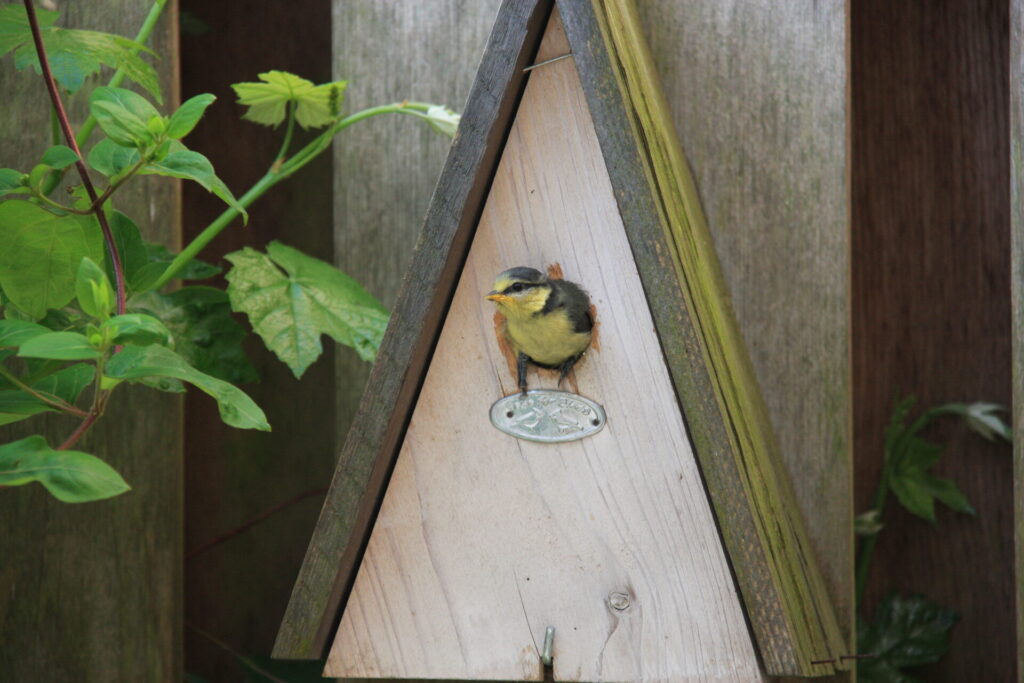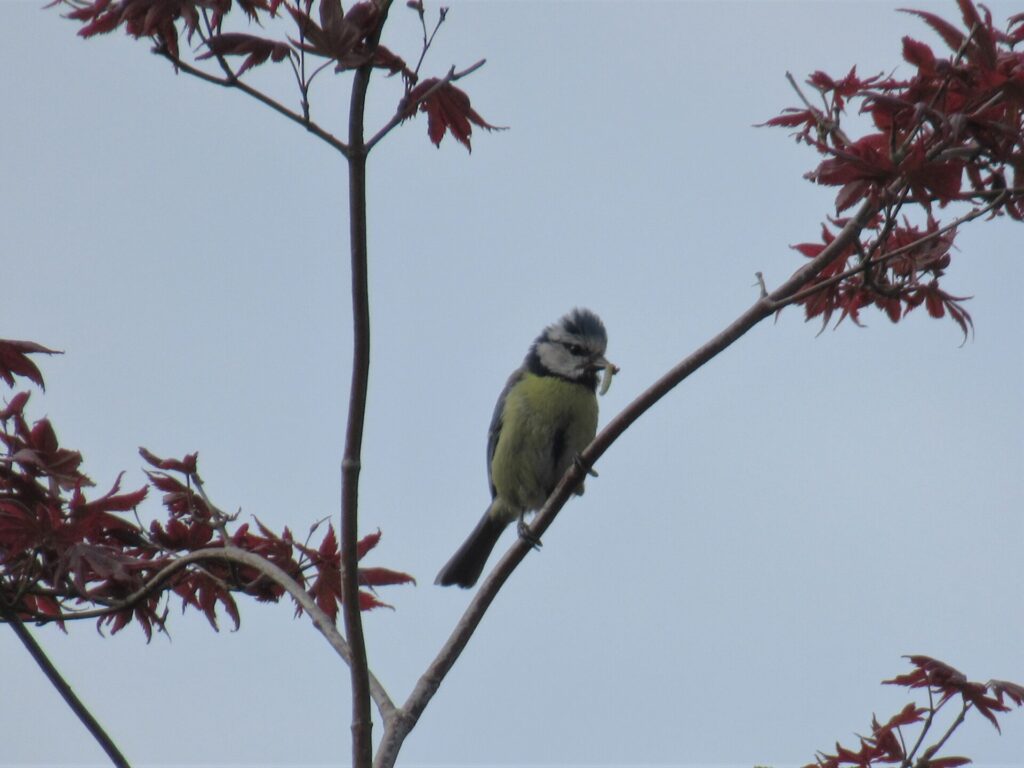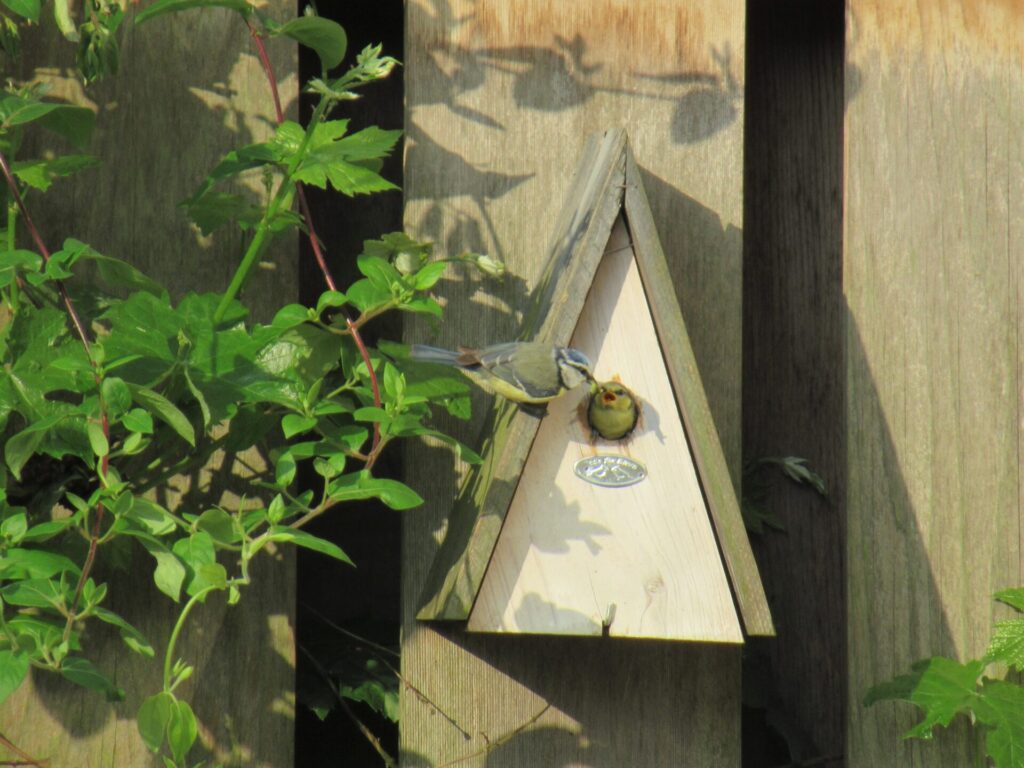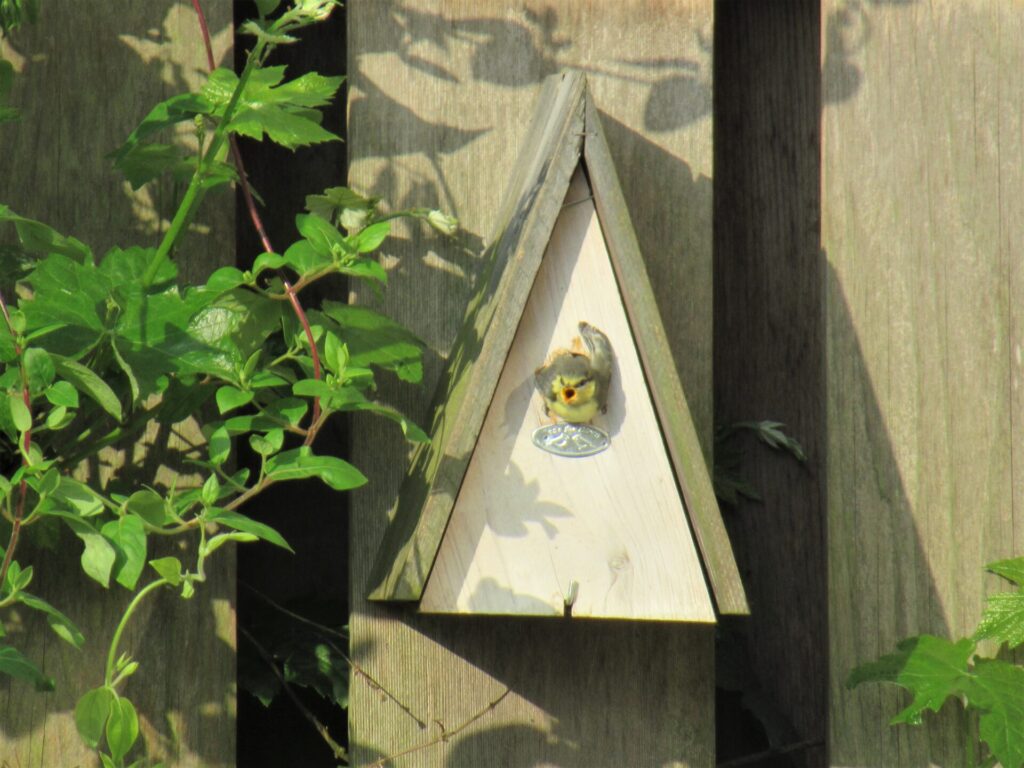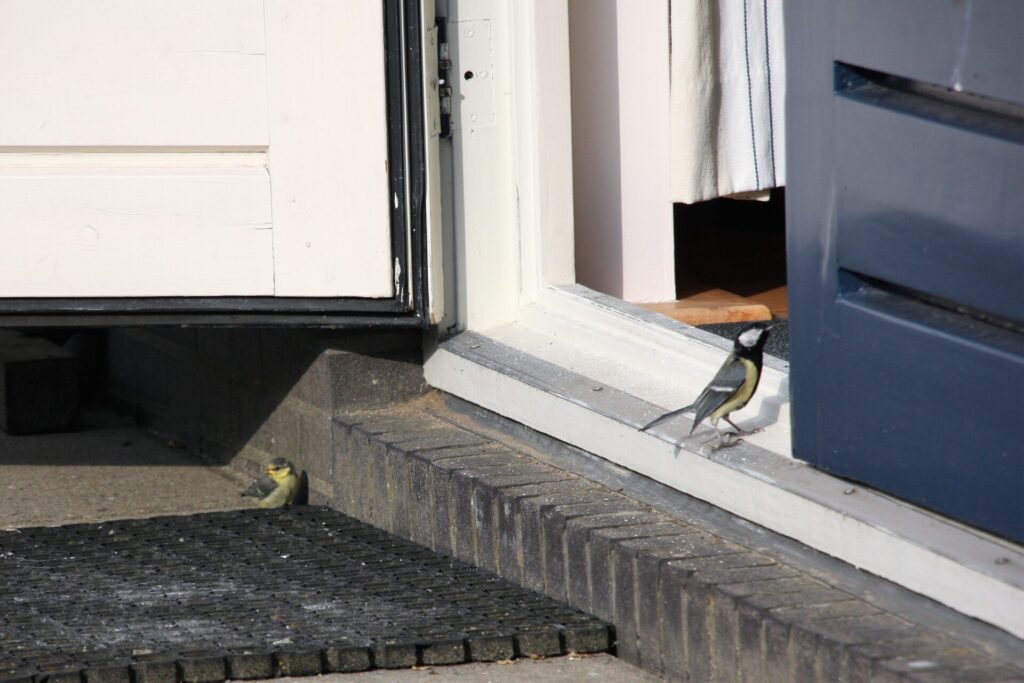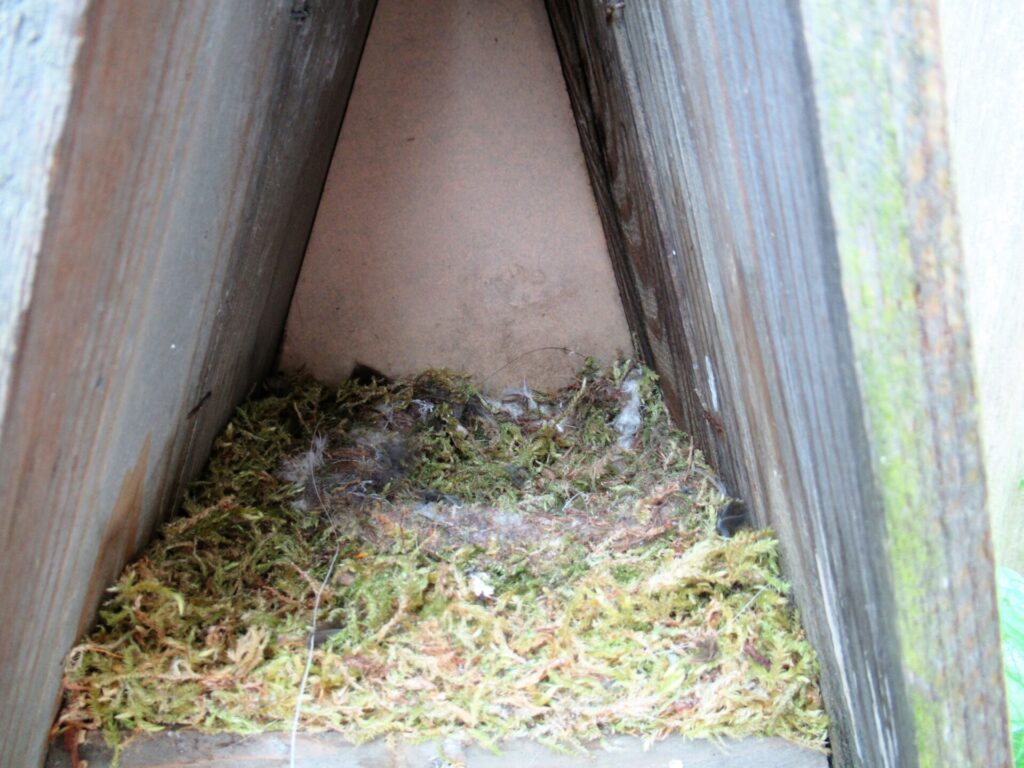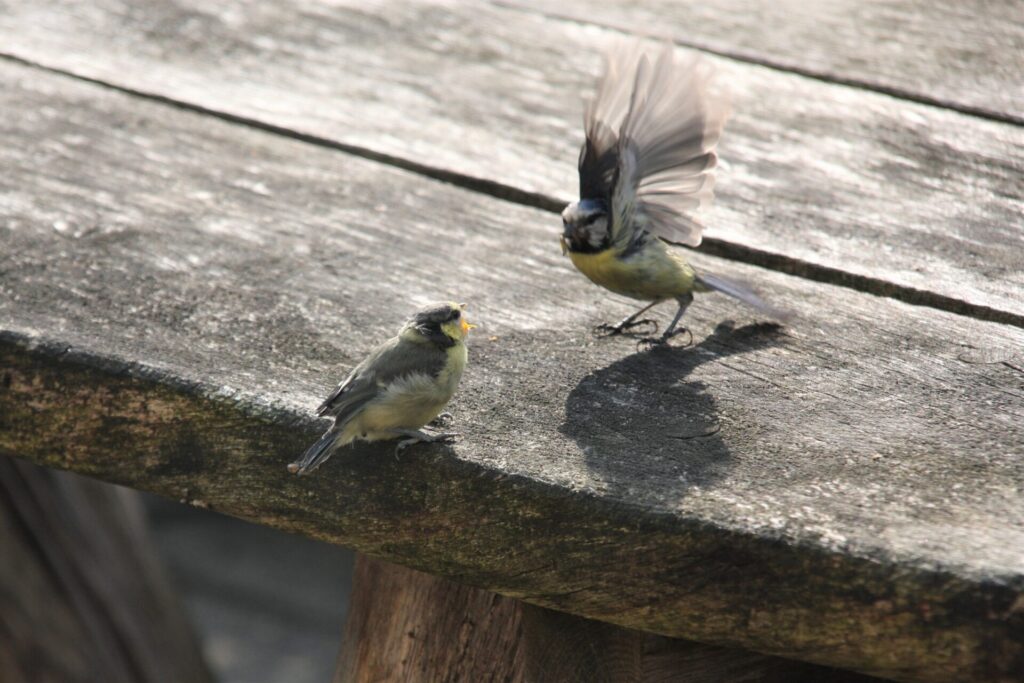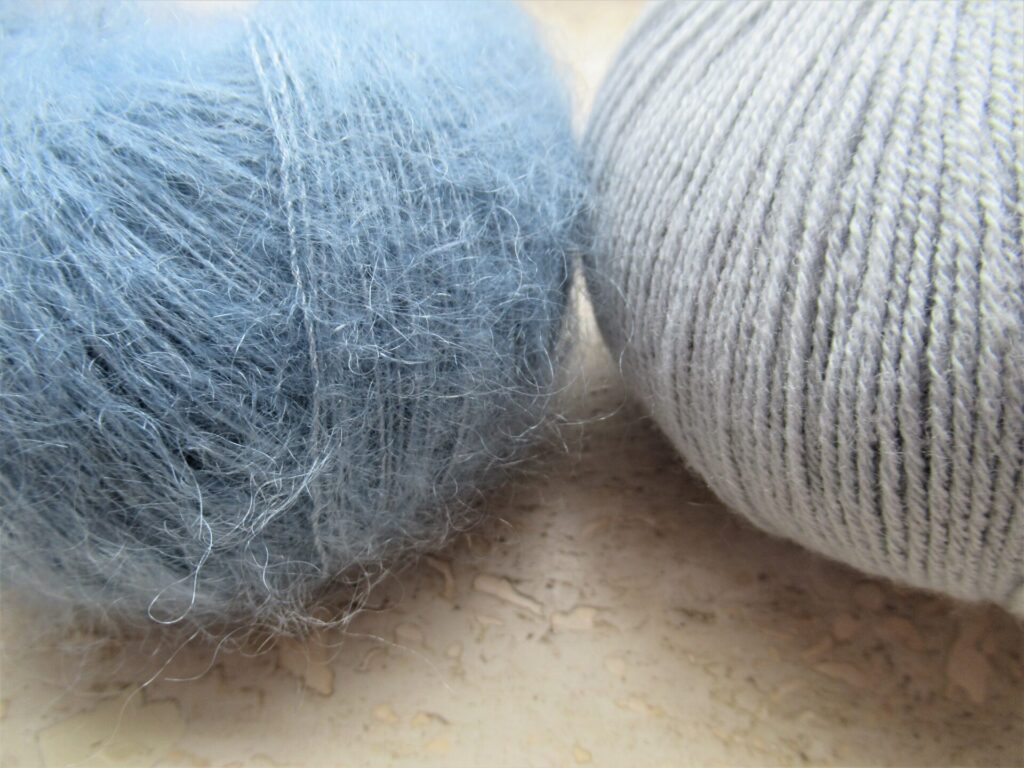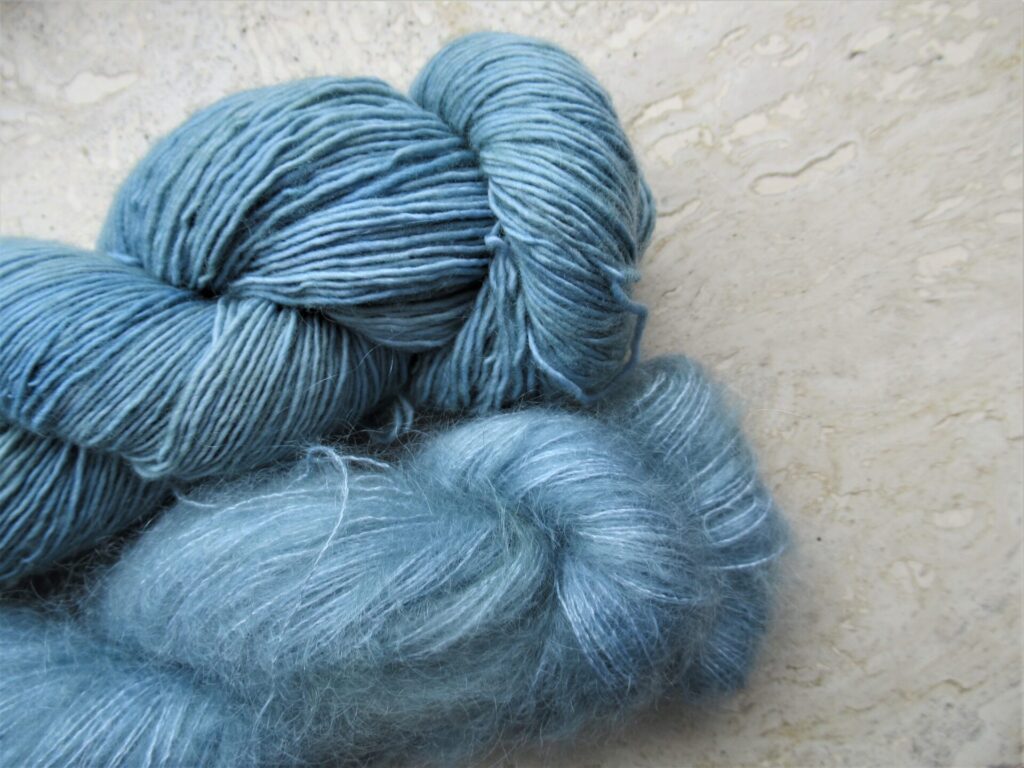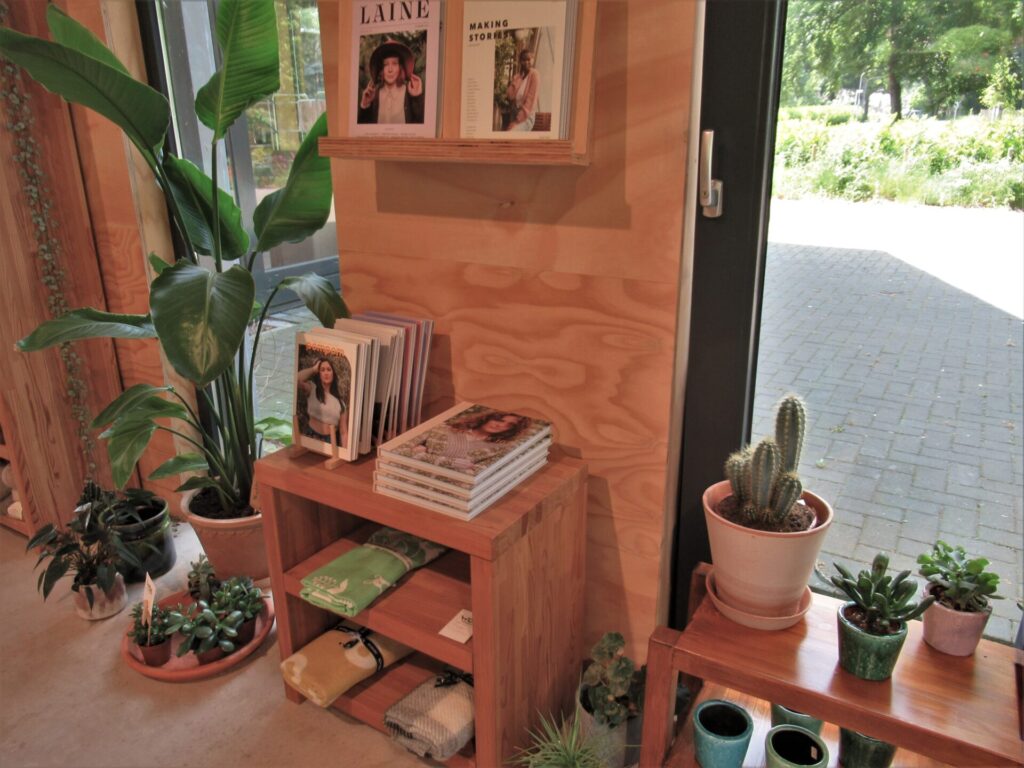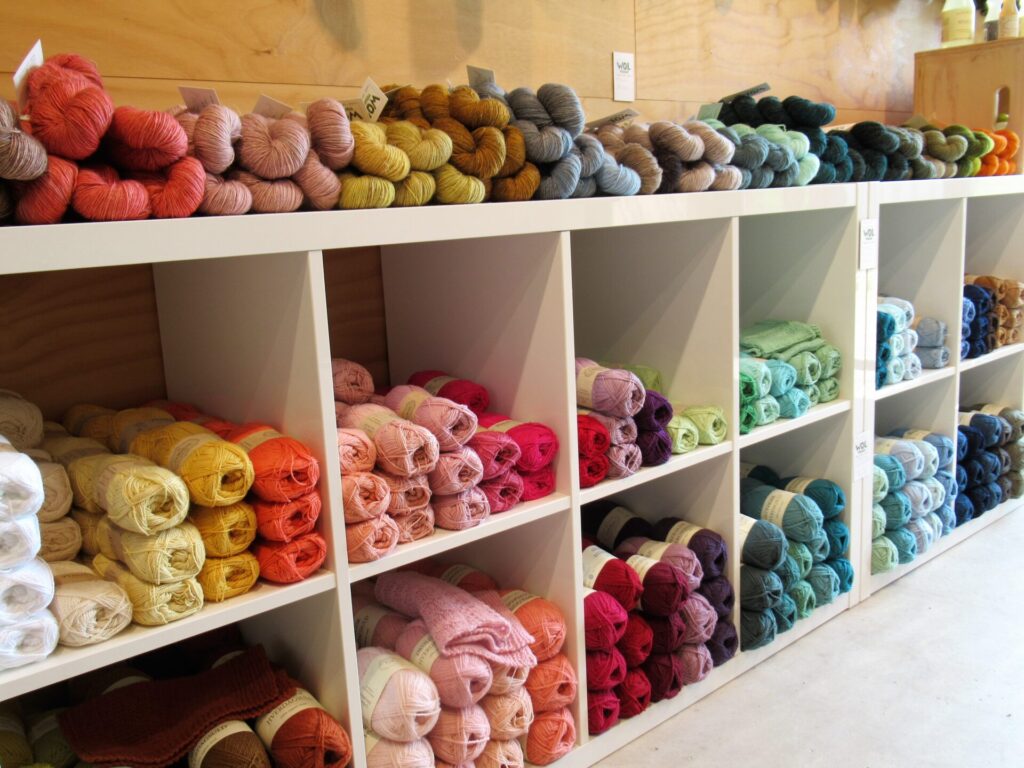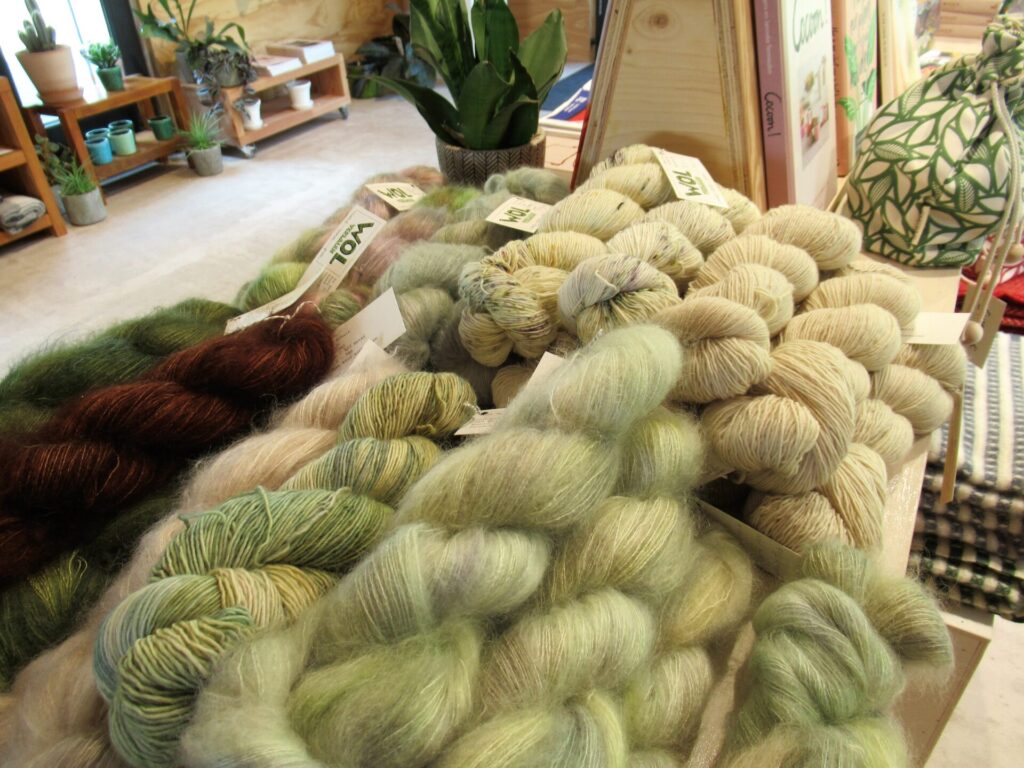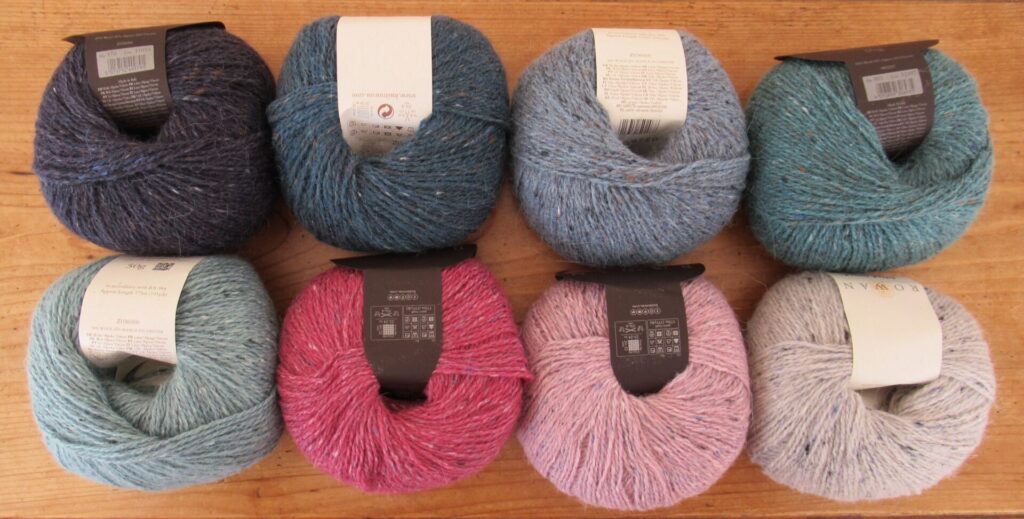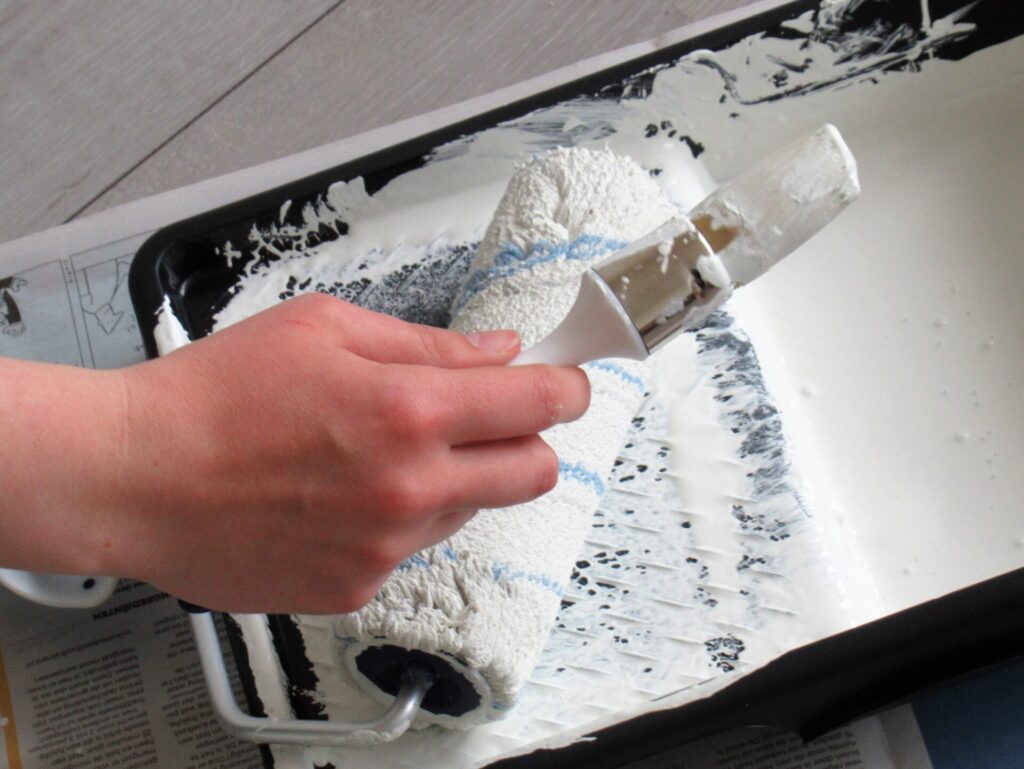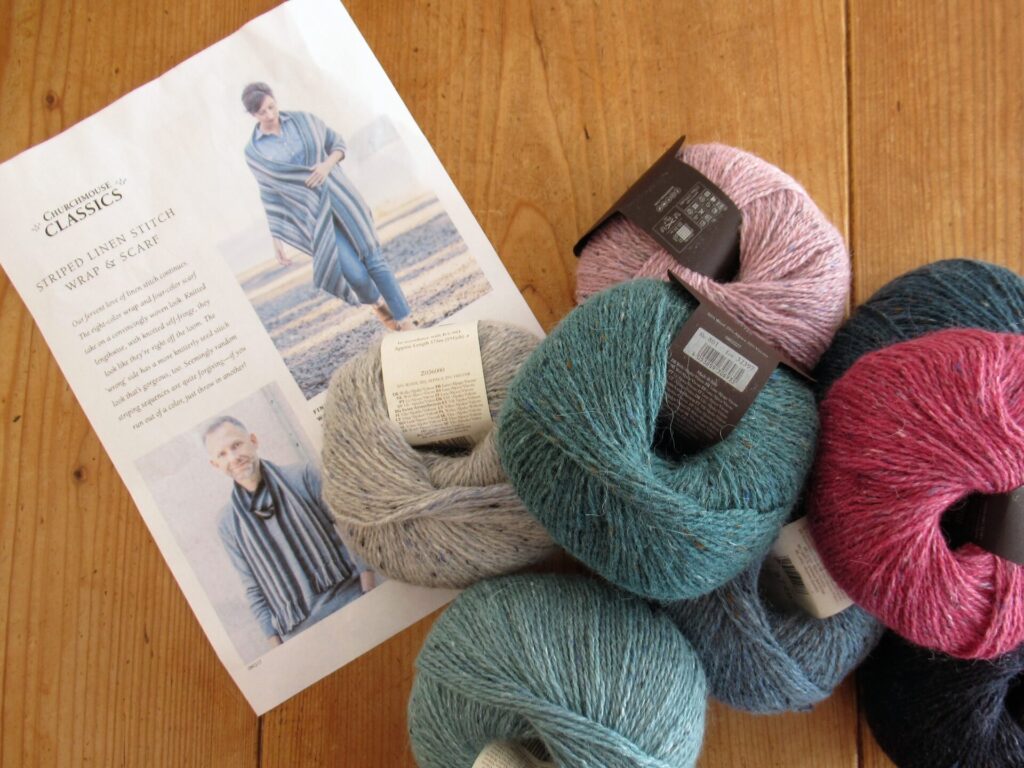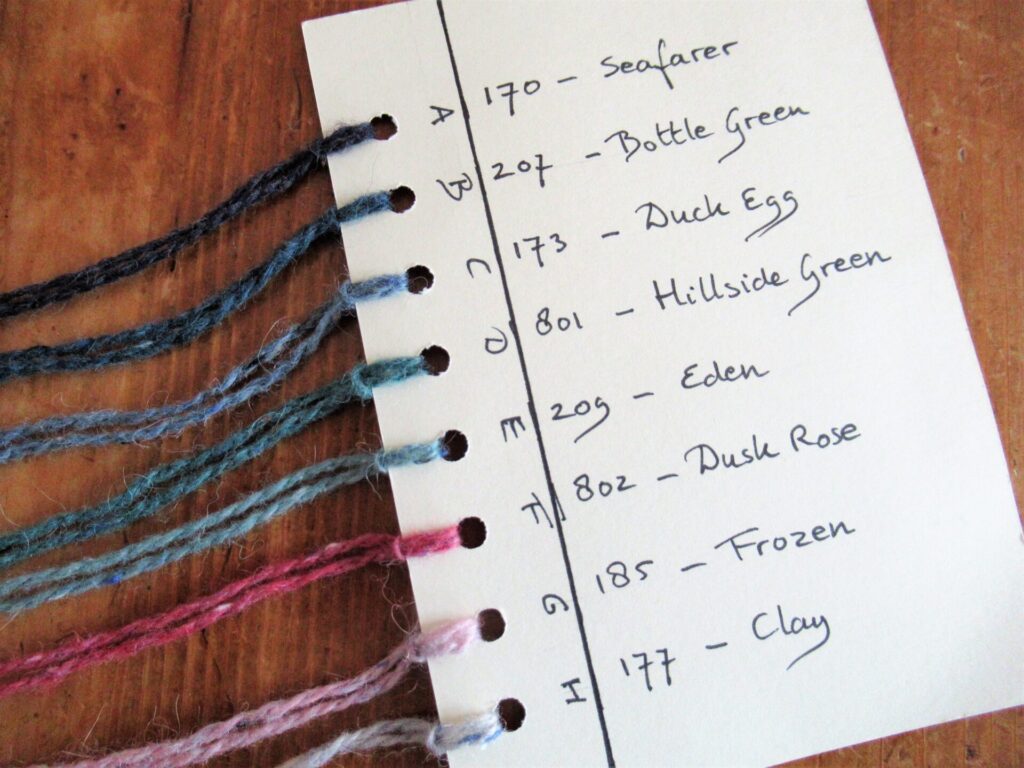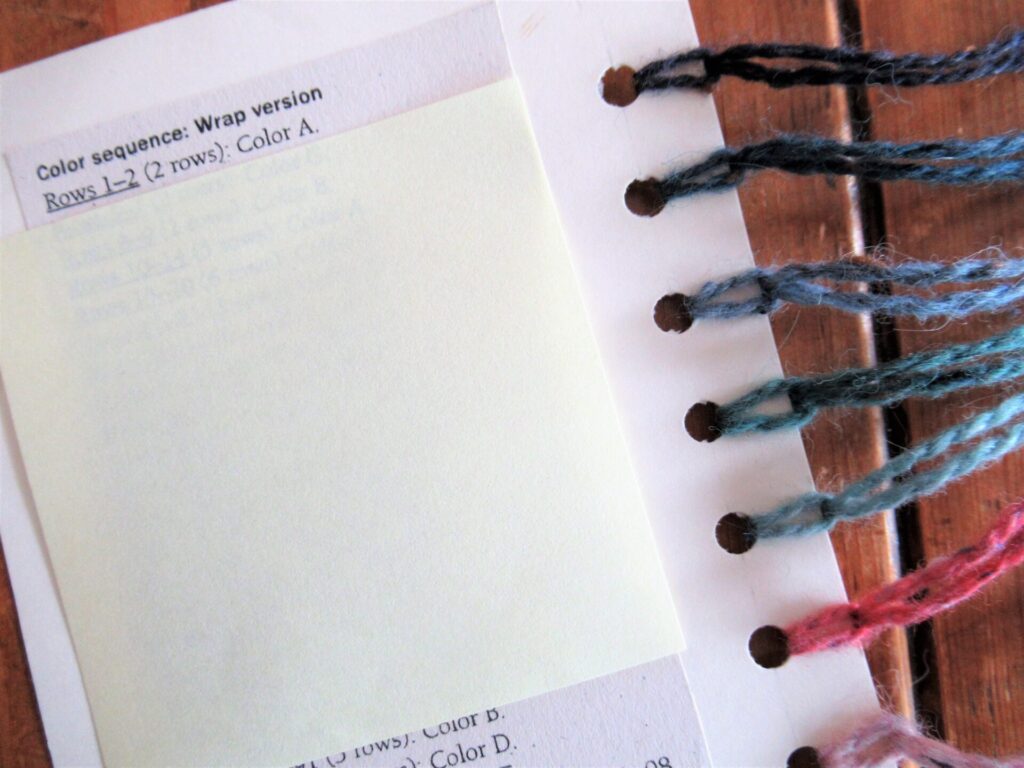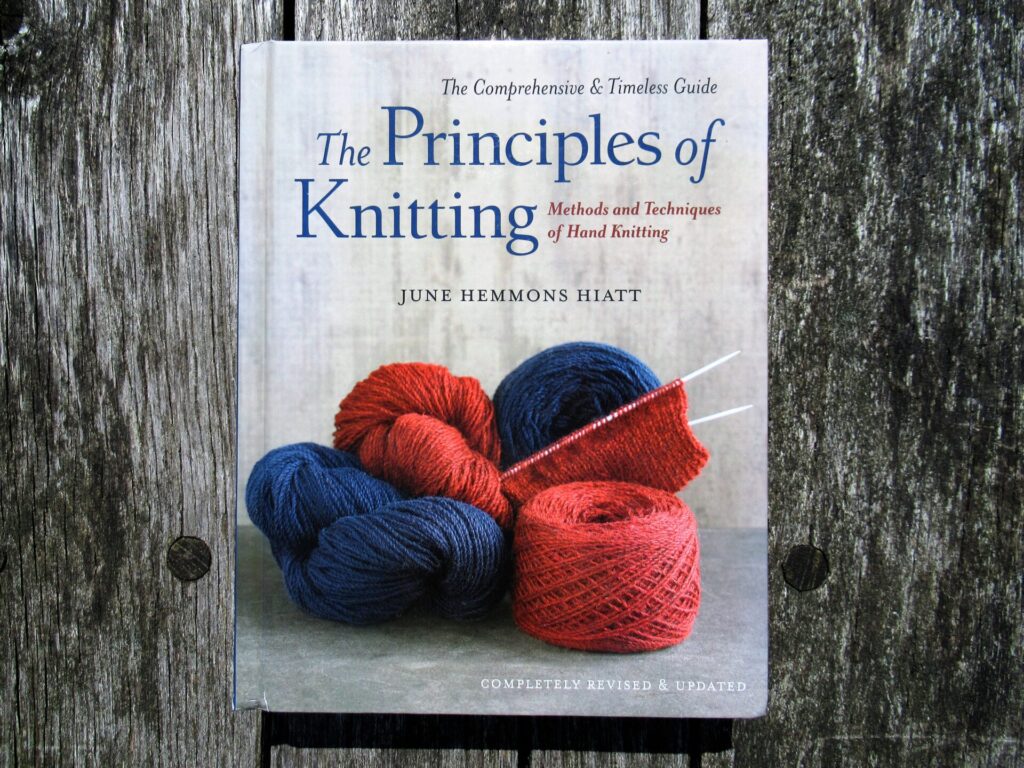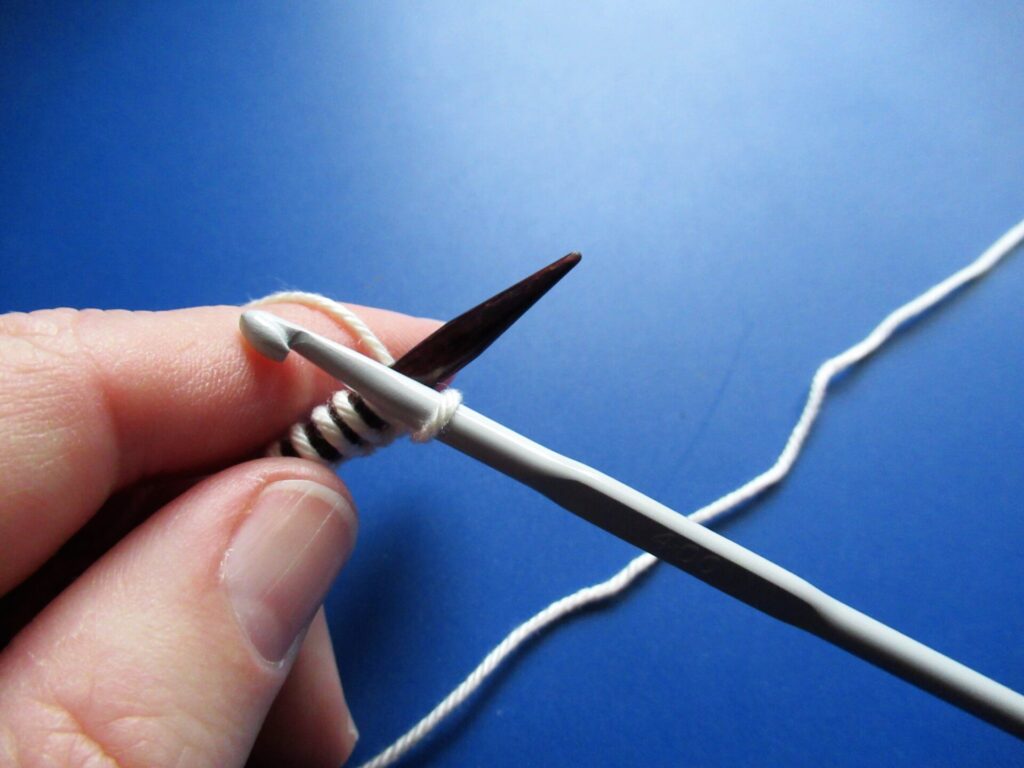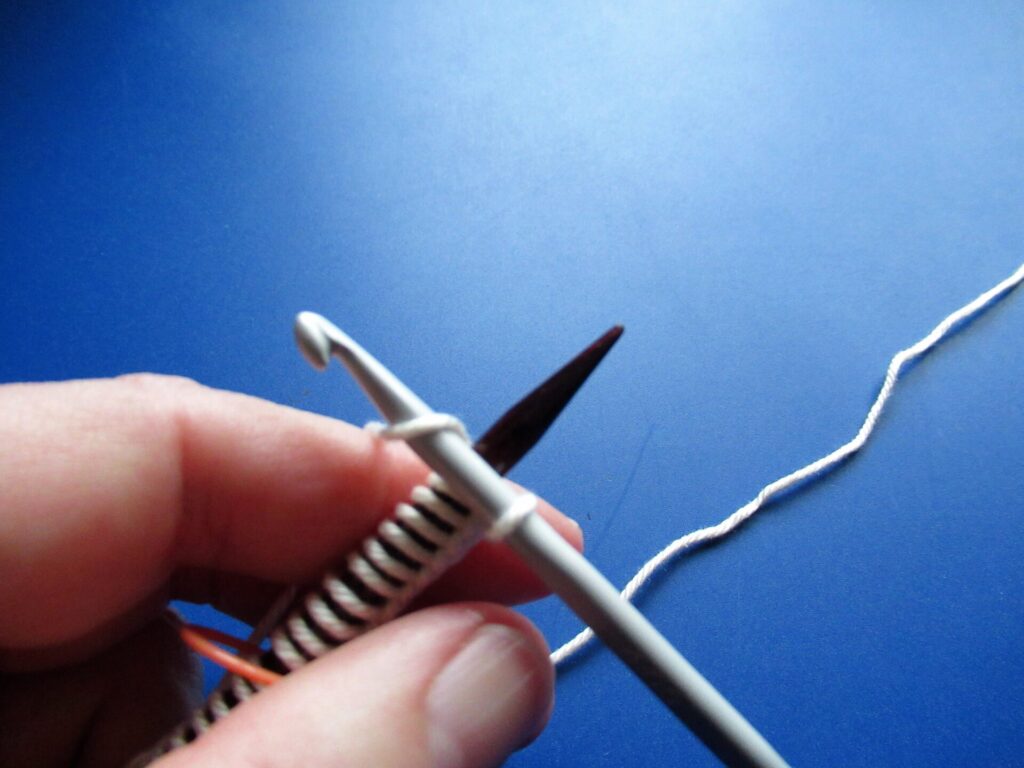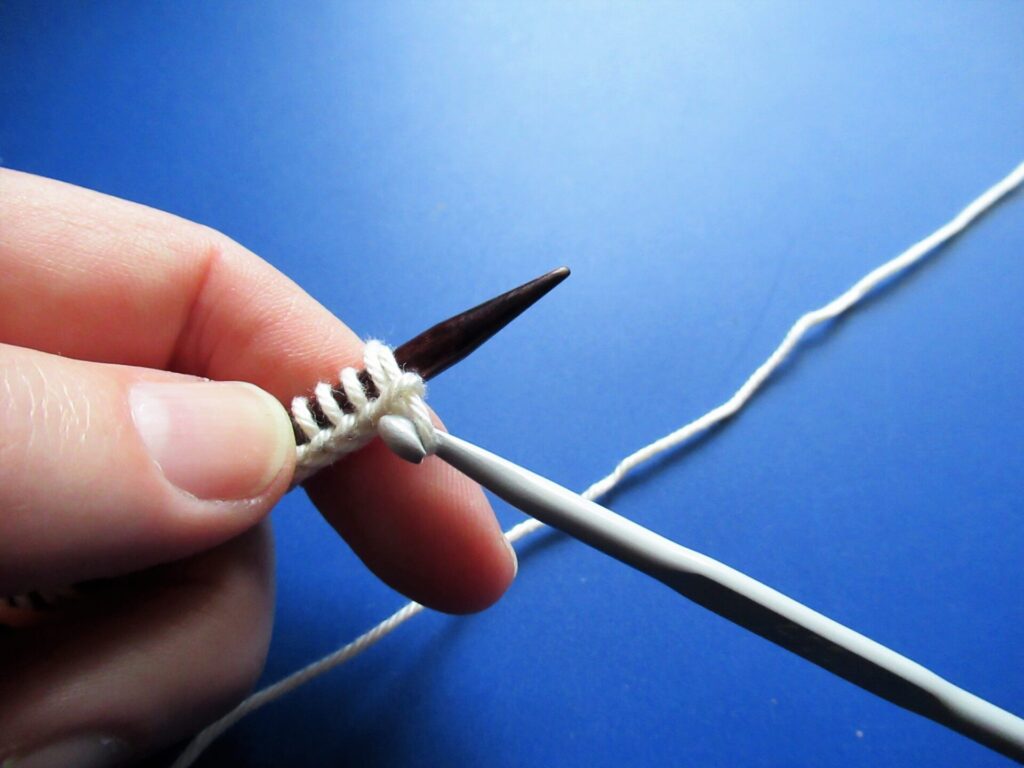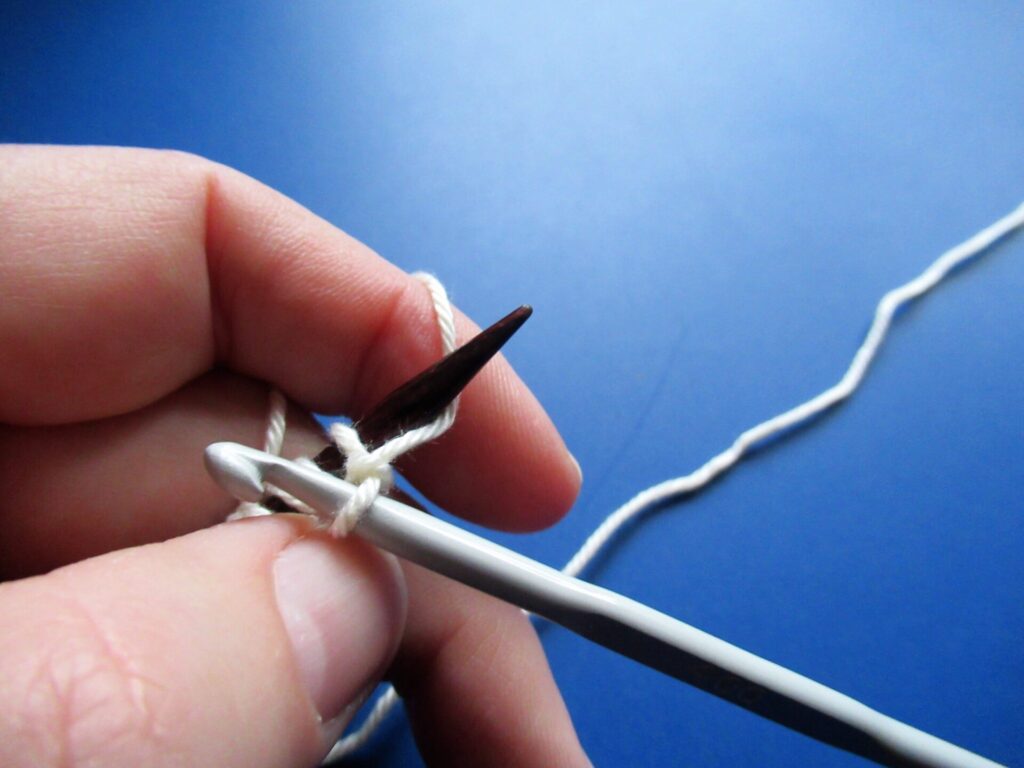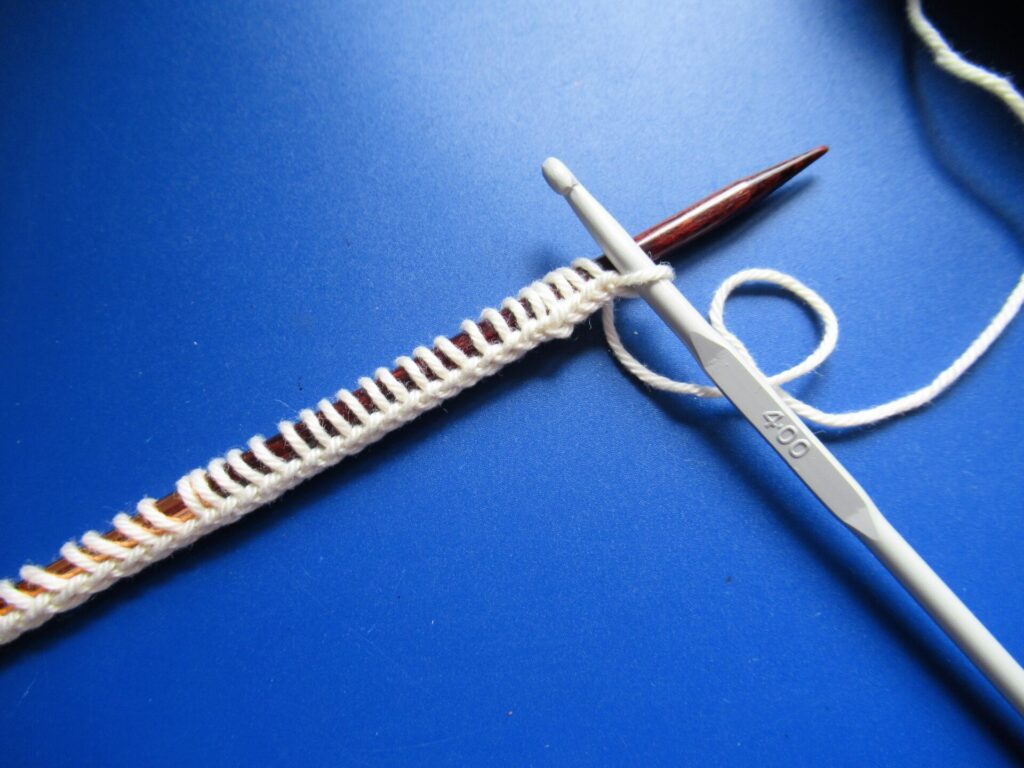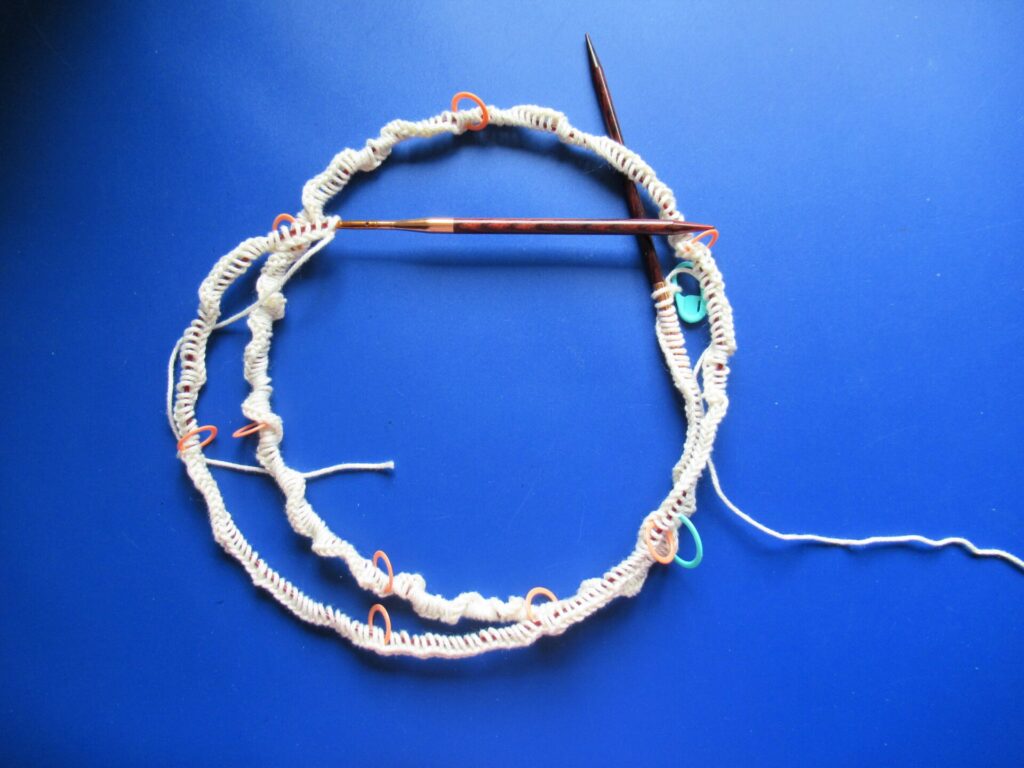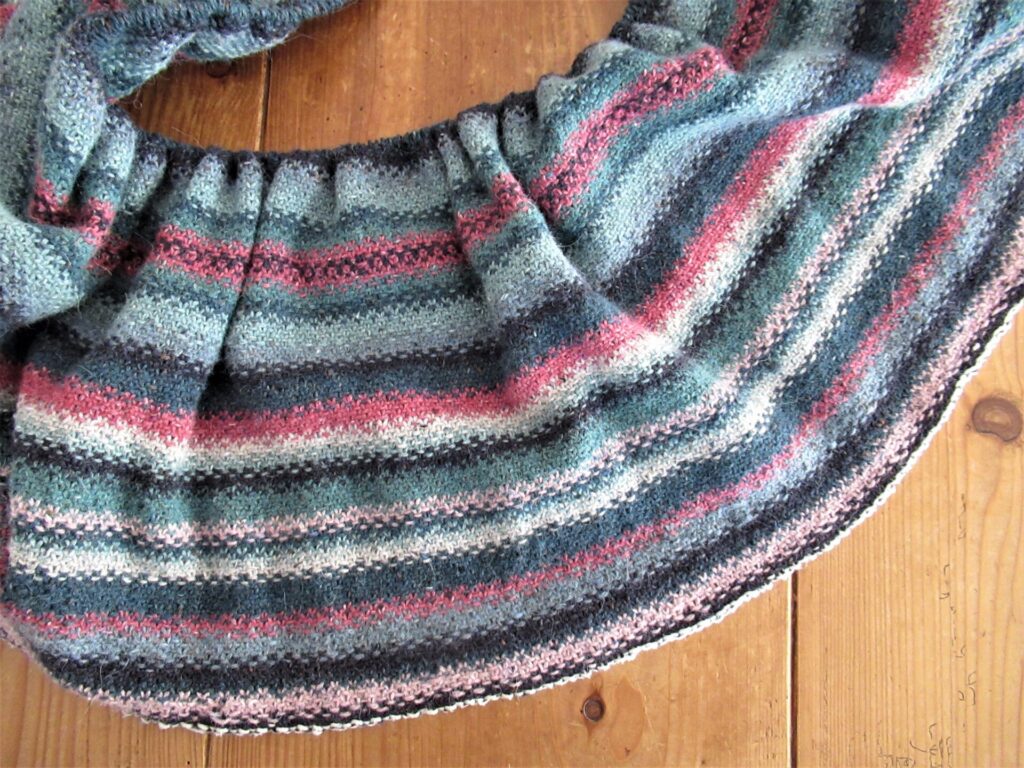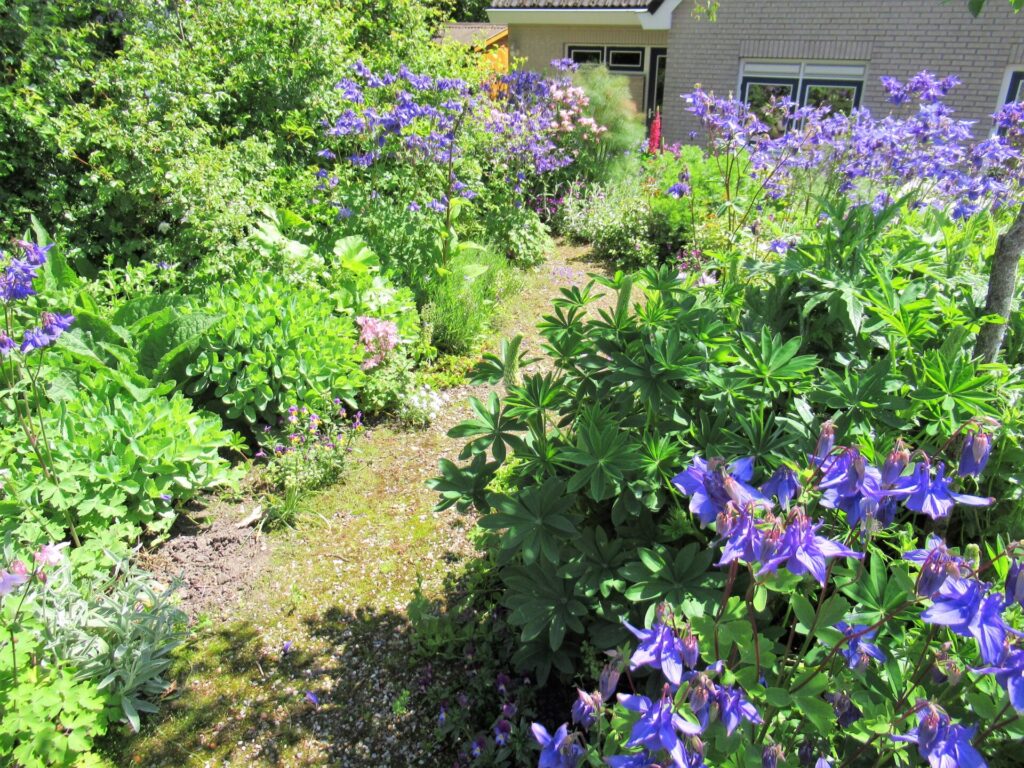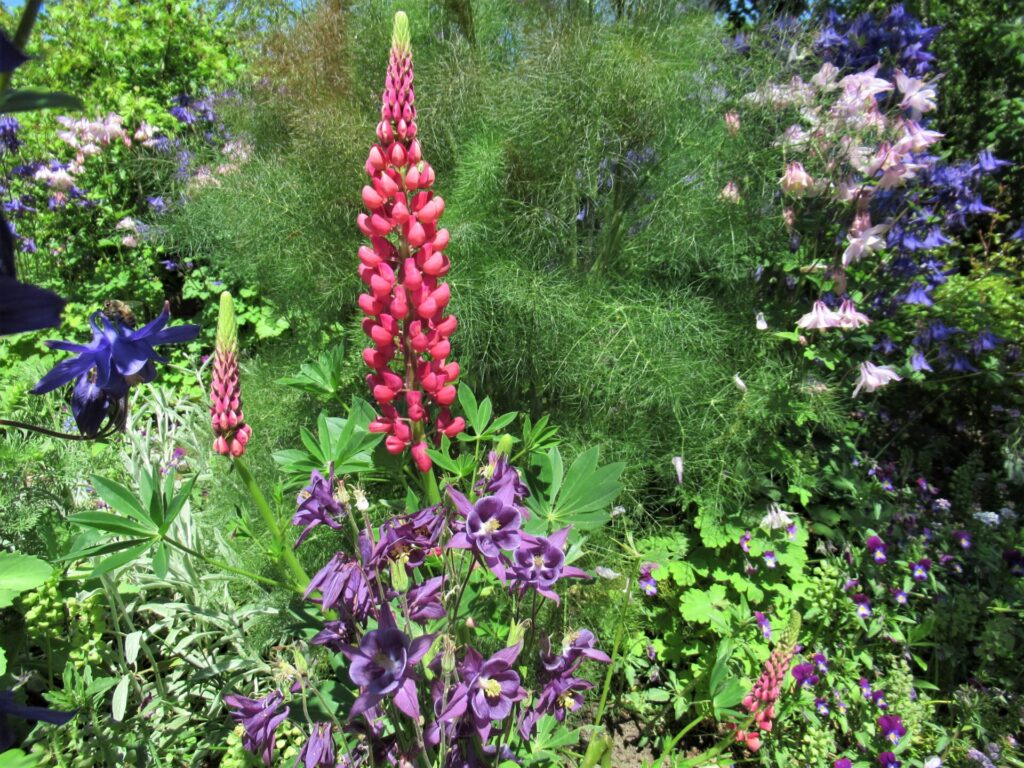
Hello, and welcome to another Place to Sit and Knit. It’s there, under the giant white-and-yellow striped parasol behind the artichokes. I hadn’t planned on writing the second instalment in this series so soon, but couldn’t resist.
It was our niece who brought us here. She has been a student at Nijmegen university for a year now – a lonely year filled with zoom lectures. She rents a room in a house with several other students in a village outside the city. We arrive bearing a basket filled with goodies and a pair of old-fashioned crochet pot holders.
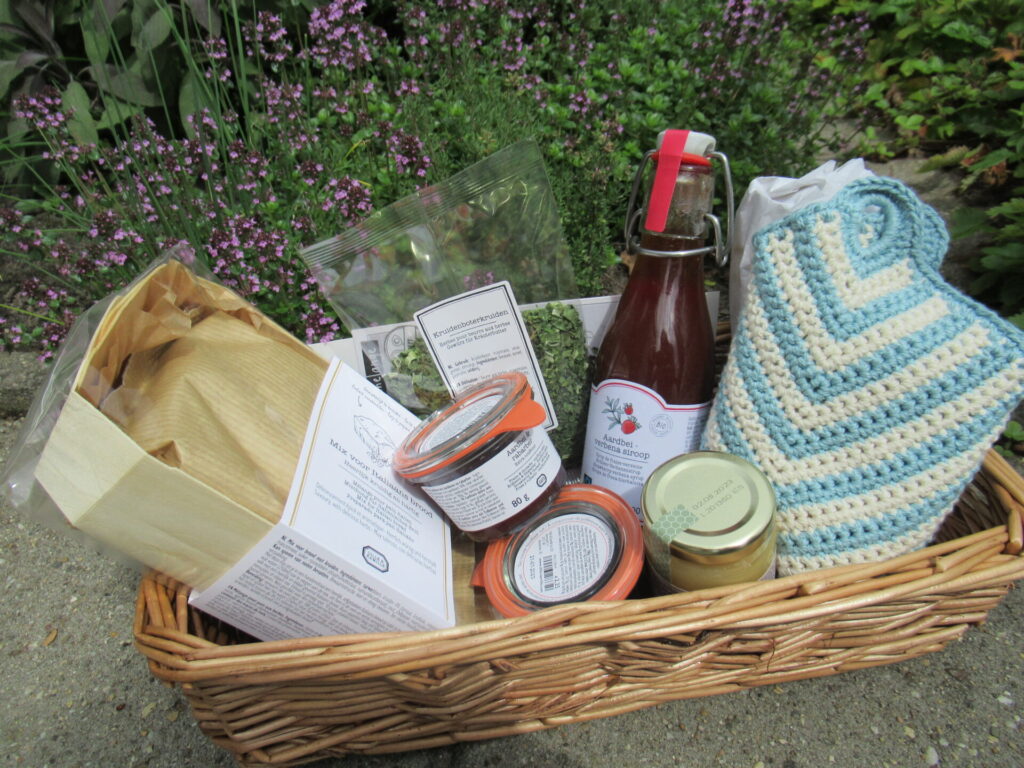
We’ve kept in touch by e-mail, Whatsapp, snailmail and phone, but it is wonderful to see her face IRL again and to finally see where she has been studying so diligently on her own all year. I really, really hope our young people will be able to have a slightly more normal life after the summer.
After several mugs of tea/coffee and a guided tour of the village we paid a visit to the local windmill.
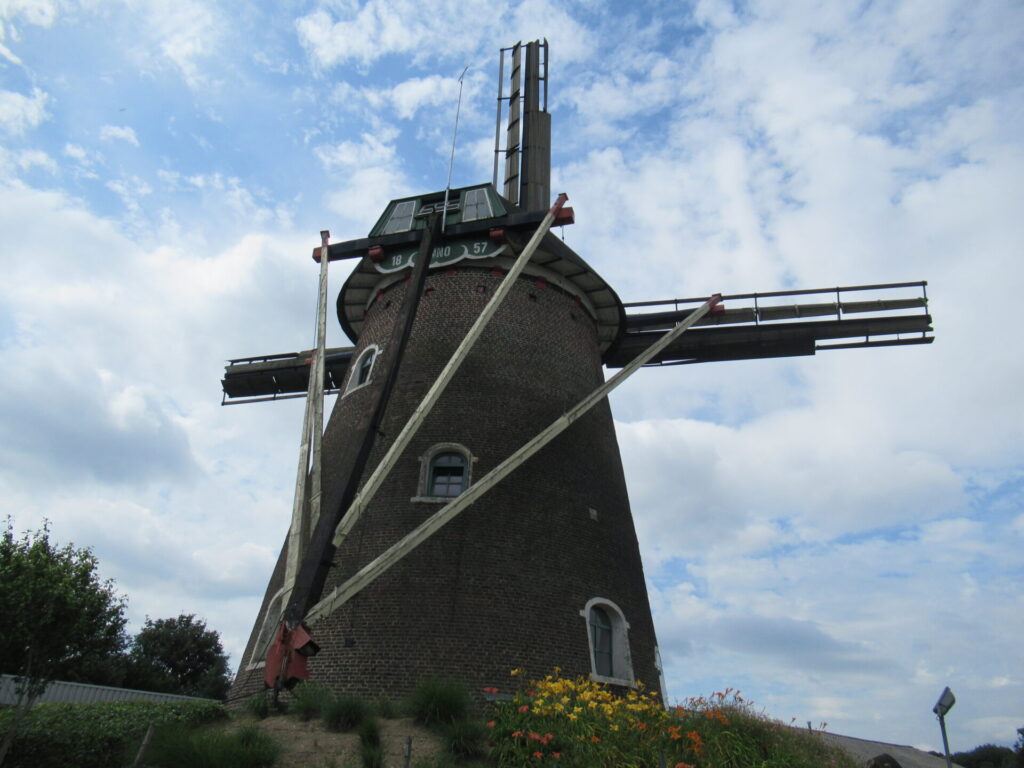
It is no longer functioning, but now houses a shop selling everything a home baker will ever need, from dozens of different kinds of flour to seeds and nuts, dried fruit, yeast, baking tins, proofing baskets and much more.
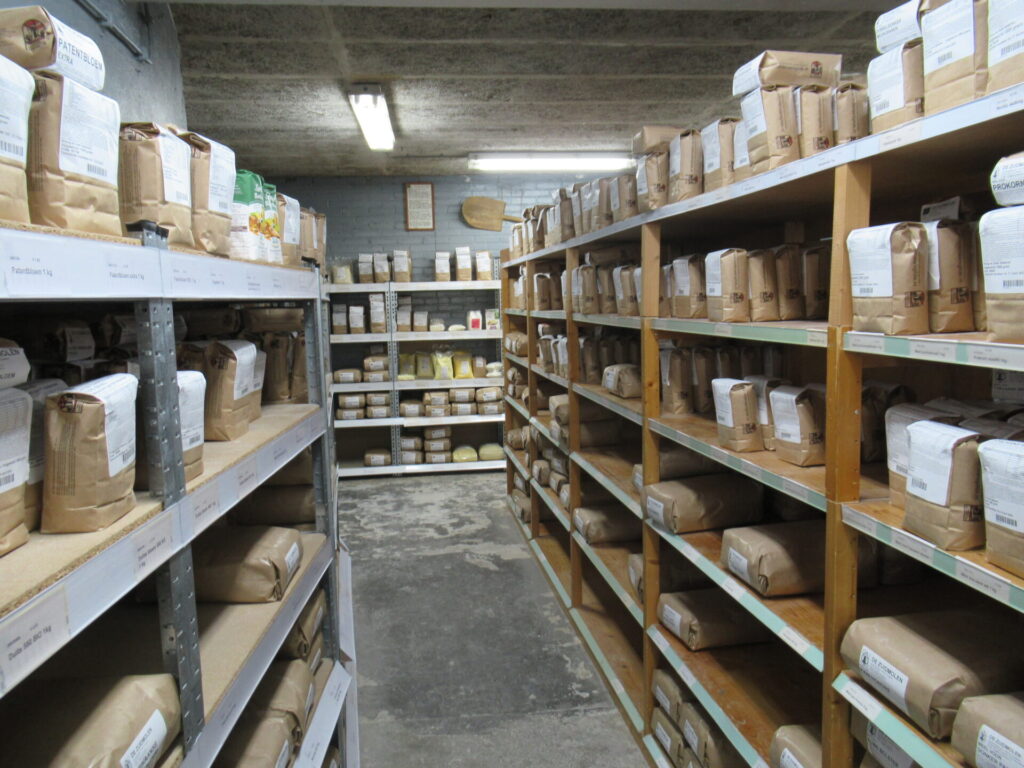
To my husband this is what a yarn shop is to me. This time I was the one waiting patiently outside. (I didn’t mind – I brought my knitting.) This time it was my turn to ask, ‘Did you get everything you wanted? Are you sure you don’t need anything else?’
As we rarely get to this part of the country, we thought we’d better cram as much into our day as possible. So, on to our next stop: Nijmegen Botanical Garden. There are actually two gardens separated by a beech avenue: the botanical garden proper and a flower garden.
On the afternoon of our visit, the bog area of the botanical garden looked like something from a fairy tale.
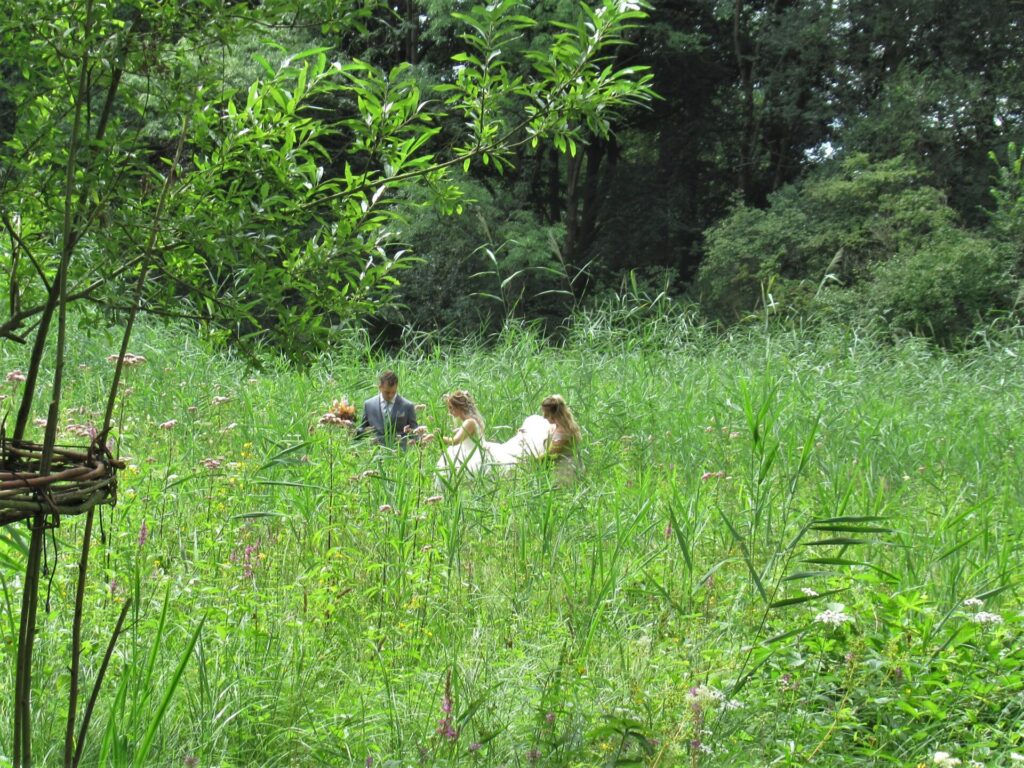
At least from a distance. I hope they’ve been able to keep the wedding dress and the bridegroom’s shoes from getting too muddy and their tempers from getting too frayed. Whose idea was it to take wedding pictures in a bog anyway?
The Friesian horses drawing their fairy tale carriage were pacing back and forth outside the garden, only stopping for me to take a picture.
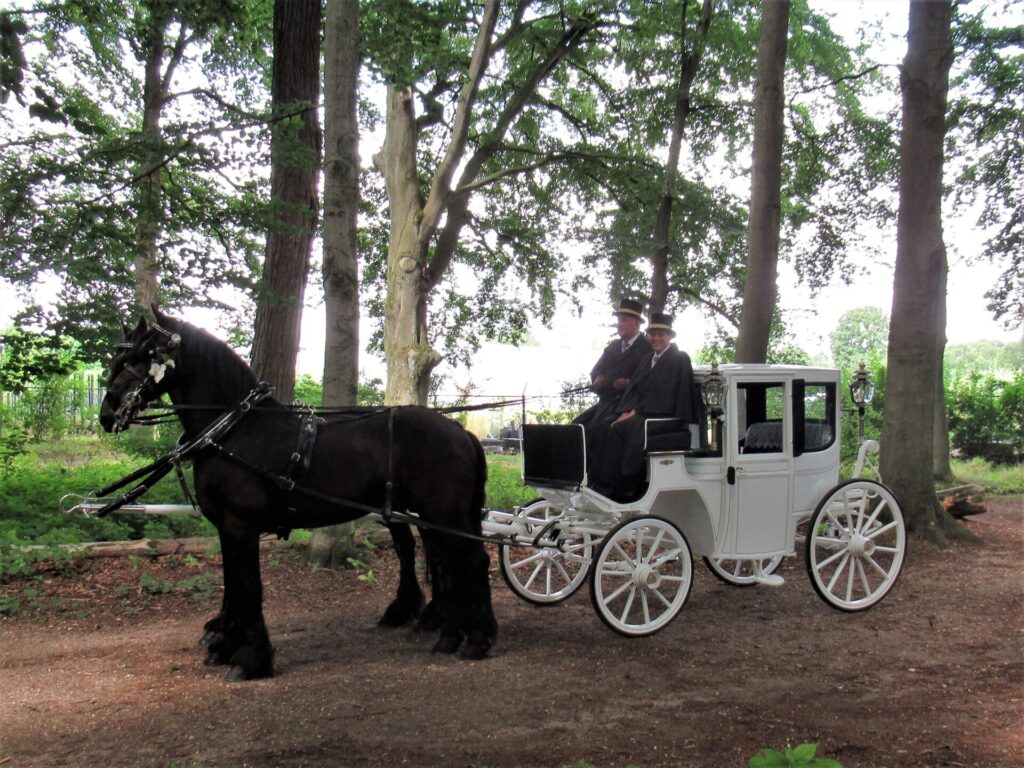
It’s beautiful to look at, but I’m so glad I’ve never had to go through the ordeal of a fairy tale wedding like that.
Today’s Place to Sit and Knit is in the flower garden. There are lots of lovely places to sit and knit here. Ordinary benches surrounded by flowers.
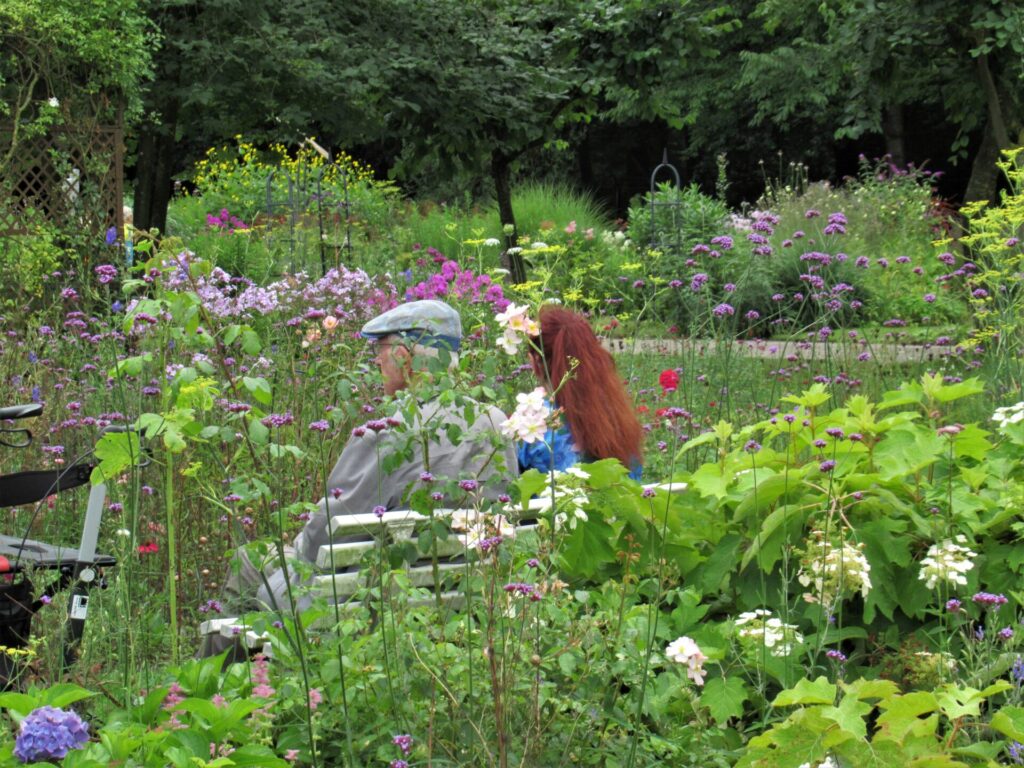
And extraordinary seats covered in foliage.
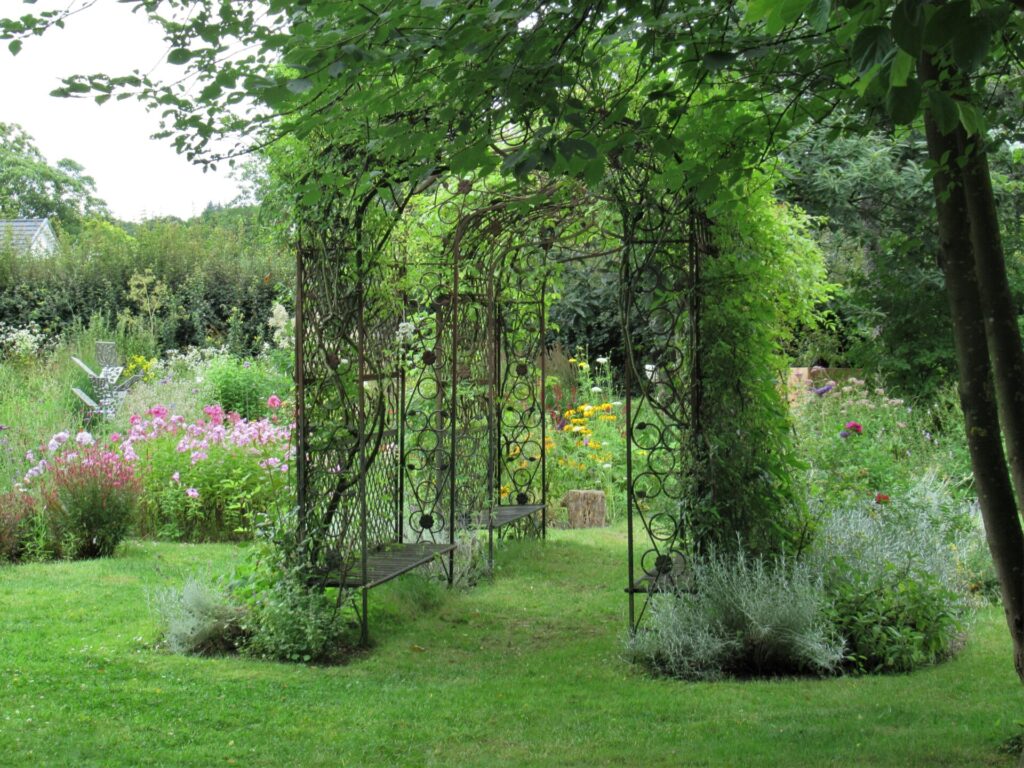
We’re heading for the tables and chairs under the big parasol.
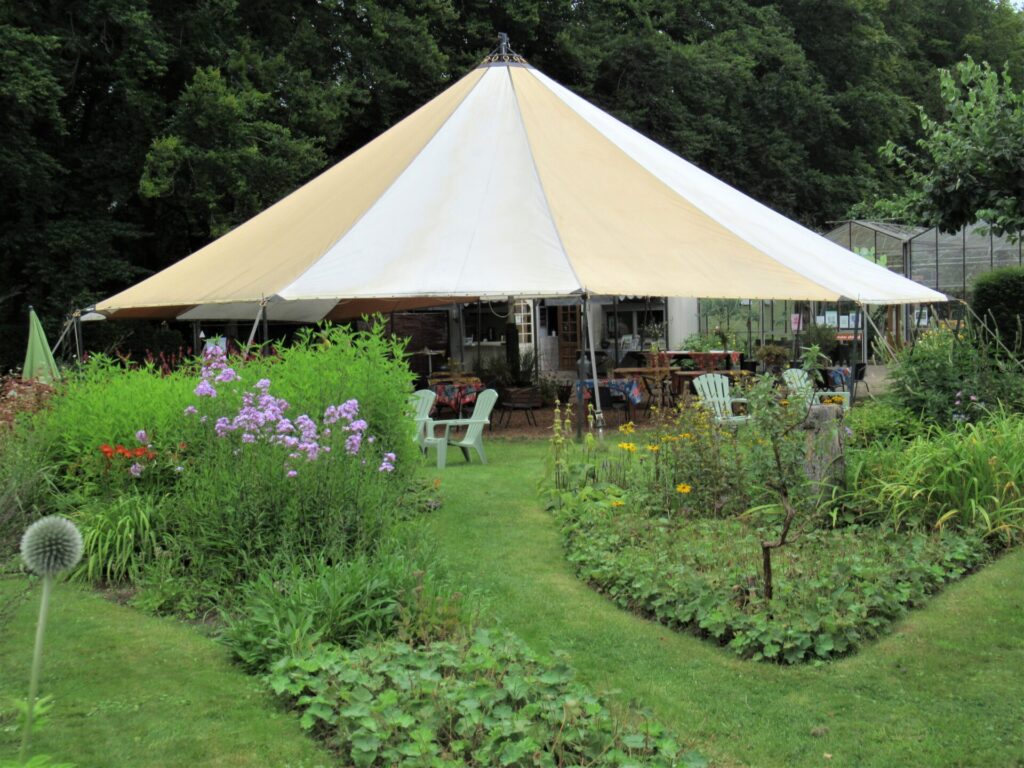
Time for some tea, fruit juice and carrot cake. Did you bring your knitting? What are you making?
I’m ‘working’ on my new shawl design, using a combination of silk/mohair lace yarn and a fingering-weight merino yarn. It doesn’t look like much yet, does it? It’s a work in progress and I’m not ready to show you more at this stage. Sorry! These things always take a long time, at least for me. I plan to have the pattern finished sometime in September. Saying that here out loud feels like giving myself a deadline, and I think that’s a good thing or I’ll stay dithering over the details forever.
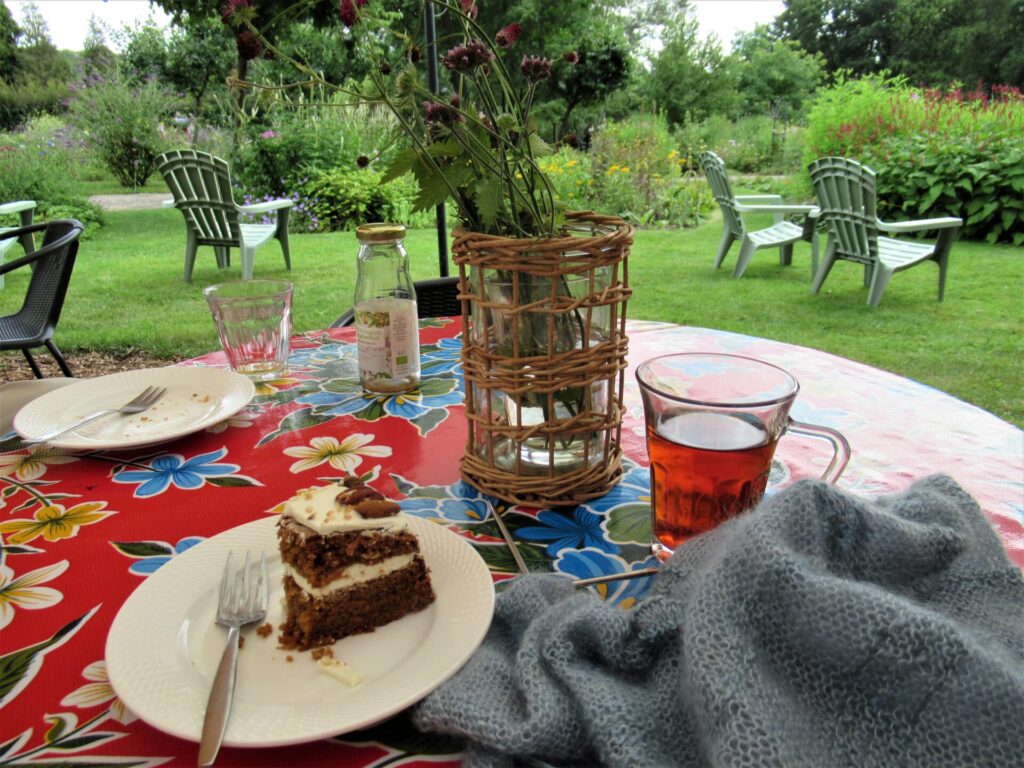
At the first of our Places to Sit and Knit, my blogging friend Helga from Sweden told me about a linen top she is knitting, using a pattern called Siw (Ravelry link). It is an oversized top with a lovely lace panel on the shoulders. It might be just the thing for some linen yarn that has been marinating in my stash for a while.

My yarn is thinner than the yarn used in the pattern, but it may work. I’ll swatch and see.
With the 1,071,226 patterns currently available on Ravelry, it can be hard to decide what to knit. There are all kinds of filters available to help us choose, but for me nothing beats tips and inspiration from friends – real-life knitting friends, Ravelry friends and friends met in the blogosphere. Thanks, Helga! How is your Siw coming along?
It’s nice here, isn’t it, just sitting and knitting, sipping a drink, and enjoying the flowers (click on images to enlarge). And the best thing is: admission is free and you can come back anytime you like!
